Are you sure you want to close the session?
La cuenta ya se encuentra activa
Or enter your e-mail:
Recover your offer
We will send you a 4-digit code shortly
Enter the 4-digit code and your new password
Enter your search here
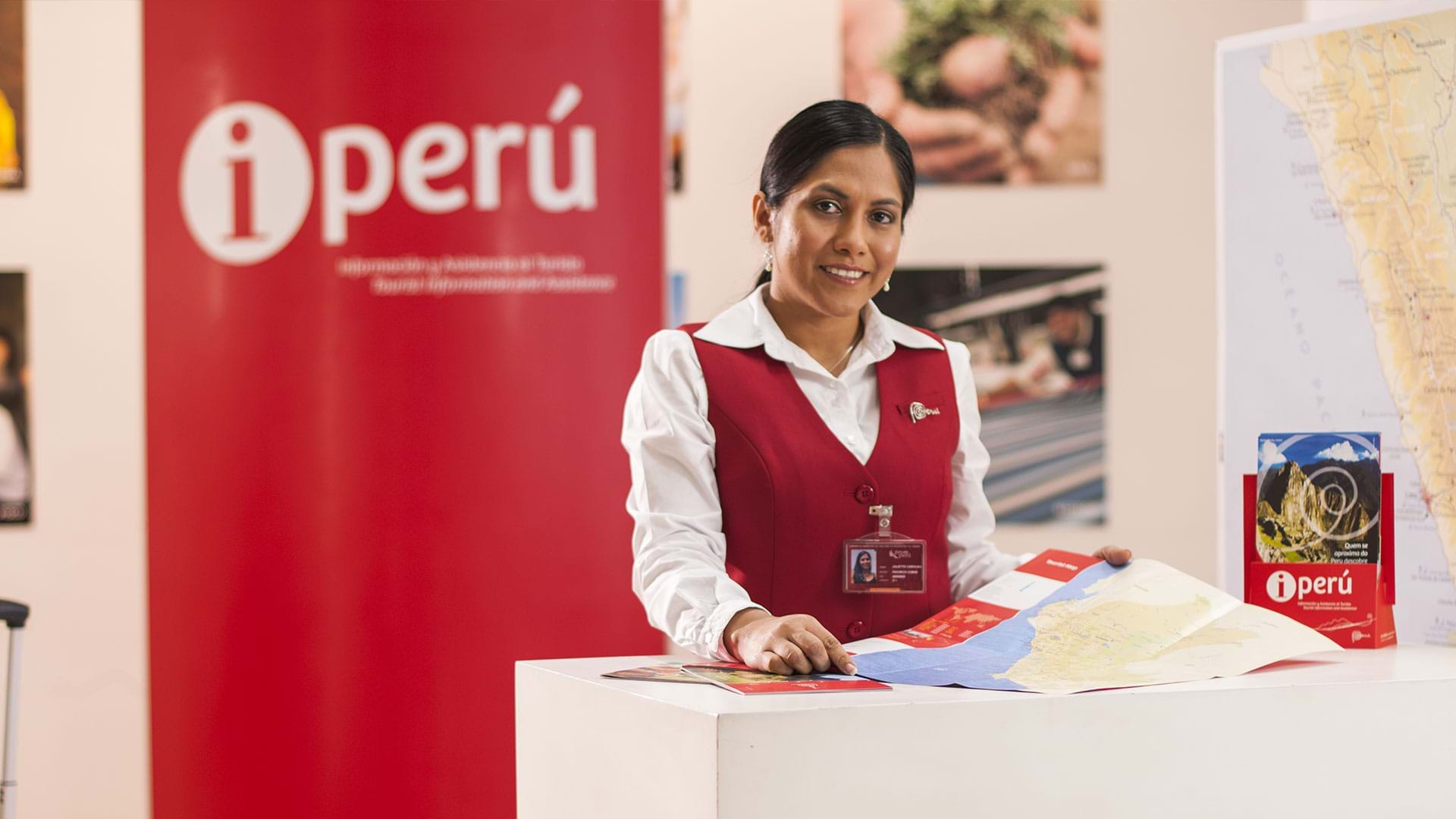
- Visa and entry requirements

Citizens of Argentina, Brazil, Paraguay, Uruguay, Ecuador, Colombia, Bolivia and Chile may enter the country with their national identity document.
iPeru offices Credit: Yayo López / PromPerú
- Useful information
- Dealing with emergencies
- Local security
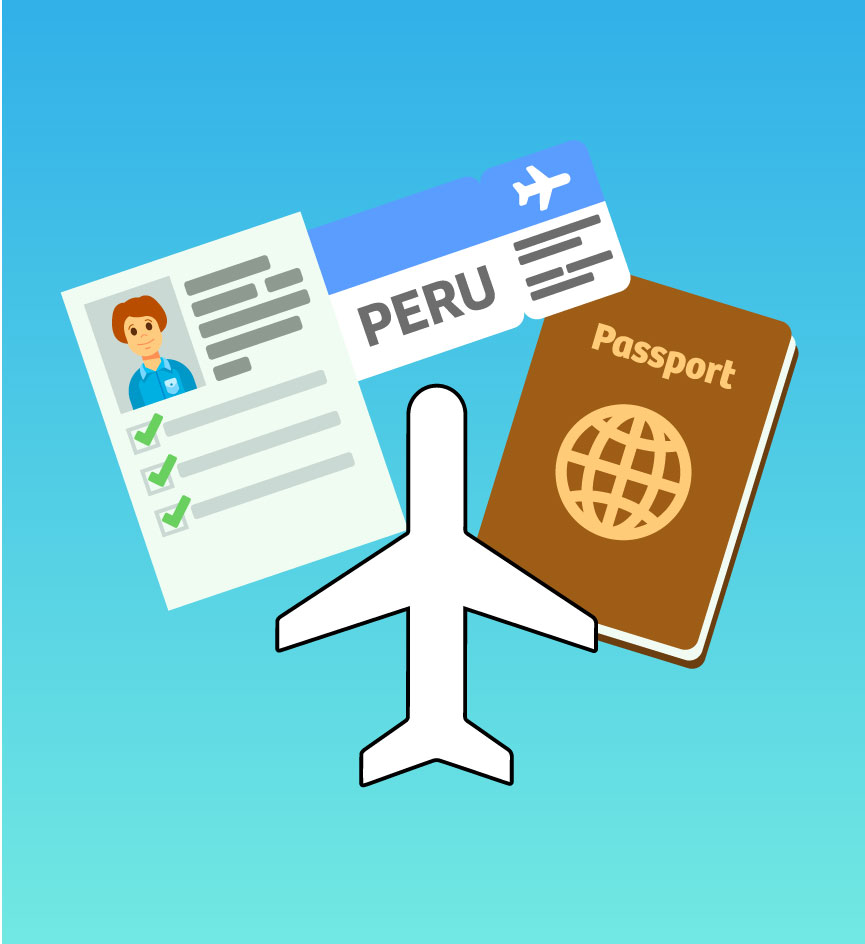
Foreign nationals who wish to enter and/or leave Peruvian territory must present the following:
Citizens of U.S., Canada, United Kingdom of Great Britain and Ireland, and Australia, do not need a Peruvian tourist visa. However, they do need to apply for a business visa to be legally able to enter into contracts or agreements.
They need a passport legitimately issued by a country with a minimum validity of six months from the date of entry into the country.
The maximum length of stay that the authorities grant is 90 days, which cannot be extended.
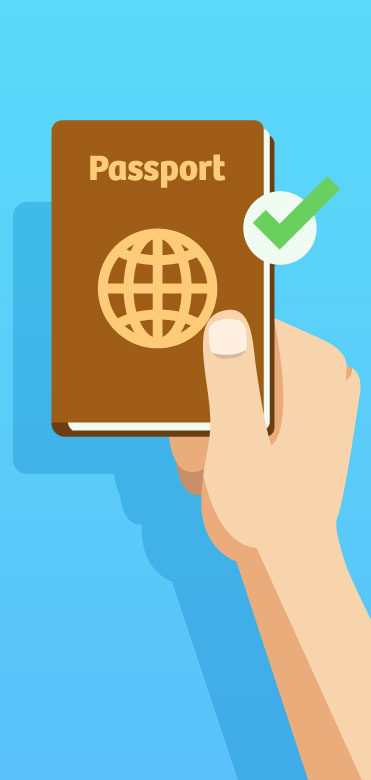
A travel document or Laissez Passer legitimately issued by a country or relating to international treaties and conventions to which Peru is a signatory, for humanitarian reasons.
A valid letter of safe-conduct, legitimately issued by a country and only in exceptional cases as established in international treaties and conventions to which Peru is a signatory, or when approved by the country that issued the letter of safe-conduct, provided that the conditions have been recognized and accepted by the Peruvian authorities. A valid travel document issued by the Peruvian Immigration Department is also valid.
A travel document for refugees and asylum seekers issued by Peru or another country within the framework of the international treaties and conventions to which Peru is a signatory.
Other valid travel documents, conforming to international treaties and conventions to which Peru is a signatory and which regulate and define the circumstances in which they will apply.

Migrations web page

Call (+511) 200 1000
If you wish to stay longer for other reasons, such as business, studying or working, you need to request the relevant visa at a Peruvian consulate or embassy in your own country.

Directory of Peruvian Consulates Abroad

Directory of Peruvian Embassies Abroad
To know if you need a visa, click here.

In accordance with Peruvian customs regulations, all new and used articles that a traveler may reasonably require for his or her own use or consumption, and that due to their nature, quantity and type do not appear to be for commercial use, are exempt from duty.
For more information, see the list of exempt goods here.
When entering Peru, a traveler must correctly complete the Baggage Declaration if he or she has articles or goods to declare. All articles that are subject to tax must be listed.
Update April 12, 2024
Information for u.s. citizens in the middle east.
- Travel Advisories |
- Contact Us |
- MyTravelGov |
Find U.S. Embassies & Consulates
Travel.state.gov, congressional liaison, special issuance agency, u.s. passports, international travel, intercountry adoption, international parental child abduction, records and authentications, popular links, travel advisories, mytravelgov, stay connected, legal resources, legal information, info for u.s. law enforcement, replace or certify documents.
Before You Go
Learn About Your Destination
While Abroad
Emergencies
Share this page:
Travel Advisory November 15, 2023
Peru - level 2: exercise increased caution.
Last Update: Reissued with updates to crime information.
Exercise increased caution due to crime, civil unrest, and the possibility of kidnapping . Some areas have increased risk. Read the entire Travel Advisory.
Do not travel to:
- The Colombian-Peruvian border area in the Loreto Region due to crime .
- The Valley of the Apurímac, Ene, and Mantaro Rivers (VRAEM), including areas within the Departments of Ayacucho, Cusco, Huancavelica, and Junin, due to crime and terrorism .
Country Summary : Crime, including petty theft, carjackings, muggings, assaults, and other violent crime, is common in Peru and can occur during daylight hours despite the presence of many witnesses. Kidnapping is rare, but does occur. The risk of crime increases at night. Organized criminal groups have been known to use roadblocks to rob victims in areas outside of the capital city of Lima.
Demonstrations occur regularly throughout the country. Public demonstrations can take place for a variety of political and economic issues. Demonstrations can cause the shutdown of local roads, trains, and major highways, often without prior notice or estimated reopening timelines. Road closures may significantly reduce access to public transportation and airports and may disrupt travel both within and between cities.
U.S. travelers participating in Ayahuasca and Kambo ceremonies should be aware that numerous persons, including U.S. citizens, have reported that while under the influence of these substances, they have witnessed or been victims of sexual assault, rape, theft, serious health problems and injuries, and even death.
Currently, U.S. government personnel cannot travel freely throughout Peru for security reasons . Read the country information page for additional information on travel to Peru.
If you decide to travel to Peru:
- Be aware of your surroundings.
- Monitor local media for breaking events and adjust your plans as needed.
- Enroll in the Smart Traveler Enrollment Program ( STEP ) to receive Alerts and make it easier to locate you in an emergency.
- Follow the Department of State on Facebook and Twitter .
- Follow the U.S. Embassy on Facebook and Twitter .
- Review the U.S. Embassy webpage .
- Review the Country Security Report for Peru.
- Prepare a contingency plan for emergency situations. Review the Traveler’s Checklist .
- Visit the CDC page for the latest Travel Health Information related to your travel.
Colombian-Peruvian border area in the Loreto Region – Level 4: Do Not Travel
Drug trafficking and other criminal activity, combined with poor infrastructure, limits the capability and effectiveness of Peruvian law enforcement in this area.
The U.S. government has limited ability to provide emergency services to U.S. citizens as U.S. government personnel are restricted from traveling within 20 kilometers of the border with Colombia in the Loreto region, except on the Amazon River itself, without permission. This includes travel on the Putumayo River, which forms most of the Peru-Colombia border.
U.S. government personnel must receive advance permission for any travel to the Peruvian-Colombian border.
Valley of the Apurímac, Ene, and Mantaro Rivers (VRAEM) includes areas within the Departments of Ayacucho, Cusco, Huancavelica, and Junin – Level 4: Do Not Travel
Remnants of the Shining Path terrorist group are active in the VRAEM. The group may attack with little or no warning, targeting Peruvian government installations and personnel.
Drug trafficking and other criminal activity, combined with poor infrastructure, limit the capability and effectiveness of Peruvian law enforcement in this area.
U.S. government personnel are restricted from traveling in the VRAEM except for certain areas during daylight hours. U.S. government personnel must receive advance permission for any travel to the VRAEM. The U.S. government has limited ability to provide emergency services to U.S. citizens due to these travel restrictions.
Visit our website for Travel to High-Risk Areas .
Embassy Messages
View Alerts and Messages Archive
Quick Facts
Must have six months validity at time of entry.
One page required for entry stamp.
Free, issued at the port of entry.
None Required.
$30,000 USD. More than $10,000 USD must be declared upon entry.
Same as entry.
Embassies and Consulates
U.S. Embassy Lima Avenida La Encalada cdra. 17 s/n Surco, Lima 33 Peru Telephone: + (51)(1) 618-2000 Emergency After-Hours Telephone: + (51)(1) 618-2000 Fax: + (51) (1) 618-2724 Email: [email protected]
U.S. Consular Agency - Cusco Av. El Sol 449, Suite #201 Cusco, Peru Telephone: + (51)(84) 231-474 Emergency After-Hours Telephone: + (51)(1) 618-2000 Fax: + (51)(84) 245-102
Email: [email protected]
Destination Description
See the Department of State’s Fact Sheet on Peru for information on U.S.-Peru relations.
Entry, Exit and Visa Requirements
COVID-19 Requirements
- There are no COVID-related entry requirements for U.S. citizens.
Requirements for Entry :
- A passport with six months validity is required to enter Peru. Migraciones (Immigration) authorities may also require evidence of return/onward travel.
- Be sure your date and place of entry is officially documented by Migraciones, whether you arrive at a port, airport, or land border.
- Your length of approved stay will be determined by border officials at the time of entry, and can range from 30 to 183 days. Extensions for tourists are usually not approved, and overstays result in fines.
- The Embassy is unable to assist if you are denied entry. Peruvian immigration requires airlines to return travelers who are denied entry to their point of origin.
Requirements for Exit :
- If you do not have an entry record, you will not be allowed to exit the country until immigration authorities confirm the time and place of your entry into the country. This can be a difficult process, costing considerable time and money to resolve.
- Make sure Migraciones (Immigration) records your entry, and then save the record for your exit. An entry record is required even at remote border crossings, where often the proper officials are not present.
- Immediately report lost/stolen passports to local police and keep the report. You must apply for a new passport at the Embassy and obtain a replacement entry record from Migraciones using your police report prior to exiting Peru.
Travel with Minors : Regardless of nationality, all children who are traveling with both birth parents are required to have a valid passport and the necessary visa or citizenship of the country where they are traveling. Peruvian immigration procedures are complex for minors traveling without one or both parents/legal guardians.
For entry/exit from Peru, U.S. citizen minors under the age of 18, traveling alone (or with only one parent), generally do not require additional documentation if entering as a tourist for less than 183 days. However, if the stay lasts more than 183 days, then a Permiso Notarial de Viaje is required (see below).
U.S. citizen minors who are dual national Peruvians, traveling alone (or with only one parent), require a Permiso Notarial de Viaje. Furthermore, step-parents or guardians accompanying a dual U.S.-Peruvian citizen minor must provide a Permiso Notarial de Viaje from the non-traveling minor’s parents (as listed on the birth certificate). Finally, if an accompanying parent has sole custody, legal documentation is required (such as a foreign court-approved custody document stating sole custody, a death certificate, a Peruvian court-approved document for travel, or a birth certificate listing only one parent).
A Permiso Notarial de Viaje is a written, notarized authorization from the non-traveling parent(s). Peruvian immigration will not accept a document notarized by the U.S. Embassy or a document notarized by a U.S. notary in lieu of a Permiso Notarial de Viaje. Please be aware that these authorizations are valid for 30 days and one trip only.
How to get a Permiso Notarial de Viaje:
- In the United States, at the nearest Peruvian Consulate. There are multiple locations .
- In Peru, at most Peruvian notaries. An apostilled U.S. birth certificate is required for issuance.
The U.S. Embassy is unable to assist travelers who are prevented from traveling for lack of a Permiso Notarial de Viaje.
HIV Restrictions : The U.S. Department of State is unaware of any HIV/AIDS entry restrictions for visitors to, or foreign residents of, Peru.
Find information on dual nationality , prevention of international child abduction , and customs regulations on our websites.
Safety and Security
Terrorism: Terrorist groups and those inspired by such organizations are intent on attacking U.S. citizens abroad. Terrorists are increasingly using less sophisticated methods of attack – including knives, firearms, and vehicles – to more effectively target crowds. Frequently, their aim is unprotected or vulnerable targets, such as:
- High-profile public events (sporting contests, political rallies, demonstrations, holiday events, celebratory gatherings, etc.)
- Hotels, clubs, and restaurants frequented by tourists
- Places of worship
- Schools
- Parks
- Shopping malls and markets
- Public transportation systems (including subways, buses, trains, and scheduled commercial flights)
U.S. Embassy Lima enforces a Restricted Travel Policy for Embassy personnel, which is based on its assessment of conditions and developments throughout the country. See the Overseas Security and Advisory Council’s Country Security Report for Peru. See the latest Travel Advisory for Peru .
The VRAEM (Valley of the Apurímac, Ene, and Mantaro Rivers) is particularly remote and a known safe haven for narcotraffickers and the last operational remnants of the Shining Path terrorist group.
For more information, see our Terrorism page.
Crime : Crime is a widespread problem in Peru.
- Sexual assaults and rapes can occur, even in tourist areas. Travel in groups, do not leave food or drinks unattended, and use caution if a stranger offers you food or drink.
- Intoxicated travelers, including U.S. citizens, also have been sexually assaulted, injured, or robbed while under the influence of drugs and alcohol.
- Pick-pocketing, robbery, and hotel room theft are the most common crimes. Armed robberies have occurred throughout the city, including popular tourist destinations. Armed assailants usually target victims for their smartphones, wallets, or purses. If confronted by someone with a weapon, it is best not to resist.
- Incapacitating drugs, such as rohypnol and scopolamine, have been used to facilitate robberies and sexual assaults. Seek medical attention if you begin to feel ill.
- On routes to and from the airport in Lima, robberies have occurred where the assailant uses a tool to break a window while the vehicle is stopped in traffic. Keep your belongings in the trunk or out of sight. Authorized taxi booths are present at the airport in Lima that will charge a flat rate according to the destination.
- Use hotel safes, if available. Avoid wearing obviously expensive jewelry or clothing, and carry only the cash or credit cards that you need.
- Stay alert in crowds and on public transportation. Be aware that thieves might create distractions to target you.
- Avoid isolated areas when on foot, especially after dark.
- Be alert for robberies in which criminals enter a taxi and force victims to withdraw money from ATMs.
- Use an app-based taxi service, order a taxi by phone, or use a service affiliated with a major hotel, as it is usually safer than hailing an unknown taxi on the street.
- Use ATMs in well-protected indoor areas such as banks or shopping malls. Avoid withdrawing large amounts of cash at one time.
- Do not let your credit card out of your sight in order to avoid credit card “skimming.” You should expect the vendor to use a credit card reader in your presence. The vendor will ask for your passport or ID number on the receipt.
- To avoid carjacking or theft from your car while you are stopped at intersections, drive with your doors locked and windows rolled up. Do not leave valuables in plain view.
There is little government presence in many remote areas of the Andes and Amazon basin. Illicit activities, such as illegal mining, logging, and coca production, are common.
Drug trafficking and other criminal activity, combined with poor infrastructure, limit the capability and effectiveness of Peruvian law enforcement in these areas.
The U.S. government has limited ability to provide emergency services to U.S. citizens along the Colombian border and in the VRAEM, as U.S. government personnel are restricted from traveling in these regions.
Demonstrations occur frequently. They may take place in response to political or economic issues, on politically significant holidays, and during international events.
- Demonstrations can be unpredictable; avoid areas around protests and demonstrations.
- Past demonstrations have turned violent.
- Check local media for updates and traffic advisories.
International Financial Scams: See the Department of State and the FBI pages for information.
Financial scams are prevalent in Peru. Scams are often initiated through Internet postings/profiles or by unsolicited emails and letters. Scammers almost always pose as U.S. citizens who have no one else to turn to for help. Common scams include:
- Money transfers
- Grandparent/Relative targeting
Victims of Crime : U.S. citizen victims of sexual assault are encouraged to contact the U.S. Embassy for assistance. Report crimes to the local police and contact the U.S. Embassy in Lima. Remember that local authorities are responsible for investigating and prosecuting crime.
- U.S. Embassy: +51-1-618-2000 (phone is answered 24 hours a day, seven days a week)
- Local police: 105 (National Police)
- Tourist Police: 0800-22221
- IPeru: 01-574-8000 (a tourist information service that has English-speaking personnel)
See our webpage on help for U.S. victims of crime overseas .
- Help you find appropriate medical care.
- Assist you with reporting a crime to the police.
- Contact relatives or friends with your written consent.
- Provide general information regarding the victim’s role during the local investigation and following its conclusion.
- Provide a list of local attorneys.
- Provide information on victims’ compensation programs in the United States .
- Provide information on assistance programs for victims of crime in Peru .
- Provide an emergency loan for repatriation to the United States and/or limited medical support in cases of destitution.
- Help you find accommodation and arrange flights home.
- Replace a stolen or lost passport.
Domestic Violence : U.S. citizen victims of domestic violence are encouraged to contact the Embassy for assistance. Telephone (answered 24 hours): +51-1-618-2000
Tourism : The tourism industry, including adventure activities (e.g. paragliding, sandboarding, etc.), is unevenly regulated, and safety inspections for equipment and facilities do not commonly occur. Hazardous areas/activities are not always identified with appropriate signage, and staff may not be trained or certified either by the host government or by recognized authorities in the field. U.S. citizens are encouraged to pay attention to waiver and liability policies of tour companies, as they may vary or not exist. In the event of an injury, appropriate medical treatment is typically available only in/near major cities. First responders are generally unable to access areas outside of major cities and to provide urgent medical treatment. U.S. citizens are encouraged to purchase medical evacuation insurance .
Local Laws & Special Circumstances
Criminal Penalties : You are subject to local laws. If you violate local laws, even unknowingly, you may be expelled, arrested, or imprisoned. Individuals establishing a business or practicing a profession that requires additional permits or licensing should seek information from the competent local authorities prior to practicing or operating a business.
Ayahuasca/Kambo/Hallucinogens: Traditional hallucinogens, often referred to as ayahuasca or kambo, are often marketed to travelers as “ceremonies” or “spiritual cleansing,” and typically contain dimethyltryptamine (DMT), a strong hallucinogen that is illegal in the United States and many other countries.
- Intoxicated travelers, including U.S. citizens, have been sexually assaulted, injured, or robbed while under the influence of these substances.
- Health risks associated with ayahuasca are not well understood, and, on occasion, U.S. citizens have suffered serious illness or death after taking these drugs.
- These incidents often occur in remote areas and far away from modern medical facilities, making the risks even greater.
- Penalties for possessing, using, or trafficking in illegal drugs in Peru are severe.
- Offenders can expect long pre-trial detention and lengthy prison sentences under harsh conditions with significant expense for themselves and/or their families.
- Never agree to carry a suitcase or package through customs for anyone.
- Peru uses strict screening procedures for detecting narcotics smuggling at its international airports.
Customs Currency Regulations :
- $30,000 USD or its equivalent in cash or negotiable items is the maximum allowed for entry or exit.
- Any amount in excess of $10,000 USD must be declared and the legal source proven.
Artifacts :
- Peruvian law forbids the export of pre-Columbian objects and other artifacts protected by cultural patrimony statutes.
- U.S. customs officials are required to seize pre-Columbian objects and certain colonial religious artwork brought into the United States.
Animal Products/Plants :
- Avoid products made of wild plants and animals, as many are of illegal origin and may involve protected or endangered species, whose sale and export are illegal.
- Peruvian authorities will seize any protected species that is sold or transported, either live or transformed into food, medicinal beverages, leather, handcrafts, garments, etc.
- Some products, including live animals, require special permits when leaving Peru.
- Knowingly importing into the United States wildlife or plants that were taken from the wild or sold in violation of the laws of Peru (or any other country) is a violation of the Lacey Act (16 USC § 3371).
Furthermore, some laws are also prosecutable in the United States, regardless of local law. For examples, see our website on crimes against minors abroad and the Department of Justice website.
Arrest Notification : If you are arrested or detained, ask police or prison officials to notify the U.S. Embassy immediately. See our webpage for further information.
Special Circumstances : Many popular destinations in Peru are remote. These areas have few facilities that are able to provide advanced or emergency medical care.
- Local rescue capabilities are severely limited. Many mountain areas are too high for helicopters to reach safely. Accidents or injuries while hiking or climbing are common; crisis responders may take hours or even days to reach you if they are traveling over great distances and/or rough terrain.
- When using tourist company services, travelers are encouraged to use qualified and licensed operators. Many do not meet international safety standards. Inquire about safety standards prior to engaging in adventure activities. The Ministerio de Comercio Exterior y Turismo (Tourism Ministry) website provides information on tourism companies.
- Always check with local authorities before traveling about local geographic, climatic, health, and security conditions that may impact your safety.
- Be aware that you may not have access to phone or internet for days at a time. Check in with family prior to going to remote areas and leave detailed written plans and timetables. Use of a personal GPS beacon is encouraged.
Seismic Activity : Earthquakes are common throughout Peru. On May 26, 2019, a magnitude 8.0 earthquake struck the Loreto region of Peru. One fatality in the Cajamarca region and 11 injuries as well as isolated power outages and some infrastructure damage were reported.
- Visit Peru’s National Emergency Operations Center (COEN) for more information.
- In the event of a natural disaster, monitor local media and government agencies, including IPeru , the Commission to Promote Peru for Exports and Tourism (PROMPERU) , and Peru’s National Meteorology and Hydrology Service (SENAMHI) for updates.
- WhatsApp: IPeru +51-944-492-314
- Twitter: @Promperu @COENPeru @SENAMHIPeru @Sismos_Peru_IGP
- Visit the U.S. Centers for Disease Control and Prevention website for information on emergency preparedness and response.
Legal Issues in Peru :
- The legal system in Peru may require victims or their families to hire lawyers to advance their cases through the legal system, even for victims of serious crimes.
- U.S. citizens have reported unethical practices by lawyers and others, resulting in costly losses and little hope of remedy through the local judicial system.
- Peruvian laws are subject to change with little notice . The Peruvian government publishes little information in English. The U.S. Embassy cannot give detailed advice about Peruvian law.
Counterfeit and Pirated Goods : Although counterfeit and pirated goods are prevalent in many countries, they may still be illegal according to local laws. You may also pay fines or have to give them up if you bring them back to the United States. See the U.S. Department of Justice website for more information.
Faith-Based Travelers : See the following webpages for details:
- Faith-Based Travel Information
- International Religious Freedom Report – see country reports
- Human Rights Report – see country reports
LGBTQI+ Travelers : There are no legal restrictions on same-sex sexual relations or the organization of LGBTI events in Peru.
See our LGBTQI+ Travel Information page and section 6 of our Human Rights report for further details.
Travelers with Disabilities: Peruvian law prohibits discrimination against persons with physical and mental disabilities, and the law is enforced. Social acceptance of persons with disabilities in public is as prevalent as in the United States. The most common types of accessibility may include ramps, special cashiers for those with disabilities, and elevators. Expect accessibility to be limited in public transportation, and common in lodging, communication/information, and general infrastructure. There is a significant difference between Lima (and other large cities) and the rest of the country.
- Rental, repair, and replacement services are available for aids/equipment/devices.
- The Ministry of Foreign Affairs has a list of translators .
Students : See our Students Abroad page and FBI travel tips .
Women Travelers : See our travel tips for Women Travelers .
COVID-19 Testing:
- PCR and/or antigen tests are available for U.S. citizens in Peru, and test results are reliably available within one calendar day.
- Peru is able to test for COVID-19 in country. Private hospitals and laboratories as well as the Peruvian Ministry of Health (MINSA) are administering tests.
- U.S. citizens are responsible for their own COVID-19 testing costs.
COVID-19 Vaccines:
The COVID-19 vaccine is available for U.S. citizens to receive in Peru. Visit the FDA's website to learn more about FDA-approved vaccines in the United States.
- Pfizer-BioNTech, Moderna, AstraZeneca, and Sinopharm vaccines are available in Peru.
- For more information about the Peruvian Ministry of Health’s (MINSA) national vaccine strategy, see (in Spanish) MINSA's website .
Medical Care :
- Specialized medical care can cost tens of thousands of dollars, and you are expected to pay in full at the time of discharge.
- Pharmacies are widely available. However, some medications might not be offered, and brand names will differ from products in the United States.
- Exercise caution if you explore herbal and folk remedies.
For emergency services in Peru, dial 113 .
Ambulance services are not present throughout the country or are unreliable in most areas except Lima and other major cities. Training and availability of emergency responders may be below U.S. standards. Injured or seriously ill travelers may prefer to take a taxi or private vehicle to the nearest major hospital rather than wait for an ambulance.
We do not pay medical bills . Be aware that U.S. Medicare/Medicaid does not apply overseas. Most hospitals and doctors overseas do not accept U.S. health insurance.
Medical Insurance : Make sure your health insurance plan provides coverage overseas. Most care providers overseas only accept cash payments. See our webpage for more information on insurance overseas. Visit the U.S. Centers for Disease Control and Prevention for more information on type of insurance you should consider before you travel overseas.
We strongly recommend supplemental insurance to cover medical evacuation.
Always carry your prescription medication in original packaging, along with your doctor’s prescription. Check with the Government of Peru to ensure the medication is legal in Peru.
Vaccinations : Be up-to-date on all vaccinations recommended by the U.S. Centers for Disease Control and Prevention.
Further health information :
- World Health Organization
- U.S. Centers for Disease Control and Prevention (CDC)
Air Quality : Visit AirNow Department of State for information on air quality at U.S. Embassies and Consulates.
The U.S. Embassy maintains a list of doctors and hospitals . We do not endorse or recommend any specific medical provider or clinic.
Health Facilities in General:
- Adequate health facilities are available in Lima and other major cities, but health care in rural areas may be below U.S. standards.
- Public medical clinics lack basic resources and supplies.
- Hospitals and doctors often require payment “up front” prior to service or admission. Credit card payment is usually available. Some hospitals and medical professionals require cash payment.
- Private and public hospitals usually require advance payment or proof of adequate insurance before admitting a patient.
- Travelers should make efforts to obtain complete information on billing, pricing, and proposed medical procedures before agreeing to any medical care.
- Medical staff may speak little or no English.
- Generally, in public hospitals only minimal staff is available overnight in non-emergency wards.
- Patients bear all costs for transfer to or between hospitals if they do not have insurance.
- Psychological and psychiatric services are limited, even in the larger cities, with hospital-based care only available through government institutions.
Medical Tourism and Elective Surgery :
- U.S. citizens have suffered serious complications or died during or after having cosmetic or other elective surgery.
- Medical tourism is a rapidly growing industry. People seeking health care overseas should understand that medical systems operate differently from those in the United States and are not subject to the same rules and regulations. Anyone interested in traveling for medical purposes should consult with their local physician before traveling and visit the U.S. Centers for Disease Control and Prevention website for information on Medical Tourism, the risks of medical tourism, and what you can do to prepare before traveling to Peru.
- We strongly recommend supplemental insurance to cover medical evacuation in the event of unforeseen medical complications.
- Your legal options in case of malpractice are very limited in Peru.
- Although Peru has many elective/cosmetic surgery facilities that are on par with those found in the United States, the quality of care varies widely. If you plan to undergo surgery in Peru, make sure that emergency medical facilities are available and professionals are accredited and qualified.
Pharmaceuticals:
- Exercise caution when purchasing medication overseas. Pharmaceuticals, both over the counter and requiring prescription in the United States, are often readily available for purchase with little controls. Counterfeit medication is common and may prove to be ineffective, the wrong strength, or contain dangerous ingredients. Medication should be purchased in consultation with a medical professional and from reputable establishments.
- U.S. Customs and Border Protection and the Food and Drug Administration are responsible for rules governing the transport of medication back to the United States. Medication purchased abroad must meet their requirements to be legally brought back into the United States. Medication should be for personal use and must be approved for usage in the United States. Please visit the U.S. Customs and Border Protection and the Food and Drug Administration websites for more information.
Please review Peru's rules on medication .
Non-Traditional Medicine:
- U.S. citizens have suffered serious complications or died while seeking medical care from non-traditional “healers” and practitioners in Peru. Ensure you have access to licensed emergency medical facilities in such cases.
Assisted Reproductive Technology and Surrogacy :
- If you are considering traveling to Peru to have a child through use of assisted reproductive technology, please see our ART and Surrogacy Abroad page .
- Surrogacy is illegal for foreigners in Peru, subject to complex local regulation.
- If you decide to pursue parenthood in Peru via assisted reproductive technology (ART) with a gestational mother, be prepared for long and unexpected delays in documenting your child’s citizenship. Be aware that individuals who attempt to circumvent local law risk criminal prosecution.
Water Quality:
- In many areas, tap water is not potable. Bottled water and beverages are generally safe, although you should be aware that many restaurants and hotels serve tap water unless bottled water is specifically requested. Be aware that ice for drinks may be made using tap water.
- Many cities in Peru, such as Puno, Cusco, Arequipa, Ayacucho, and Huaraz, are at high altitude. Be aware of the symptoms of altitude sickness, and take precautions before you travel. Visit the U.S. Centers for Disease Control and Prevention website for more information about Travel to High Altitudes .
Adventure Travel:
- Visit the U.S. Centers for Disease Control and Prevention website for more information about Adventure Travel .
General Health :
The following diseases are prevalent:
- Travelers’ Diarrhea
- Guillain-Barré Syndrome
- Hepatitis A and B
- Leishmaniasis
- Tuberculosis
- Yellow fever
Use the U.S. Centers for Disease Control and Prevention recommended mosquito repellents and sleep under insecticide-impregnated mosquito nets. Chemoprophylaxis is recommended for all travelers even for short stays.
HIV/AIDS: For more information visit MINSA’s website (in Spanish): https://www.dge.gob.pe/vih/ .
Visit the U.S. Centers for Disease Control and Prevention website for more information about Resources for Travelers regarding specific issues in Peru.
Air Quality:
- Air pollution is a significant problem in several major cities in Peru. Consider the impact seasonal smog and heavy particulate pollution may have on you and consult your doctor before traveling if necessary.
- Infants, children, and teen.
- People over 65 years of age.
- People with lung disease such as asthma and chronic obstructive pulmonary disease (COPD), which includes chronic bronchitis and emphysema.
- People with heart disease or diabetes.
- People who work or are active outdoors.
Travel and Transportation
Road Conditions and Safety : Driving conditions in Peru are very different from those found in the United States, and can be considerably more dangerous. Visitors are strongly encouraged to familiarize themselves with local law and driving customs before attempting to operate vehicles.
- Roads are often poorly maintained and may lack crash barriers, guard rails, signs, and streetlights.
- Fog is common on coastal and mountain highways, making conditions more treacherous.
- Slow-moving buses and trucks frequently stop in the middle of the road unexpectedly.
- Road travel at night is particularly hazardous. Due to safety concerns, U.S. Embassy personnel are prohibited from traveling on mountainous roads at night.
- Traveling in a group is preferable to solo travel. Spare tires, parts, and fuel are needed when traveling in remote areas, where distances between service areas are long.
Traffic Laws: Traffic laws are often ignored and rarely enforced, creating dangerous conditions for drivers and pedestrians.
- Seat belts are mandatory for driver and front-seat passengers in a private vehicle.
- It is against the law to talk on a cellular phone while driving, and violators may be fined.
- When driving in urban areas, taxis and buses often block lanes impeding traffic.
- Directional signals are often not used, and vehicles frequently turn from the middle through traffic lanes.
- While driving outside major cities and on the Pan-American Highway, you must drive with your lights on.
- Traffic officers must wear uniforms and identification cards that include their last name on their chest.
- Traffic officers are not allowed to retain your personal identification or vehicle documents.
- Under no circumstances should you offer or agree to pay money to traffic officers.
- If you are involved in an accident, you MUST contact local police and remain at the scene without moving your vehicle until the authorities arrive. This rule is strictly enforced, and moving a vehicle or leaving the scene of an accident may constitute an admission of guilt under Peruvian law.
- If your car is a rental, call the agency or representative of the insurance company provided by the rental agency.
- Always carry your driver's license, a copy of your passport, and the rental agreement when you drive a rental car.
- International driver's licenses are valid for one year, while driver's licenses from other countries are generally valid for 30 days.
Public Transportation : Many buses are overcrowded, poorly maintained, and lack safety features such as seat belts.
- Bus accidents resulting in multiple deaths and injuries are common due to routes along narrow, winding roads without a shoulder and steep drop-offs.
- Accidents are frequently attributed to excessive speed, poor bus maintenance, poor road conditions, and driver fatigue.
- Individuals should use private taxi companies or car-share applications when traveling as opposed to hailing taxis on the side of the road for safety.
See our Road Safety page for more information. Visit the website of Peru’s national tourist office and national authority responsible for road safety.
Aviation Safety Oversight : The U.S. Federal Aviation Administration (FAA) has assessed the government of Peru’s Civil Aviation Authority as being in compliance with International Civil Aviation Organization (ICAO) aviation safety standards for oversight of Peru’s air carrier operations. Further information may be found on the FAA’s safety assessment page .
Maritime Travel : Mariners planning travel to Peru should check for U.S. maritime advisories and alerts . Information may also be posted to the U.S. Coast Guard homeport website , and the NGA broadcast warnings .
For additional travel information
- Enroll in the Smart Traveler Enrollment Program (STEP) to receive security messages and make it easier to locate you in an emergency.
- Call us in Washington, D.C. at 1-888-407-4747 (toll-free in the United States and Canada) or 1-202-501-4444 (from all other countries) from 8:00 a.m. to 8:00 p.m., Eastern Standard Time, Monday through Friday (except U.S. federal holidays).
- See the State Department’s travel website for the Worldwide Caution and Travel Advisories .
- Follow us on Twitter and Facebook .
- See traveling safely abroad for useful travel tips.
Peru was cited in the State Department’s 2022 Annual Report to Congress on International Child Abduction for demonstrating a pattern of non-compliance with respect to international parental child abduction. Review information about International Parental Child Abduction in Peru . For additional IPCA-related information, please see the International Child Abduction Prevention and Return Act ( ICAPRA ) report.
Travel Advisory Levels
Assistance for u.s. citizens, learn about your destination, enroll in step.

Subscribe to get up-to-date safety and security information and help us reach you in an emergency abroad.
Recommended Web Browsers: Microsoft Edge or Google Chrome.
Make two copies of all of your travel documents in case of emergency, and leave one with a trusted friend or relative.
Afghanistan
Antigua and Barbuda
Bonaire, Sint Eustatius, and Saba
Bosnia and Herzegovina
British Virgin Islands
Burkina Faso
Burma (Myanmar)
Cayman Islands
Central African Republic
Cote d Ivoire
Curaçao
Czech Republic
Democratic Republic of the Congo
Dominican Republic
El Salvador
Equatorial Guinea
Eswatini (Swaziland)
Falkland Islands
France (includes Monaco)
French Guiana
French Polynesia
French West Indies
Guadeloupe, Martinique, Saint Martin, and Saint Barthélemy (French West Indies)
Guinea-Bissau
Isle of Man
Israel, The West Bank and Gaza
Liechtenstein
Marshall Islands
Netherlands
New Caledonia
New Zealand
North Korea (Democratic People's Republic of Korea)
Papua New Guinea
Philippines
Republic of North Macedonia
Republic of the Congo
Saint Kitts and Nevis
Saint Lucia
Saint Vincent and the Grenadines
Sao Tome and Principe
Saudi Arabia
Sierra Leone
Sint Maarten
Solomon Islands
South Africa
South Korea
South Sudan
Switzerland
The Bahamas
Timor-Leste
Trinidad and Tobago
Turkmenistan
Turks and Caicos Islands
United Arab Emirates
United Kingdom
Vatican City (Holy See)
External Link
You are about to leave travel.state.gov for an external website that is not maintained by the U.S. Department of State.
Links to external websites are provided as a convenience and should not be construed as an endorsement by the U.S. Department of State of the views or products contained therein. If you wish to remain on travel.state.gov, click the "cancel" message.
You are about to visit:
Apply for a tourist visa to enter Peru
Esta página también está Disponible en Español
If you are a foreign person who wants to visit Peru for recreational or similar purposes and, due to your country of origin, you require a visa to enter the country, you must apply for a tourist visa at the Peruvian consular offices of the country where you are.
Citizens of some Latin American and European countries do not need this type of visa.
Conditions:
- This immigration status does not admit the purpose of immigration, permanent residence or development of remunerated activities.
- The presentation of the visa application and the required documentation does not guarantee the automatic granting of the visa. Each application is evaluated individually by the consul.
- Additional requirements may be required during the processing of the application.
- In case your visa application is denied, you may submit a new application after 6 months. In addition, the denial of a visa, regardless of the immigration status, is final and unappealable.
- Tourist Visa
- Student Visa
- Volunteer Visa
- Business Visa
- Family Visa
- Retirement Visa
- Religious Visa
- Digital Nomad Visa
- Public Holidays & Festivals
- Politics of Peru
Peruvian Economy
- Weather & Climate in Peru
- Important Facts & Figures - Peru
- Cultural Centers
- International Parishes & Churches
- Casinos & Gambling
- Customs Regulations & Info
How many days did I get?
Tourist visa extension in peru.
- Peruvian Overstay Fine
- International Document for Antecedentes Peru
- Paying Administration Charges
- Permit to Sign Contracts
- Interpol - Ficha de Canje
- Travel Permit
Subsanacion - Submitting documents
- Extending a Migraciones deadline
- Residence visa extension
- Renewal Carné de Extranjería
- Update Migraciones information
- Carné replacement
- Marrying in Peru
- Driver's License in Peru
- Police Clearance Certificate Peru
- Travel Authorization for Minors
- Finding a Job in Peru
- Domestic Workers in Peru
- Labor Regulations Peru
- Air Passenger Rights
- How Dangerous is Peru?
- Appearance & Behavior
- Money & Credit Cards
- Tips for your Journey
- Taking a Taxi
- Health & Medical Care
- Earthquakes in Peru
- Drugs & Illegal Substances
- Meeting the Opposite Sex
- Woman Traveling Alone
- Cybersecurity Basics
- Crime & Safety Report
- Arts, Crafts & Souvenirs
- Malls & Commercial Centers
- Supermarkets
- Markets - Mercados
- Department Stores
- Shopping Peruvian Way
- Post, Cellphones, Wifi, Internet...
- Courier & Mail Services
- Radio Stations
- Television Stations
- Business Information
- Chambers of Commerce
- Peruvian Ministries
- Institutions & Associations
- Earthquakes
- Emergency Numbers
- Ambulances & Services
- Pharmacies & Medicine
- Homeopathic & Alternative Medicine
- International Hospitals
- Supporting Institutions
- National Symbols of Peru
- Political History of Peru
- Peruvian Legends, Myths & Tales
- Gods, Spirits, Deities & Worshipping
- Personalities & Founders
- Peruvian Archaeology
- International Schools
- Top Universities
- Glossary of Terms
- Lima International Airport
- Important Facts & Figures - Lima
- Population Development in Lima
- Weather & Climate in Lima
- Begging & Beggars in Lima
- Lima History
- Huacas (Adobe Pyramids)
- Historical Buildings
- Plazas (City Squares)
- Historical Churches & Convents
- Citytours & Sightseeing
- Cinemas & Cineclubs
- Parks & Gardens
- Lima for Kids
- Districts of Lima
- Embassies & Consulates
- Tourist Attractions & Sights
- Travel Information
- Long Distances Buses
- National Peruvian Airlines
- Starter & Appetizer
- Main Courses
- Salsas, Sauces & Dips
- Drinks & Beverages
- Peruvian Cheese
- Aji - Chili Peppers
- Grains, Coffee, Beans & Nuts
- Common Herbs
- Other Ingredients
- Distinguish Real & Fake Money
- Monetary Systems of Peru
- Handling Money in Peru
- ATMs, Credit Cards & Travelers Cheques
- Changing Money in Peru
- Tipping in Peru
- Money Transfers - Peru
- Current Peruvian Banknotes
- Current Peruvian Coins
- Wealth and Pride Coin Series
- Natural Resources Coin Series
- Threatened Wildlife Coin Series
- Builders of the Republic Coin Series
- Woman in Process of Independence Coins
- Banks & Banking
- Old Banknotes
- Books & Documents
- Videos, Clips & Documentaries
- Laws, Norms, Legal Codes & Decrees

- Peruvian Visa Types
- Peruvian Tourist Visa
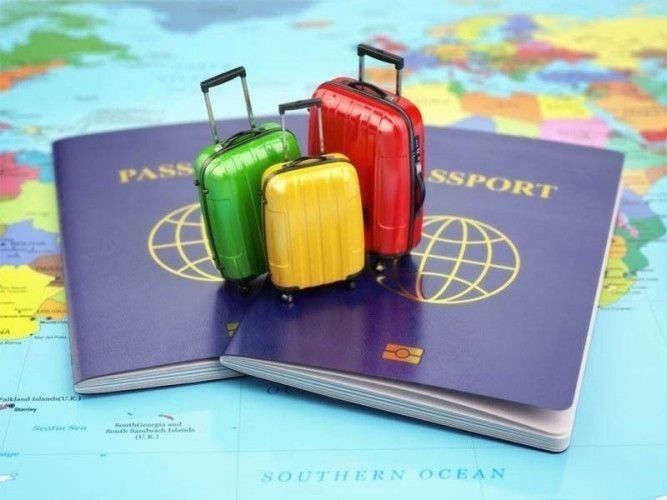
When planning a trip to Peru, eventually bureaucratic and visa related matters come to mind. As finding detailed and up-to-date information on this topic can be challenging, we put together comprehensive information and advice on all Peruvian tourist visa issues that might pop up.
Content overview
Peruvian tourist visa in a nutshell, do i need a visa to enter peru as a tourist, how and where to apply for a peruvian tourist visa, how long can i stay in peru as a tourist, requirements, entry process, how many days did i get when entering peru.
- Extension of Peruvian tourist visa
Expired Peruvian tourist visa
Border-hopping peru, do i need a return ticket when travelling to peru, can i work in peru when on a tourist visa, can i study or do an internship in peru on a tourist visa.
- Can I sign legally binding documents in Peru when on a tourist visa?
Can I volunteer in Peru when on a tourist visa?
- Nationals of some countries need a tourist visa and have to apply for it at a Peruvian consulate before coming to Peru; see PDF under attachments at the end of this really long article to find out if you have to apply for a tourist visa.
- Nationals of other countries can travel visa-free to Peru and receive a "temporary authorization to enter and stay as a tourist for a certain time" (sounds fancy but since the end of May 2023 it's nothing more than an entry in the Migraciones database) at the Peruvian border or airport upon entry.
- Most nationalities that can travel visa-free to Peru are allowed to stay up to 90 days in a 180-day period for touristic, recreational or health purposes (see attached PDF at the end of this really long article to find out if you can enter Peru visa-free and how long you can stay) .
- Peruvian tourist visas issued at a consulate can be single entry or multiple entry visas; The "temporary authorizations" for those who can travel to peru visa-free are single entry.
- All visitors coming to Peru need a passport with at least 2 free pages in the visa section that is valid for at least another 6 months upon arrival.
- As in nearly all countries around the globe, foreigners are not allowed to work in Peru or receive a remuneration for any kind of professional activity in Peru while being in the country on a tourist visa / temporary authorization to enter as a tourist.
- Tourists can only sign legally binding documents (work contract, sworn statement needed, for example, for changing your immigration status, car or apartment purchase, marriage license, ...) with a so called " Permiso para firmar contratos ".
- Extensions of tourist visas / authorizations to enter as a tourist are not possible anymore
Peru is a very welcoming country that signed agreements with many countries, allowing the citizens to travel visa-free to Peru for tourism. Citizens of below mentioned countries do not have to apply for a tourist visa at a Peruvian embassy or consulate before coming to the county. They only need a passport with at least 2 free pages in the visa section that is valid for at least another 6 months upon arrival to get a “temporary authorization to enter and stay as a tourist for a certain time” (sounds great, but today is just an entry in the Migraciones database) directly at the immigration control at the airport or border. For a more detailed listing, please have a look at our PDF "Visas for Peru by country and allowed length of stay" at the end of this very long article for clarification.This PDF is an English translation of the original from the Peruvian Ministry of Foreign Affairs which can be found here .
Following nationals do not need a tourist visa for Peru
- South America: Citizens of all South American countries except Venezuela
- Central America: Citizens of most Central American countries (exception Cuba, El Salvador, Haiti and Nicaragua)
- North America: Citizens of the United States, Canada and Mexico
- Europe: Citizens of all countries within the European Union and Switzerland and UK
- Africa: Citizens of South Africa
- Asia: Citizens of Brunei, Indonesia, Israel, Indonesia, Israel, Japan, Malaysia, Philippines, Singapore and Thailand as well as some citizens of China and India (according to a supreme decree from September 2016 Chinese citizens and according to a supreme decree from March 2017 Indian citizens with a permanent (!) residence visa or a visa with a validity of at least (!) 6 months for the USA, Canada, any country belonging to the Schengen area, UK or Australia can travel to Peru visa-free; other Chinese and Indian nationals still have to apply for a tourist visa at a Peruvian embassy or consulate!)
- Oceania: Citizens of Australia and New Zealand
As already mentioned above, citizens of some countries need a visa even for touristic and recreational purposes (please have a look at our PDF " Visas for Peru by country and allowed length of stay" at the end of this very long article for clarification.). As Peru doesn’t offer online visa applications, these nationals have to apply for a tourist visa at a Peruvian diplomatic mission that has jurisdiction over their domicile or country of residence.
Requirements for the tourist visa application at a Peruvian Consulate
Required documents to apply for a tourist visa include, but may not be restricted to:
- Application form
- Valid passport
- Round-trip ticket
- Hotel reservation, tourist package reservation or invitation letter
- Proof of sufficient funds
- Passport photos
- Proof of legal residency in the area or country under the consulates jurisdiction
- Receipt for paid application fee
Please be aware that the consulate, where you apply, will invite you to a personal interview.
On the website of the Peruvian Ministry of Foreign Affairs (RREE) you find a world map showing all Peruvian consulates abroad . Just click on a marker and the address, phone number, e-mail and - if available - website of the consulate appears.
There is no Peruvian embassy or consulate in my country. Where do I apply?
Especially in Africa and Asia, where the residents of most countries still have to apply for a tourist visa, Peruvian consulates are scarce, website aren’t up-to-date and e-mails often aren't answered. So, finding the correct consulate, getting information and applying for the visa can be quite a challenge. The Peruvian Ministry of Foreign Affairs unfortunately doesn't consistently publish which consulates have jurisdiction over which regions/countries. Therefore, if there is no Peruvian consulate in your country of residence, the only way to find out where and how to apply for a visa is by getting in contact with the nearest Peruvian diplomatic mission (which sometimes isn’t near at all) and ask if they are in charge or know who is.
In March 2017, a new Peruvian Foreigner Law ( Decreto Legislativo 1350 ) went into effect, allowing tourists who can travel visa-free to Peru for touristic, recreational or health purposes to stay for a maximum of 183 days within a 365-day period. Shortly afterwards, the Peruvian Ministry of Foreign Affairs excluded Schengen States nationals from this general rule, allowing them to stay for up to 90 days within a 180-day period. Then, in June 2019, a new publication of the Peruvian Ministry of Foreign Affairs (RREE) eliminated the general 183 days in a 365-day period for most nationalities, who can travel to Peru visa-free, and divided it into two times 90 days in two consecutive 180-day period.
While the new Peruvian Foreigner Law ( Decreto Legislativo 1582 ), which was published in November 2023, confirms that foreign nationals can stay as tourists in Peru for a maximum of 183 days in a 365-day period, the RREE publication is still in place.
So, today, most nationalities who don’t have to apply for a tourist visa before coming to Peru are given up to 90 days in a 180-day period upon entry ; the 180-day period isn't per half year from January to June or July to December but calculated from your first entry.
Brazilian, Chilean, and Mexican nationals as well as those Chinese and Indian passport holders with a permanent residency or a visa with a validity of at least 6 months for the USA, Canada, any country belonging to the Schengen area, UK or Australia, who are still allowed visa-free up to 180 days should know that Peruvian immigration often only gives them 90 days as well upon entry.
In case you have to apply for a tourist visa before coming to Peru, it’s up to the consulate to decide the number of days you can visit the country. Be aware that even if the consulate issued a 180-day tourist visa, often immigration officers only give you 90 days when you enter.
While you generally can expect to get the full days allowed (if you haven’t overstayed your welcome before excessively or if you haven’t been in Peru before and now try to re-enter the country before your 180-day period is over), you should be aware that you aren't entitled to getting the full 90 (or 180) days. As everywhere around the globe, it’s at the discretion of the immigration officer if he or she lets you enter at all and how many days you are allowed to stay.
Please see our PDF " Visas for Peru by country and allowed length of stay" at the end of this very long article to find out if you need a visa to enter Peru or if you can travel visa-free and how long you can stay - this PDF is an English translation of the original from the Peruvian Ministry of Foreign Affairs which can be found here .
Entering Peru
With the introduction of the new Immigration Law in 2017 and progressive digitalization, especially during Covid times, entering Peru today is a quite easy, seemingly organized and at least for now quick process.
After a complete shutdown, Peru re-opened the country for international air travel in October 2020. Land borders only re-opened in mid-February 2022.
Finally, on November 1, 2022, the State of Emergency in Peru was lifted and all Covid entry requirements as well as all other regulations and restrictions that were in place to avoid the spreading of Covid were repealed.
So, entering Peru is back to "normal" and you just need your passport with at least 2 free pages in the visa section that is valid for at least another 6 months upon arrival and, if you have to apply for a tourist visa before coming to Peru, your visa stamp.
After leaving the plane (or at the border), just follow the flow to the immigration control; note: at the beginning of 2023, automated passport control machines were finally put into operations, but for the moment are reserved for Peruvian passport holders.
At immigration control just present your passport (which should have at least 2 free pages in the visa section and must be valid for at least another 6 months upon arrival).
While during the height of the Corona pandemic Peru eliminated the stamping of passports when entering the country, in May 2022 the entry stamp was re-introduced just to eliminate it again at the end of May 2023 for those entering Peru on international flights; and, unfortunately, this time it seems for good.
Today, your entry and the number of days you got is just automatically registered and nothing more than an entry in the Migraciones database. Now tourist once again don't have anything in writing on how long they are allowed to stay as a tourist.
So, to find out how long you can be in Peru as a tourist, you must ask the immigration officer and, if you want to have a confirmation "in writing" or need proof when you entered or left the country, you have to check online. Our article "How many days did I get when entering Peru?" explains how it's done
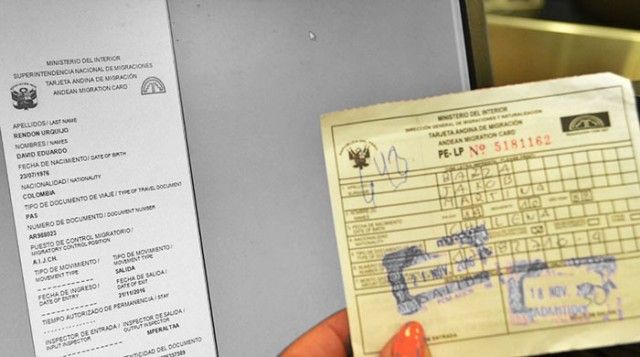
Once you are finished at the immigration counter, proceed to the baggage carousel and claim your luggage.
Clearing customs
Since June 2022, the good old customs declaration form has served its time and was replaced by the App "Bienvenido al Perú" which is available on iOS and Android and in short details which items have or haven’t to be declared. So, if you have something to declare, download the App, fill in required fields and once in Peru proceed to the customs counters at your point of entry.
Peruvian customs urges travelers to know and comply with Peruvian customs regulations. So, it's up to you to inform yourself. Our article “What you can & can’t bring into Peru” helps with this.

What you can & can’t bring into Peru
- If you have nothing to declare , you don’t have to do anything. Clear immigration, get your luggage and proceed to the exit.
- If you have something to declare , download the App "Bienvenido al Perú", follow the instructions and fill in the form within 48h prior to your arrival in Peru. Once in Peru, proceed to the customs counters at your point of entry.
- If you carry more than US$ 10,000 , download the App "Bienvenido al Perú", follow the instructions and fill in the form within 48h prior to your arrival in Peru. Once in Peru, proceed to the customs counters at your point of entry.
We highly recommend to be honest, as failing to declare taxable or dutiable items can result in fines of 50% of the custom value of the items if caught; failing to declare currency over US$ 10,000 results in a 30% fine on the amount you carry with you.
Before you can leave the airport, you and your luggage are scanned and you might be asked to follow an official for a thorough check of your luggage.
You made it! Welcome to Peru!
After not stamping passports during peak Corona times, in May 2022, tourists entering the country finally got an entry stamp again, making it easy to check how long they could stay in Peru.
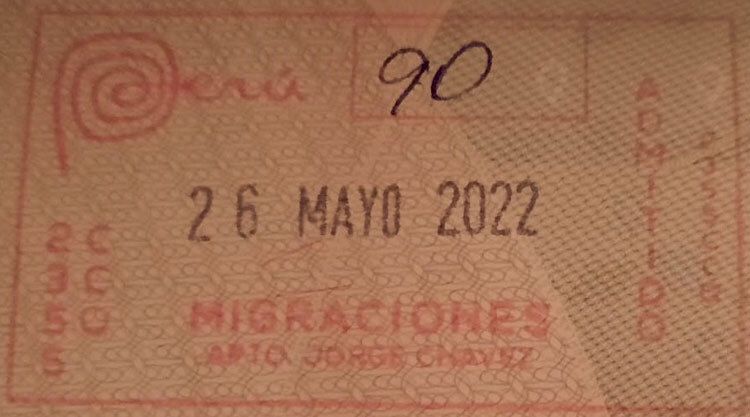
Unfortunately, at the end of May 2023 Peru eliminated the entry stamp again for those entering Peru on international flights.
So now, the only way to find out how many days you are allowed to stay as a tourist in Peru, is to ask the immigration officer or, if you prefer a written confirmation check online. Our article “How many days did I get when entering Peru?” explains in detail the legal background and gives you options to check the number of days you are allowed to stay in Peru as a tourist.
Extension of a Peruvian tourist visa
For the past two decades, every few years the regulations in Peru would change, determining if foreigners can extend their stay as a tourist in the country or not.
Since August 2021, foreign tourists couldn't extend their time in Peru anymore.
However, this general “no” for tourist visa extensions was softened with the implementation of new Migraciones administrative regulations on October 22, 2023, which allow foreign nationals from member countries of the Andean Community, and only these (!), to extend their stay as a tourist again and abolished with the new Foreigner Law, Decreto Legislativo 1582 on November 14, 2023.
The new Foreigner Law, Decreto Legislativo 1582, published on November 14, 2023, states that foreign tourists can stay in Peru for 183 accumulated days in a 365-day period; so, half a year within one year. It further describes that in case foreign tourists don't get the full 183 days, an extension can be granted until the 183 days are reached, unless international agreements or conventions determine a shorter period or don't allow extensions.
At the moment (February 7, 2024), the administrative regulations, called TUPA, necessary for the implementation of the new Foreigner Law still haven't been published. So, we don't know, which foreign nationals can extend (exception: Bolivians, Ecuadorians and Colombians, who at the moment are the only ones, who can extend) or for which nationalities there might be restrictions or when foreigners might be able to extend or how it works. So, right now we have to wait for more official news.
You can find detailed background information on the topic in our article "Tourist Visa extension in Peru".
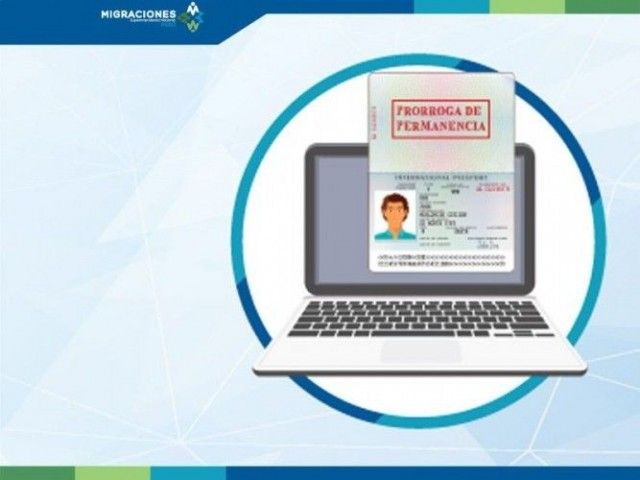
Like in any other country, we recommend respecting the rules and regulations here in Peru, including the time you are allowed to stay in the country as a tourist.
However, if you overstayed your stay as a tourist a few days, weeks or even months - at least for now - you rarely have to fear extreme consequences. When leaving Peru you just have to pay a fine of 0.1% of an UIT (S/ 5.15 in 2024) per day you overstayed. The fee must be paid before leaving the country. In our article "Peruvian Overstay fine for tourists" we explain the details
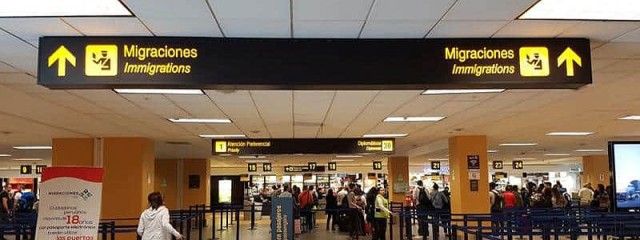
Peruvian Overstay Fine for tourists
Once the fine is paid, you can usually leave Peru with no reprisals.
Those having excessively overstayed their welcome (we are talking about many months or even years), however, might be additionally sanctioned with a re-entry ban for a certain time.
Between 2008 and 2017, border hopping was an easy and popular way to “renew” your tourist visa. Back then, the Peruvian foreigner law stated that visitors can enter Peru for touristic, recreational, or health purposes for 183 days. It however didn't mention if the 183 days were per year or per visit. So, many foreigners used this little gap in the old Peruvian immigration law to live in the country on a tourist visa. As soon as their visa was about to expire, they just crossed the border, stayed 5 minutes, a day or two, in one of Peru’s neighboring countries and returned asking immigrations for another 183 days. For years, this worked absolutely fine.
After the introduction of the new foreigner law (Decreto Legislativo 1350) in 2017 which rectified the loophole and the reduction of the time most nationalities can stay visa-free in Peru two years later, Peruvian border officials got stricter and increasingly applied the new rules giving foreigners only the back then allowed 90 or 183 days in a 180 days or 365 days period and didn’t let border-hoppers re-enter (or only for a few days) when they already stayed the maximum allowed time as visitor in the country.
Then in March 2020, Covid hit the country, borders were closed and Migraciones worked hard on digitalizing certain processes and procedures. Now, all entries and exits are saved in the Migraciones database and can be retrieved at all control points.
Since August 2021, travelers, who already stayed their allowed 90 days in a 180-day period, reported that when trying to re-enter the country at Lima’s airport before their 180-day period was over, that they were scolded and only given anything between 3 and 30 days. And according to reports from travelers who tried to re-enter Peru at a land border after already having stayed their 90 days, immigrations often only gave a few days up to a month. Others reported that they still got the full 90 days, however only if they haven't already stayed the max of 183 days in a year.
So, be aware that it's always at the discretion of the immigration officer and his/her evaluation of your situation how long you are allowed to stay in Peru.
One way or the other, the times of border-hopping seem to be over and foreigners wanting to stay longer in Peru should work on getting a "real" temporary visa (for example, a temporary work visa or a temporary student visa) or a residence visa. Our Visa Guide explains the most common temporary and residence visas including the legal background, requirements, necessary preparation work and a step-by-step application guide.
Peruvian law requires that foreign visitors need a return or onward passage out of the country if they aren't residents, proving that they leave the country when the visa or temporary authorization to enter expires. But the law doesn't state that this return or onward passage must be an airline ticket; it could be anything proving that you leave Peru when the time comes.
When entering the country, Peruvian immigration officials hardly ever ask to see this proof. The ones executing above regulations are usually the airlines. As they could be held responsible and have to fly you back, if denied entry to Peru, most airlines require a return or onward flight ticket to even let you check-in to your flight to Peru.
So, if you plan to come to Peru on a one-way ticket, it’s best to check the requirements of your carrier. Some insist on a flight ticket showing that you leave the country, others accept a reservation for a return flight, a few are happy with a bus ticket and there are as well airlines that let you fly with just a one-way ticket.
If your airline requests a return or onward ticket, you could always make a reservation for one, print the confirmation, and then depending on the agency, you either don't pay it and let it expire or cancel it within a certain time. Other options include buying a fully refundable ticket or, more affordable, "renting" a ticket.
A Peruvian tourist visa / temporary authorization for tourists allows entry for touristic, recreational, or health purposes only. Even though there are quite a few foreigners working in Peru for a Peruvian company on a tourist visa, Peruvian law explicitly prohibits to work in Peru for a Peruvian company or to receive a remuneration for any kind of professional activity in Peru while visiting the country as a tourist.
Generally no , sometimes yes.
For more information, please have a look at our detailed article "Peruvian Student Visa".
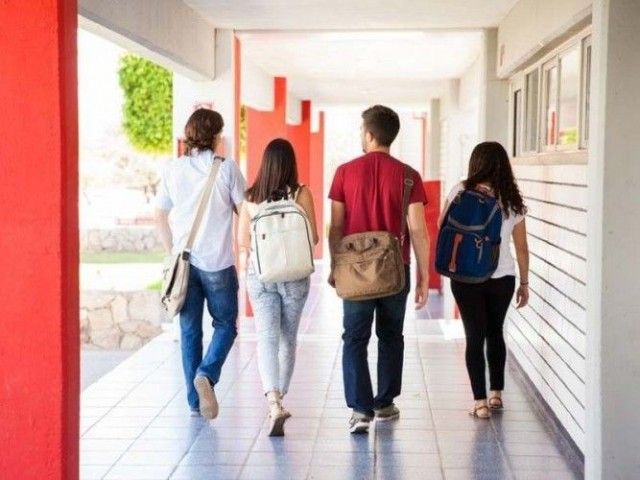
Peruvian Student Visa
Can i sign legally binding documents in peru when on a tourist visa.
Before signing a legally binding document (work contract, sworn statements, car or apartment purchase, marriage license, ...) tourists have to apply for a so called "Permiso para firmar contratos". Our article "Permit to sign contracts" explains in detail how it works and what you have to do.

Permit to sign contracts (Permiso especial para firmar contratos) in Peru
Officially, no! But in reality, it's done all the time. Find more information in our article "Peruvian Volunteer Visa".
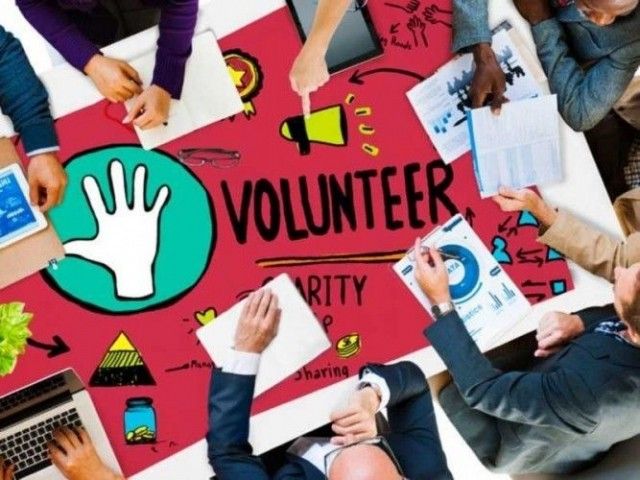
Peruvian Volunteer Visa - Visa cooperante
!!! As visa and entry regulations can change quickly without prior notice, we highly recommend confirming current visa requirements with the nearest Peruvian embassy or consulate !!!
Attachments
- File Description File Size File Type Downloads

- 36 Comments
- Subscribe Unsubscribe
- Collapse All Expand All
or post as a guest
- decreto legislativo 1582 article 29 1 h.jpg ">
- DS 1350 article29-1 h turista.jpg ">
- netherlands.jpg ">
- DS 1350 turista.jpg ">
- rree us.jpg ">
- ley31731.jpg ">
- ley 31732.jpg ">
Peru Newsflash

New lizard species discovered in Peru

Peru has the second-worst drivers in the world

Machu Picchu reopens for the first time after the social outbreak

Peru extends the state of emergency in 44 districts
Peru event calendar, upcoming events in peru.
More in the Peru Event & Entertainment Calendar
Latest Content...

International Christian School of Lima - ICS Lima

Peruvian Digital Nomad Visa

Legislative Decree No. 1582 (Modification of the Peruvian Foreigner Law, Nov 2023)

Queso Rojo de Lluta

Peruvian Queso Andino

Peruvian Quesillo

Peruvian Queso Mantecoso

Peruvian Queso Paria

Peruvian Queso Fresco

Extension of a Migraciones deadline

Amnesty for Migraciones fines

Update your information in the Migraciones database

Replacement for a lost, stolen or damaged carné

Renewal of the Carné de Extranjería
Latest video.

Maria Reiche - Memories
Long reads....

The Mystery of the Nazca Lines in Peru

Francisco Pizarro González (1474-1541)

The colorful Fabrics and Textiles of Peru

The Jeweled Frog and the Condor

lima·easy - /ˈli mə/ - /ˈi zi/
In loving memory of "Jack" & "Lola"
- Why hop with us
- Hop Login Here
- How We Started
- Who Travels with us?
- Why Hop With Us?
- Unique Hop Stops
- Peru Hop vs Public Buses in Peru
- Frequently asked questions
- Guide to Peru
- How It Works
- Tickets & Trips
- Exclusive Hotel/Hostel Discounts
- Group Travel
- Secret Slave Tunnels
- Nazca Lines Viewing Tower
- Paracas National Reserve
- Pisco Vineyard
- Machu Picchu
- Day Trips from Lima
- Day Trips From Cusco
- Day Trips from La Paz
- Paracas Day Trips
- Huacachina Day Tours
- Extra Tours
- Rainbow Mountain
- Ballestas Islands
- Quad Bike ATV
- Paragliding in Paracas
- Buggy and Sandboarding
- Nazca Lines Flight
- Full Day Tour
- Ruta del Sillar Tour
- Lake Titicaca
- 2 Hour Tour
- Isla del Sol
Peru , Travel Tips
Peru Tourist Visa 2024: What You Need To Know
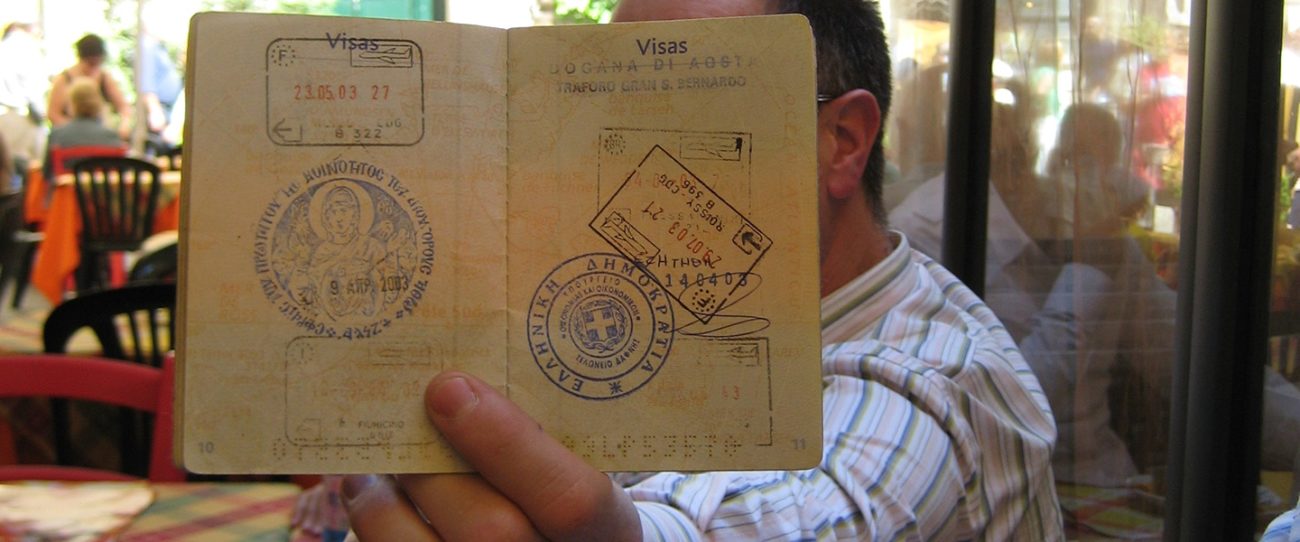
2024 Updated information about how to get your Peru tourist visa, which nationalities require a visa and everything you need to know to visit Peru as a tourist.
Getting a Peru tourist visa has never been easier. Most countries (excluding only a handful of Asian countries) don’t require a visa. Or, at least, the visa is issued upon arrival to the country, be it by air, land, or water. There are no vaccination requirements, just the suggestion of the yellow fever vaccination, particularly when travelers are planning to visit the jungle regions. Even if you don’t get it before entry, it can be found and administered at almost any pharmacy. If you have any doubts or concerns about visas or vaccinations, do not hesitate to speak to one of Peru Hop ‘s trained travel specialists who are available 24/7.
Entering Peru
To enter Peru you must have six months of passport validity remaining at the time of entry, and at least one page for your entry stamp (and, in turn, space for your exit stamp). You may also be required to show proof of return/onward travel- a plane ticket or your Peru Hop ticket if it passes over the border to Bolivia. You can read more about this in the “Exiting Peru” section, or you can get in contact with our travel experts.
A normal tourist visa will last for anywhere between 30 and 183 days, and depends a lot on the person who issues it. This can be extended with a visit to migrations, with a limit of 183 days in total from when you first entered the country. This 183 days is valid for 1 calendar year and cannot be extended after this time. If you overstay your visa you will be required to pay a fine of $1.50 per day, for every day you overstay. This must be paid in cash on exit. Ensure that you have the correct money as you leave, or you could find yourself having problems. There is a limit of $30,000 USD for entry and exit. Anything higher that $10,000 USD must be declared. If your entry is refused for whatever reason, airlines are obliged to return you to your point of origin.
Exiting Peru
If you do not have an entry record, you will not be allowed to exit the country until immigration authorities officially confirm the time and place of your entry. This is a long, expensive process and best avoided. Be sure that you have a correct entry record. This is particularly important at remote border crossings, where the proper officials may not be present.
Stolen or lost passports must be reported to the police immediately. You must keep a record of this report and apply for a new passport at your local embassy, and you must have the replacement before leaving the country.
In order to enter Peru you must have evidence to show that you will be leaving it. This evidence can come in the form of an air ticket, or even using one of Peru Hop’s tickets that pass over the border into Bolivia if you plan to continue your travels in South America. You can check out our full range of passes and also get advice 24/7 on your Bolivian visa with one of our travel experts.
Travel with Minors: Regardless of nationality, all children who are traveling with both birth parents are required to have a valid passport and the necessary visa or citizenship of the country where they are traveling. Peruvian immigration procedures are complex for minors traveling without one or both parents/legal guardians.
This is everything that you need to know about traveling to Peru with a tourist visa. It is always a good idea to be aware of where your countries embassy is when you enter a country, and to know the address or telephone number of it. You can find this out on their official website.
At Peru Hop we do our best to provide the most accurate and timely information regarding the tourist visa, however you should check your local embassy’s website for the most recent information. We do not accept liability for any information that may not be correct on this page.
You May Like
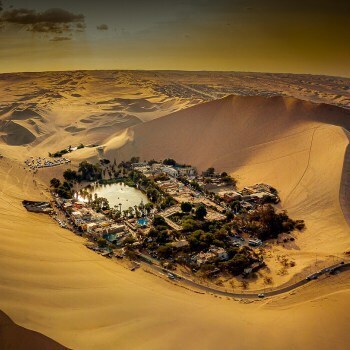
The #1 Thing to Do in Lima - Desert Oasis

How 2 Irish Guys set up Peru's BIGGEST Travel Company

Peru 2024 Travel Updates - All You Need to Know

Lima to Machu Picchu - Agencies DON\'T want you to read this!
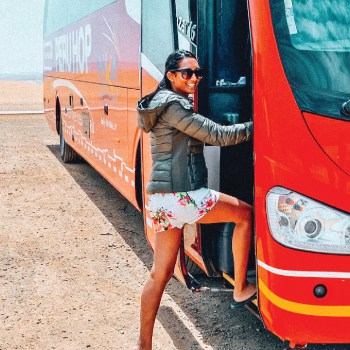
OFFICIAL: View #1 Travel Company in Peru by Tripadvisor

What NOT to do when visiting Rainbow Mountain

These Hidden Destinations close to Lima will AMAZE you

PERU INSIDER - Top Travel Tips in 2024
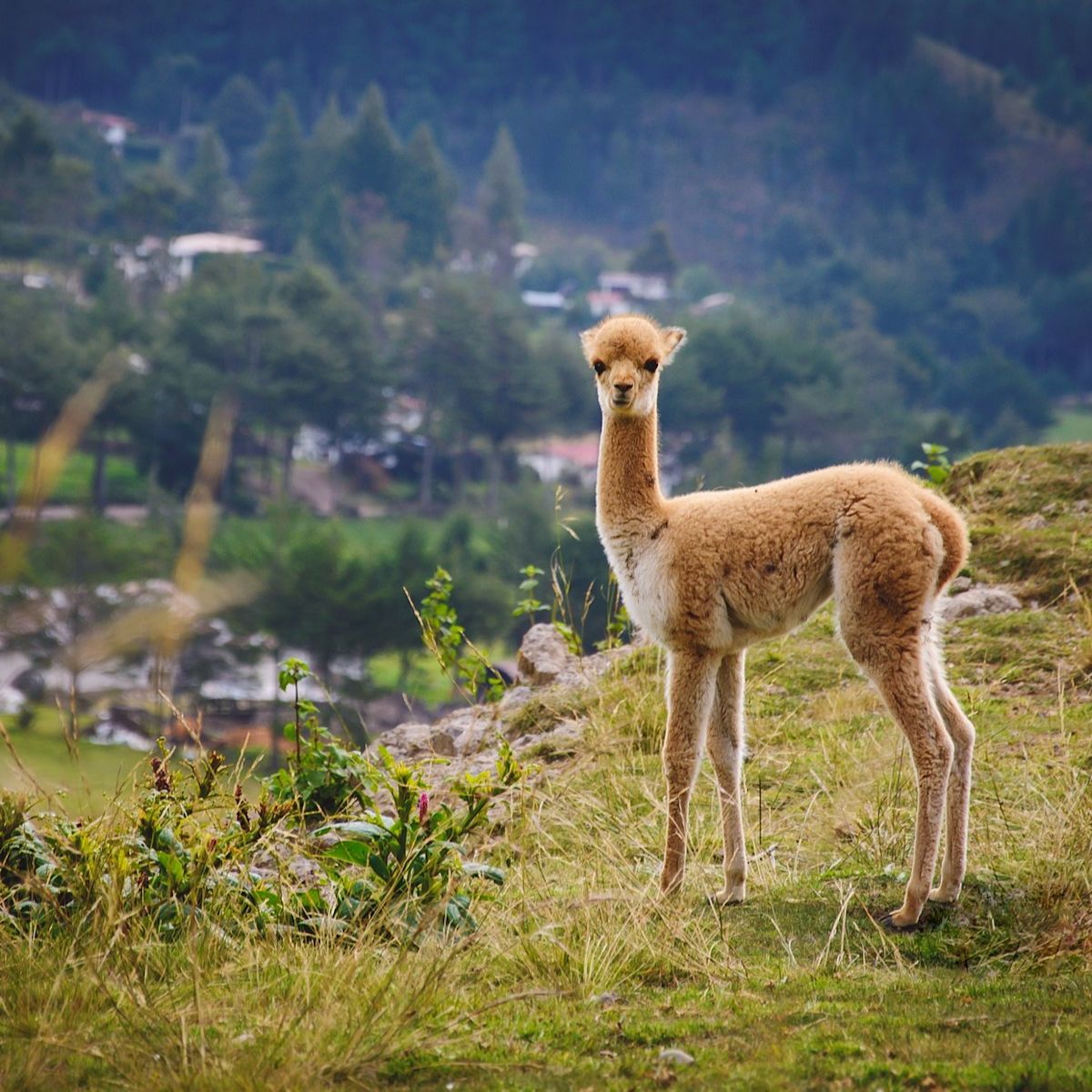
What to know about Peru's visa requirements and entry procedures
Citizens of many nationalities can visit Peru without a visa. So we first list which countries are visa-exempt, then discuss the different visa options for those who must obtain one. We also explain what to expect in terms of the entry process.
Countries with a no-visa agreement with Peru
The good news is that citizens of many, many countries are allowed into Peru without a tourist visa.
If you hold a passport for the one of the following countries, you don't need a visa to enter Peru for up to 183 days:
- All South American nations except Venezuela
- Canada, USA and Mexico
- Most central American and Caribbean nations
- South Africa
- All EU countries plus Britain, Norway, Belarus and Russia
- Japan, Brunei, Philippines, Hong Kong, Indonesia, Malaysia, Singapore, Thailand and Taiwan
- Australia, New Zealand and most Oceania nations
Here's a full list of countries not requiring tourist visas for Peru. Please check this list when actually booking your trip to ensure nothing has changed.
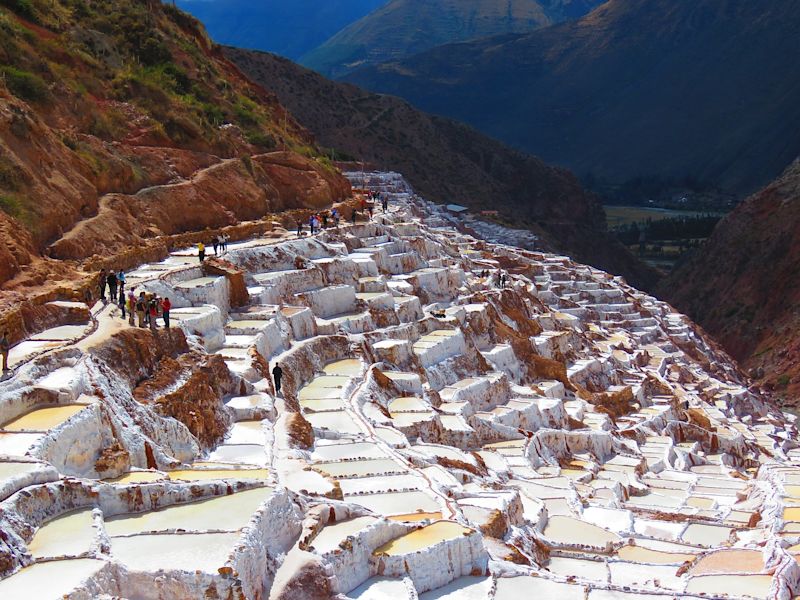
There are just so many great reasons to visit Peru!
Documents to show upon entry – visa or no visa
Whether you're entering Peru with a visa or without one, note that you'll also need to present the following to obtain entry:
- Proof of onward travel (like a plane or bus ticket).
- Documents showing you can enter your onward destination if you're not returning home afterwards.
- Bank statements showing you have sufficient funds to cover your trip expenses.
- A passport that's valid for at least six months from your date of entry.
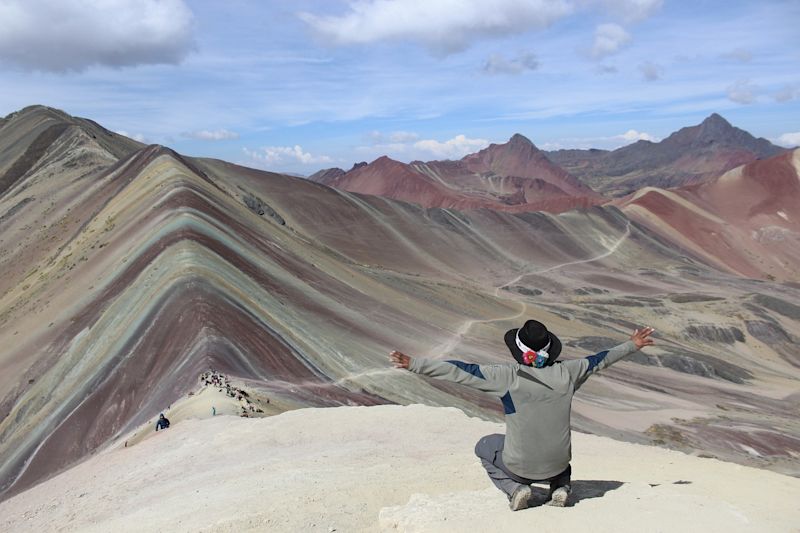
The mesmerising Vinicunca (or 'Rainbow Mountain') of Peru
The entry procedure
When travelling to Peru (visa or no visa), you'll be given an embarkation card to fill in. This card – also called a TAM (for Tarjeta Andina de Migraçion ) – will be given to you on your flight, or at the border crossing.
While it's usually not checked, in principle you must have a return or onward ticket booked when flying into Peru in order to obtain a TAM.
Always keep your passport and embarkation card on your person when travelling around Peru.
Be sure to never be parted from your passport or card. Even on the Inca Trail, you must have these with you. So don't leave them in a hotel room, or put them in the luggage your hand over to a porter.
If you're asked to show these documents and don't have them to hand, you could be fined.
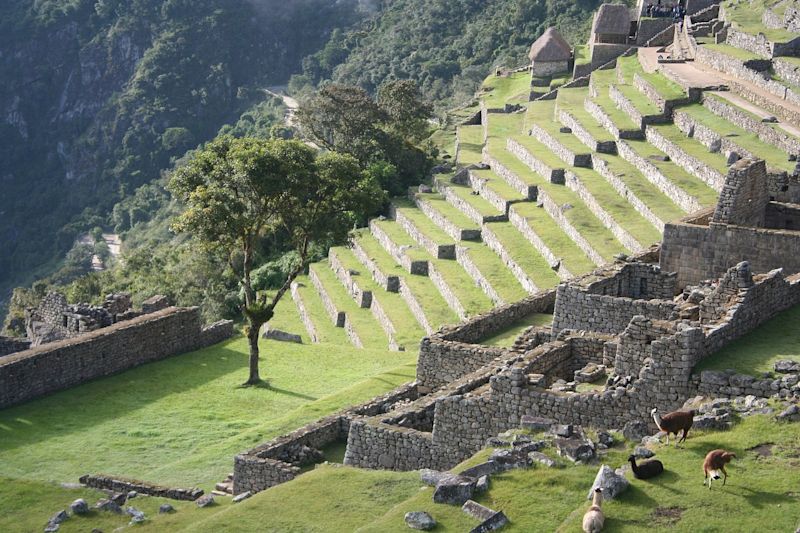
The Inca Trail is one of Peru's biggest tourist attractions
Peru's tourist visa options
For those of you who do need a visa to travel to Peru, you can choose between four durations:
Note you can't extend your visa while in the country. So always go for the longest possible visa if you're unsure of when you want to leave, or would just prefer some wiggle room.
If you do decide you want to extend your stay beyond your current visa, an option is to pop into a neighbouring country like Bolivia and apply for a new visa from there.
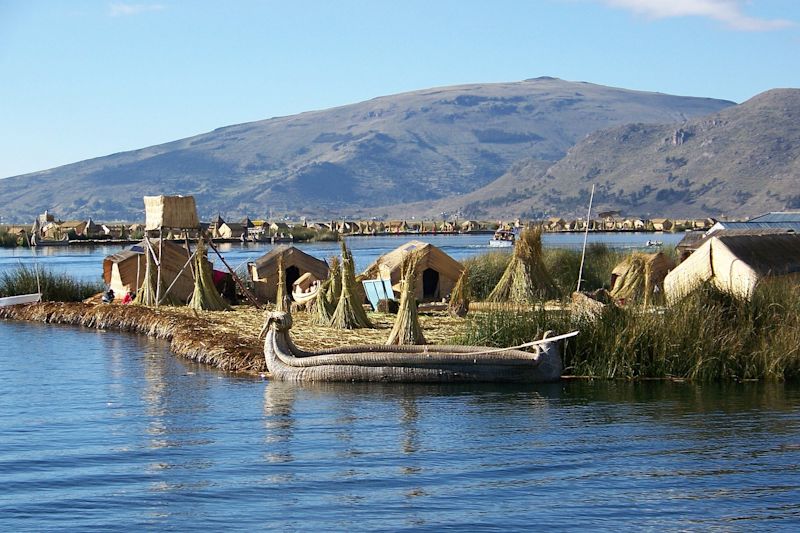
Lake Titicaca forms part of the Peru–Bolivia border
Get your visa before travelling to Peru
You cannot obtain a tourist visa upon arrival in Peru, as you can in many other countries. You must purchase one before your trip, so be sure to give yourself enough time for this.
We suggest that you research the visa application process offered in your country the moment you know you're going to be travelling to Peru to ensure you start early enough.
Note too that the visa application form is going to ask after your finalised travel arrangements ...
Proof of travel arrangements
You will need to attach proof of your travel plans when submitting your visa application. This proof is the " Letter of Invitation " you'll receive from your accommodation or tour agency when you make a booking with them.
This step in the visa application process means you need to formalise your travel plans before applying for your visa, so please factor this all into your pre-trip schedule and budget.
And that's all you need to know, folks, when it comes to Peru's tourist visa and entry requirements. Not too onerous at all. 🤓
Do I need a visa to travel to Peru?

Peru has visa-free travel agreements with many countries. Foreign nationals, including those from the United Kingdom , United States, New Zealand and Canada , do not require a visa to enter Peru for tourism purposes. Eligible foreign nationals will be issued a free visitor permit in the form of a passport stamp upon arrival.
The duration of a Peru visitor permit ranges between 30 to 183 days and is normally determined by border officers on arrival. If you're issued a permit for 30 or 90 days and want to extend your trip, you can request an extension before your initial permit expires. You should also note that you cannot extend a 183-day permit, so if you intend to stay longer, you'll need to apply for the relevant visa at your nearest Peruvian embassy or consulate before you depart.
If you overstay your visitor permit in Peru, you may be fined when leaving the country. The fine is around US $1.50 per day and must be paid in cash. It's essential to ensure border officials stamp your passport on arrival, or you might have to go through a potentially long and expensive process to leave the country – either by requesting an entry stamp at the National Superintendent of Immigration in Lima or applying for an exit order.
If you're not eligible for a visitor permit on arrival, you'll need to apply for a tourist visa prior to departure at your local Peruvian consulate or embassy. This includes passport holders from Venezuela, Kenya, Nicaragua and Cuba.
Check which nationals are eligible for a visa-free entry permit on the Peru Ministry of Foreign Affairs website.
All travelers entering Peru must meet certain entry requirements, including:
A passport valid for at least six months from the date of entry (nationals of Argentina, Brazil, Paraguay, Uruguay, Ecuador, Colombia, Bolivia and Chile can enter Peru with a national identity document)
At least two blank pages in your passport
Proof of onward travel, e.g. a return flight or bus ticket
Proof of sufficient funds to support yourself during your stay.
The page is for general information only and may be subject to change. It is your responsibility to obtain relevant visa and travel information required for entry, departure and travel to each country or region you visit on your trip. You should confirm these with the relevant embassies and/or consulates.
Last updated: 27 June 2023
Let's create an exclusive trip for your group.
Cookies on GOV.UK
We use some essential cookies to make this website work.
We’d like to set additional cookies to understand how you use GOV.UK, remember your settings and improve government services.
We also use cookies set by other sites to help us deliver content from their services.
You have accepted additional cookies. You can change your cookie settings at any time.
You have rejected additional cookies. You can change your cookie settings at any time.
- Passports, travel and living abroad
- Travel abroad
- Foreign travel advice
Entry requirements
This advice reflects the UK government’s understanding of current rules for people travelling on a full ‘British citizen’ passport from the UK, for the most common types of travel.
The authorities in Peru set and enforce entry rules. If you are not sure how these requirements apply to you, contact the Peruvian Consulate General in the UK .
COVID-19 rules
There are no COVID-19 testing or vaccination requirements for travellers entering Peru.
Passport validity requirements
To enter Peru, your passport must have an ‘expiry date’ at least 6 months after the date you arrive.
Check with your travel provider that your passport and other travel documents meet requirements. Renew your passport if you need to.
You will be denied entry if you do not have a valid travel document or try to use a passport that has been reported lost or stolen.
Visa requirements
You do not need a visa to travel to Peru for tourism or short visits. If you are travelling for any other reason, check requirements with the Peruvian Consulate General in the UK .
You are normally given permission to stay for up to 30 days when you arrive. If you need to stay longer, you must apply for permission on arrival. Immigration officials can grant you up to 180 days a year as a visitor or tourist.
If you overstay, you will need to pay a fine or you could be detained.
Arriving at an international airport
If you arrive in Peru at an international airport your entry will be registered digitally through a Tarjeta Andina de Migración (TAM) - a virtual immigration control document.
You can check the number of days you have been granted to stay legally in Peru on the Superintendencia Nacional de Migraciones website (in Spanish).
Arriving by land
Land entry: make sure you get your passport stamped.
If you enter Peru overland from any neighbouring country, go to the immigration checkpoint and get your passport stamped. If you do not get an entry stamp, you will not be allowed to leave Peru until you get a new entry stamp. If you do not get one, you will need to:
- complete the online application form (form in Spanish)
- provide your passport details
- provide evidence of your entry to Peru, such as a bus ticket in your name
- show an exit stamp from the last country you visited
The British Embassy can help you to apply for a new entry stamp. You should start this process as soon as possible.
If you cannot provide the information needed, you must apply for an exit order or expulsion order to leave Peru in person at the Immigration Office in Lima . These orders may stop you from re-entering Peru for a number of years. The British Embassy cannot intervene in these decisions, but can help you with the exit procedure.
If your passport has been lost or stolen and you plan to travel internally, contact your travel agency, airline or bus company to check their requirements. Some airlines and bus companies will not allow you to travel internally carrying a police report only. You may need a new passport or an emergency travel document .
Processing at the Peru-Chile border
Clashes between the police and migrants on the border between Peru and Chile in April and early May 2023 have led to delays in processing at this border crossing. See regional risks .
Vaccine requirements
At least 8 weeks before your trip, check the vaccinations and certificates you need in TravelHealthPro’s Peru guide .
Travelling with children
Children aged 17 and under who are travelling on a British passport and have Peruvian resident status need written permission (‘Autorización de Viaje Notarial’) from the non-accompanying parent or parents to leave Peru.
You must get permission in a letter signed by a public notary in Peru. The letter must include:
- proposed destination
- purpose of the trip
- departure date
- return date
If you’re unable to get notarial permission, you’ll need to get judicial written permission (‘Autorización de Viaje Judicial’) from a judge. If one parent has committed certain crimes, the other can request a judicial written permission. If one parent is deceased, the other will need to submit the death certificate to a notary public, so that an indefinite notarial permit to travel with the child is issued.
These requirements do not normally apply to children with tourist status, but immigration officers may ask for them in circumstances considered suspicious, or if the child has overstayed in Peru.
For further information, contact the Peruvian Consulate General in the UK (in Spanish) or the Peruvian Immigration Department (in Spanish).
Customs rules
There are strict rules about goods you can take into or out of Peru . You must declare anything that may be prohibited or subject to tax or duty.
You can bring one laptop and 2 mobile phones into Peru without paying tax.
When you leave Peru, you may be stopped and prosecuted if you are carrying:
- products made from wild animal skins
- crafts made with preserved butterflies, spiders, starfish, sea horses or other fish or insects
- crafts and jewellery made with condor or other wild bird feathers, turtle shells, teeth, bones and other animal parts
The sale of souvenirs made with wild animal parts, including condor feathers, is illegal in Peru. These products are often sold in tourist markets in Cusco and Iquitos.
You’re not allowed to remove any archaeological artefacts from Peru without authorisation.
Related content
Is this page useful.
- Yes this page is useful
- No this page is not useful
Help us improve GOV.UK
Don’t include personal or financial information like your National Insurance number or credit card details.
To help us improve GOV.UK, we’d like to know more about your visit today. We’ll send you a link to a feedback form. It will take only 2 minutes to fill in. Don’t worry we won’t send you spam or share your email address with anyone.
Your client portal login provides access to your organization’s preferred pricing and customized features
- About Us CIBTvisas Global Offices Immigration Services CIBTvisas Global Leadership CIBTvisas Careers Contact CIBTvisas In The News
- Travel Visas Do I Need a Visa? Expedited Visa Solutions Travel Visa FAQs Corporate Travel Solutions
- Passports Same Day Passport Passport Renewal First-Time Passport Lost or Stolen Passport Child Passport Name Change Second Passport Passport FAQs
- Document Services
- Resources CIBTvisas Travel Blog Destination Entry Requirements Podcast ETIAS White Papers Research
- Services Global Immigration Services US Immigration CIBTvisas Service Directory Learn More About Our Services Corporations Cruise Lines Tour Operators Onsite Services All Partner Solutions Learn More About Our Client Solutions
- Your Order Check Order Status View Invoice Upload Documents
Get a Peru Visa
- When is the best time to apply for my Peru visa? The best time to apply for your Peru visa is 1-2 months before your travel date.
- Do I have to send you my passport to get a Peru visa? Is it safe to send a passport? You will need to send your actual passport, not a copy of it. The Peru visa is stamped on your passport and will become one of your passport pages. Visa requests cannot be processed without your original passport. Because of the importance of your passport, we strongly suggest that you send your application and passport to CIBTvisas in a secure way, using a traceable courier such as FedEx, UPS, Express Mail or Certified Mail.
Business Visa Application Requirements for a Peru Visa
- Be valid for at least six months on entry
Photographs
You must provide two color, passport-type photographs that meets the following criteria: Be taken within the last three months and printed on high-quality photo paper Be taken against an all white background Be two inches by two inches Provide the full frontal view of your head with your face centered in the middle and displaying a neutral (non-smiling) expression You may wear neither eyeglasses nor headwear except for religious purposes Your photos should not be affixed to your application and it may not display evidence of adhesive tape or staples
Business Cover Letter
- The details on the letter must match the applicant's travel details and inviter's contact phone number and address as listed on the letter of invitation letter
Letter of Invitation
You must submit a scanned copy or original signed invitation letter from the sponsoring organization or business in Peru . The letter must:
- Be written on a company letterhead
- Display the original ink signature of the authorized signer of the host company
- Include the full local address and phone number of the organization or business to be visited
- Request the same visa validity as in the Business Introduction Letter
- Specify the number of entries you are requesting for your visa
- Include your name as it appears on your passport
- The signer/inviter's direct phone number and address must be included on the letterhead and this must match the information noted in the business cover letter
- The signer must be the person listed as the host/inviter on the business cover letter
- The signer/inviter must be prepared to accept a call from the consulate of Peru to confirm the nature of the visit and travel details
Copy of Driver's License
You must provide a copy of your driver's license or other state issued identification.
Visa Application Form
- Type "Business" on line #1 of the application form next to Visa Temporal (Temporary Visa)
Proof of Travel Arrangements
You must provide proof of travel arrangements for the duration of your trip. Details of your intended arrangements must: Include a copy of an itinerary or e-ticket that displays your round trip travel and entry and exit dates for your destination Show the traveler's full name (as printed in his or her passport)
CIBTvisas Order Form
Provide the CIBTvisas Order Form included in this kit.
Urgent Applications
If you have an urgent visa application that carries a tight deadline, CIBTvisas can help you to save valuable time and avoid expensive delays. A CIBTvisas expert will review all of your documents to certify your application is accurate, complete and ready for submission. We will contact you personally to quickly handle any mistakes ensuring your application is submitted correctly. Visit https://cibtvisas.com/visa-pre-check-service to learn more about this service.
Tourist Application Requirements for a Peru Visa
Visa Exempt
- Hold a passport valid at least six months on entry with one blank visa page
- Hold proof of onward/return flights
- Hold proof of sufficient funds relative to your intended length of stay
- Hold documents showing proof of purpose of trip
- Hold all documents required for the next destination
- Confirm with your airline that boarding will be permitted without a visa
Visa Pre-Check
Have an urgent visa application that carries a tight deadline? CIBTvisas can help you to save valuable time and avoid expensive delays. A CIBTvisas expert will review all of your documents to confirm your application is accurate, complete and ready for submission. We will contact you personally to quickly handle any mistakes ensuring your application is submitted correctly.
Fast Track Your Visa
Need your visa processed quickly? CIBTvisas can fast track your order and process it in the fewest days possible.
View A Sample Visa
Don't know what a visa for your destination looks like?
You can view a sample visa for your country of destination and see the information it contains.
About CIBTvisas
- Travel Visas
CIBT Around the World
- netherlands
- switzerland
- United Kingdom
- United States
Top Destinations
- Vietnam Visa
- Brazil Visa
- Australia Visa
- Indonesia Visa
- Saudi Arabia Visa
- 800-929-2428
- Learn More About Our Client Solutions
- Privacy Policy
- Terms & Conditions
- Copyright 2024
- Privacy Shield Compliant
- TRAC Certified
- As Seen in The New York Times
- Skip to main content
Additional menu
The Visa Project
A place for your visa experiences and more
A Final Guide to Peru Visa Application, Fees, Overstay, Extension and Types
Right after Brazil and Argentina, Peru is the biggest country in South America. While Machu Pichu is probably the most well-known destination for people travelling to Peru, Peru is so much more than Machu Pichu. The floating islands of Puno, UNESCO world heritage city of Cusco, Nazca lines, the Amazon rain forests, and the architectural wonders of Incas are only a few of them.
If you are visiting Peru or planning to work or retire in Peru, you must accustom yourself with the Peru visa application process.
In this article, we will cover who needs a visa for Peru, the visa types, extension of Peru visa, overstay and all other relevant details.
Table of Contents
Do You Need a Visa to Travel to Peru?
As a country that’s hugely popular with backpackers, this is a question that gets asked a lot of times: do I need a visa to visit Peru or not. Citizens of many countries can enter Peru visa-free, by receiving a Peru TAM card at Peruvian immigration and an entry stamp. However, citizens of many countries need to apply for a tourist visa for Peru in a Peruvian embassy.
As per, Peru visa policy, here are the countries that need a visa can enter Peru visa-free. If your country is not listed, then you need a visa to enter Peru.
Who Can Enter Peru with an ID Card and no Passport?
Citizens of Mercosur countries can enter Peru with an ID card.
Peru Visa-free with Green Card or Visas or Residency from Third Countries
Citizens of India and China can enter Peru visa-free for a maximum of 180 days during a six-month period if they hold
- a valid green card or permanent residence permit from the US.
- a valid permanent residence permit issued by Australia, Canada, United Kingdom, or a Schengen member.
- a visa with a validity of minimum six months from Unites States of America, Canada, United Kingdom, Australia, or any Schengen country.
Peru Visa Sample : What Does Peru Visa Look like?

Peru Visa Types
Peru visas can be either temporary visas or resident visas.
Temporary Visas
1. peru vistor visa.
Citizens of countries who want to visit Peru for tourism, sightseeing etc, can apply for a Peru tourist visa through an embassy of Peru, if they belong a country whose citizens need a visa for Peru.
- Personal experience of getting Peru visa as Indian citizen in Bolivia .
2. Peru Business Visa
Foreign nationals who want to conduct business in Peru should apply Peru business visa, unless the country of origin of the citizen has an agreement with the Peruvian government to allow travel to Peru without a business visa for this purpose.
Here are the countries whose citizens don’t need a business visa for Peru to conduct business in Peru.
Brazil, Canada, Chile, Mexico
Austria, Belgium, Bulgaria, Czech Republic, Croatia, Cyprus, Denmark, Estonia, Finland, France, Germany, Greece, Hungary, Iceland, Italy, Latvia, Lithuania, Liechtenstein, Luxemburg, Malta, Netherlands, Norway, Poland, Portugal, Romania, Slovenia, Slovakia, Spain, Sweden, Switzerland
Indonesia, Japan, Malaysia, Singapore, South Korea, Thailand
3. Peru Student Visa
Foreign nationals wanting to study in Peru or doing an internship, can apply for a Peru student visa through an university or institution recognized by DIGEMIN (General Directorate of Migrations and Naturalization).
4. Artist Visas for Peru
Foreigners who carry out artistic, cultural, sports, or other similar activities can apply for a Peru artist visa to come and perform in Peru. In case a foreigner carries out any such activities without possessing the artist visa for Peru, he/she will be penalized.
5. Peru Religious Visa
Priests or missionaries who want to stay in Peru to perform missionary or religious work can apply for a Peru religious visa. This has to be authorized from the General Directorate of Migrations and Naturalization – DIGEMIN, after which it can be issued from the Peruvian embassy where you are applying for the visa.
6. Peru Visa for Journalists
This type of visa is issued to who wish to work as a film producer, journalist or reporters in Peru. EU citizens of the following countries don’t need a journalist visa for Peru, although they still need to apply for the authorization for bringing equipment into Peru.
7. Diplomatic Visas for Peru
Foreign diplomats who will be staying in Peru on official missions, can obtain a diplomatic visa.
Resident Visas
1. peru work visa.
For foreigners wanting to work in Peru legally, General Directorate of Immigration and Naturalization (DIGEMIN) issues the Peru work visa. The employment contract for your job would have to be for at least one year for this.
2. Peru Professional Worker Visa
Foreigners can apply for a visa for independent professionals or Peru professional visa, to work as a freelancer while living in Peru. This gives you the right to work in Peru as a freelancer, while not being employed under a contract.
3. Peru Investor Visa
Foreign investors who can invest $ 30,000 dollars in an existing Peruvian company or establish a company in Peru themselves with a capital exceeding $30,000 can apply for a Peru investor visa. An investor visa for Peru is valid for one year, and can be extended further. It doesn’t give you the right to work in Peru.
4. Peru Family Resident Visa
Peru family resident visa can be issued to foreigners who are related to a Peruvian citizen by birth or marriage or adoption. It can be issued to foreign nationals who are
- married to a Peruvian citizen.
- married to a foreigner who has a resident visa for Peru.
- minor children of a Peruvian or resident foreigner.
- parents of a Peruvian citizen or resident foreigner.
5. Peru Retirement Visa
Foreign nationals who can prove a minimum monthly income of $ 1000 dollars, can apply for a Peruvian retirement visa. Working is prohibited if you have this visa.
Peru Visa Application Process
Many people wonder if they can apply for Peru visa online. However Peru visa application process is not online yet. Here is the step-by-step process to apply Peru visa.
1. Choose the Peru visa type as per your purpose
Make sure that you are choosing the right type of visa when applying for a Peru visa. As the requirements are different for every visa, it’s important to decide on the purpose of your presence in Peru and apply for the requisite visa.
2. Find out the nearest Peruvian Embassy in Your Country
Is there a Peruvian embassy in your country? Peru has many embassies worldwide. Check if there is a Peruvian embassy from where you are applying the visa, here .
You can call or email them to ask about the visa you are applying for and the timings before proceeding with the visa application for Peru.
3. Come up with the Documents Required for Peru Visa
The list of documents for a Peru visa will vary a little from one country to another. Make sure to contact the embassy of Peru in this regard. You might also need to provide some documents that are translated to Spanish depending on your visa type and the embassy instructions.
4. Submit the Documents and Application at Peru Embassy
Once you have the required documents, you can submit them at the embassy of Peru along with your Peru visa application form and other documents.
5. Attend the Interview
Although not always, some embassies might ask you to come down for an interview when you apply visa for Peru. This might happen when you submit the documents. During the interview, a consular officer, who would ask you some questions about your intended trip, employment, and other details.
6. Pay the Peru Visa Fees
Once your interview is done, you would be required to pay the Peru visa fees. It’s very common for Peruvian embassies to ask you to pay only when the visa is approved so that you don’t lose your money. The payment can be done directly in the embassy or in a bank account of the embassy, depending on the country it’s in.

7. Receive the Peru Visa Stamp
You will receive the Peru visa sticker in your passport from the embassy once you have paid the visa fees and it’s approved.
Peru Visa Requirements
The visa requirements for Peru will vary depending on the country you are applying from, your employment status, the purpose of your visa and many other factors.
Here are the general requirements for Peru Visa.
- Peru Visa Application Form DGC 005 visa application forms duly filled and signed. You can download it from the website of the Peruvian embassy or you can get it from the embassy in person.
- Peru Visa Photo Requirements Recent passport-size color pics (4.3 X 3.5 cm) with white background. The face size should cover between 70% – 80% of the photograph.
- A Valid Passport Passport with a minimum validity of six months after expected date of arrival to Peru.
- Travel Itinerary for Visa Roundtrip flight tickets or reservations from the country you are applying from.
- Proof of Accommodation for Visa You must show proof of hotel or hostel reservations in Peru, or proof of a tour package that you have bought.
- Financial Solvency Personal Bank Statement of the applicant for the last 3 months, credit card statements to prove that you can sponsor your trip. Your balance must be more than $1500 for the last 3 months.
If Employed
- Salary slips, for the last six months.
- No-objection letter written and signed by your employer. The letter must have information on the purpose of your trip, the time you have been working with them, the period of your stay in the letterhead of the employer. Please make sure that the letter includes your passport number.
- The most recent income tax return.
If a Student
- A letter from your school confirming your studies.
If your trip is sponsored
- Letter of guarantee from your Sponsor in Peru attesting that he or she will be responsible to bear some or all costs of boarding and lodging of the applicant, or repatriation if needed.
- A valid Id- Peruvian DNI, Passport or any other valid national identification document belonging to the Sponsor.
- Proof of financial solvency of the sponsor- bank statements, fixed deposit.
Peru Visa Fees
The visa fees for Peru are one of the lowest all over the world.
Peru Visa Processing Time
The usual Peru tourist visa processing time is 4-5 business days although depending on your application type, it can go up to 10 business days. And if you are applying from a country that you are not a citizen or permanent resident of, it might be even longer.
Some other visas that need prior authroization from the DIGEMIN of Peru (General Directorate of Migrations and Naturalization), might take 30 business days or more.
What is Tarjeta Andina Peru or Peru TAM?
When entering Peru, you will receive the Peru TAM or Tarjeta Andina Peru. It’s nothing but an entry/exit card with an entry stamp. Make sure to keep it safe and present it when you leave Peru.
Peru Visa Extension
There are two ways to extend Peru visa stay for tourism if you entered Peru with just a Peru TAM/ entry stamp, and without a sticker visa. Peru tourist stay can be extended for up to 90 days and up to the maximum allowed 183 days within a 365 days period.
1. Extend Peru visa online
Extending the Peru visa online is easier and faster. You can pay the extension fees online and upload the documents needed for the extension in the official website of Peru immigration. And then you would receive the email with the extension.
2. Extend Peru visa in an immigration office
Sometimes, the website to extend the Peru visa acts up or doesn’t accept your data. In these situations, you can extend the Peru visa by visiting a Peruvian immigration office and paying the fees at the bank. Also, EU citizens often face issues while extending the visa for Peru online, and can often do it successfully in the immigration office.
Peru Visa Overstay Fines
Peru is known to be liberal when it comes to visa overstay, unlike its neighbors such as Ecuador or Colombia. If you overstay your Peru visa you will be needed to pay a penalty of 0.1% of the Unidad Impositiva Tributaria (UIT). The UIT for 2020 is S/ 4,300, according to the official SUNAT website .
So for 2020, the daily overstay fine in Peru is S/ 4.30 or US$1.25 for each day you’ve overstayed. This must be paid in cash while exiting from Peru. Ensure that you have the right amount of money as you leave, or you could find yourself having problems.
You should avoid it by any means, but in most cases, don’t worry too much if you have.
Peru Visa for Indians: Do Indians Need a Visa for Peru?
Indian citizens need a visa for Peru, no matter what the purpose of their trip is. But if you possess a valid US Green card or permanent residence permit from Canada, Australia, Schengen countries, Singapore or a visa from these countries for 6 months validity, you can enter Peru visa-free.
Peruvian embassy in New Delhi, India caters to all visa applications from Indians as well as for citizens of Sri Lanka, Bangladesh and Maldives.
Do US Citizens Need a Visa for Peru
A tourist visa in not needed for US citizens travelling to Peru for sightseeing or vacationing. However, if the purpose of your travel is business or to study or anything other than tourism, then you need to apply for a visa for Peru before you travel.
Along with the Peruvian embassy in Washington DC, Peru has consulates and diplomatic representations in 13 locations such as San Fran Cisco, Atlanta, Chicago, Denver etc.
Does Peru need a Yellow Fever Certificate for Visa?
No, travellers don’t need to hold a valid yellow fever certificate when applying for Peru visa or when entering Peru.
Be part of the visa smart tribe
Up-to-date information on visas, and visa experiences from travelers, expats and immigrants.
10 things to know before traveling to Peru

Nov 26, 2023 • 6 min read
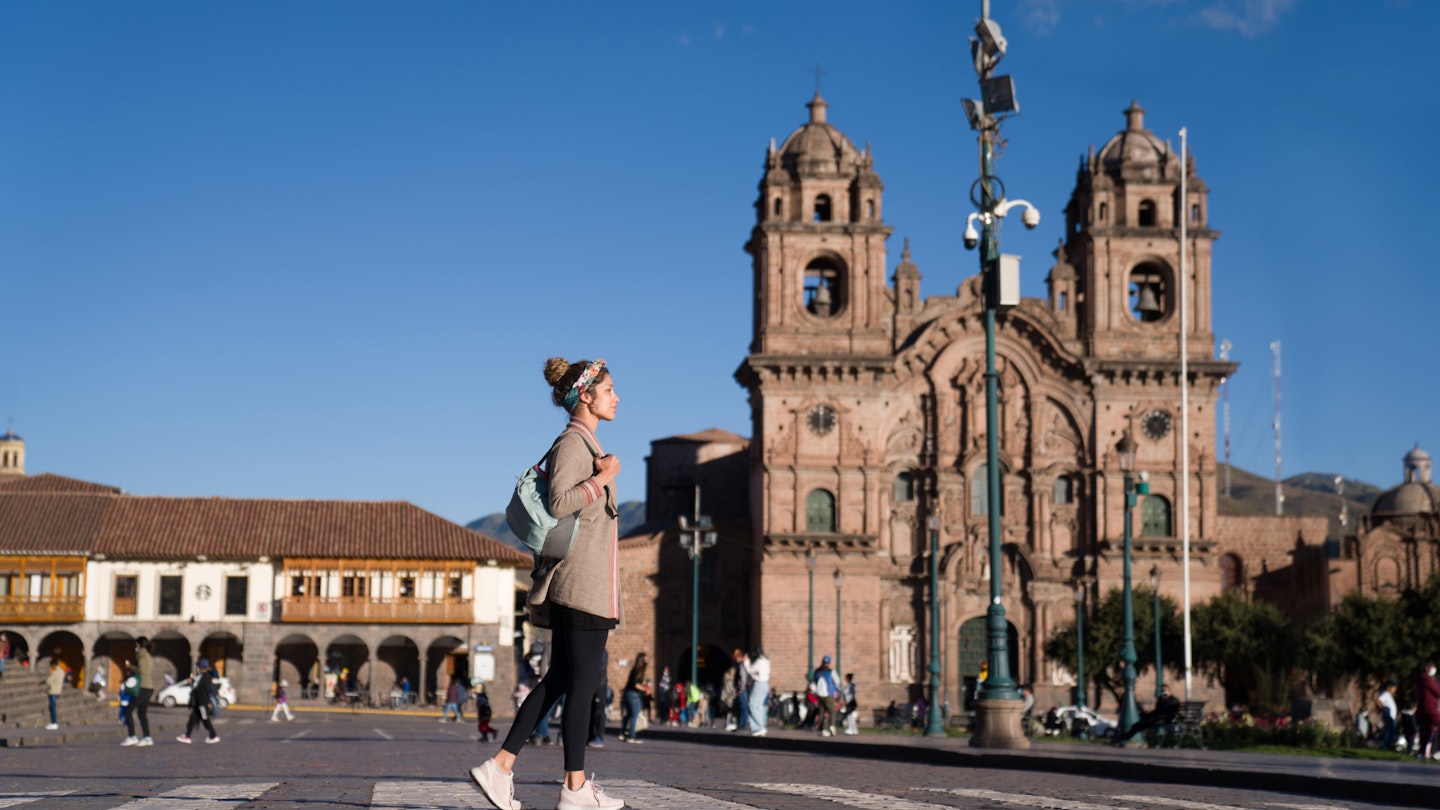
Aim to visit Cuzco during the shoulder months, just before or at the tail end of the rainy season © andresr / Getty Images
Peru is a megadiverse country, offering countless adventures and cultural experiences for the intrepid – as well as potentially endless head-scratching and headache-inducing occurrences for the uninformed traveler.
Whether you plan to stay put in the capital or venture on a circuit through each geographical region , it’s always advantageous to have local insight. Here are some of the top things to know before traveling to Peru .
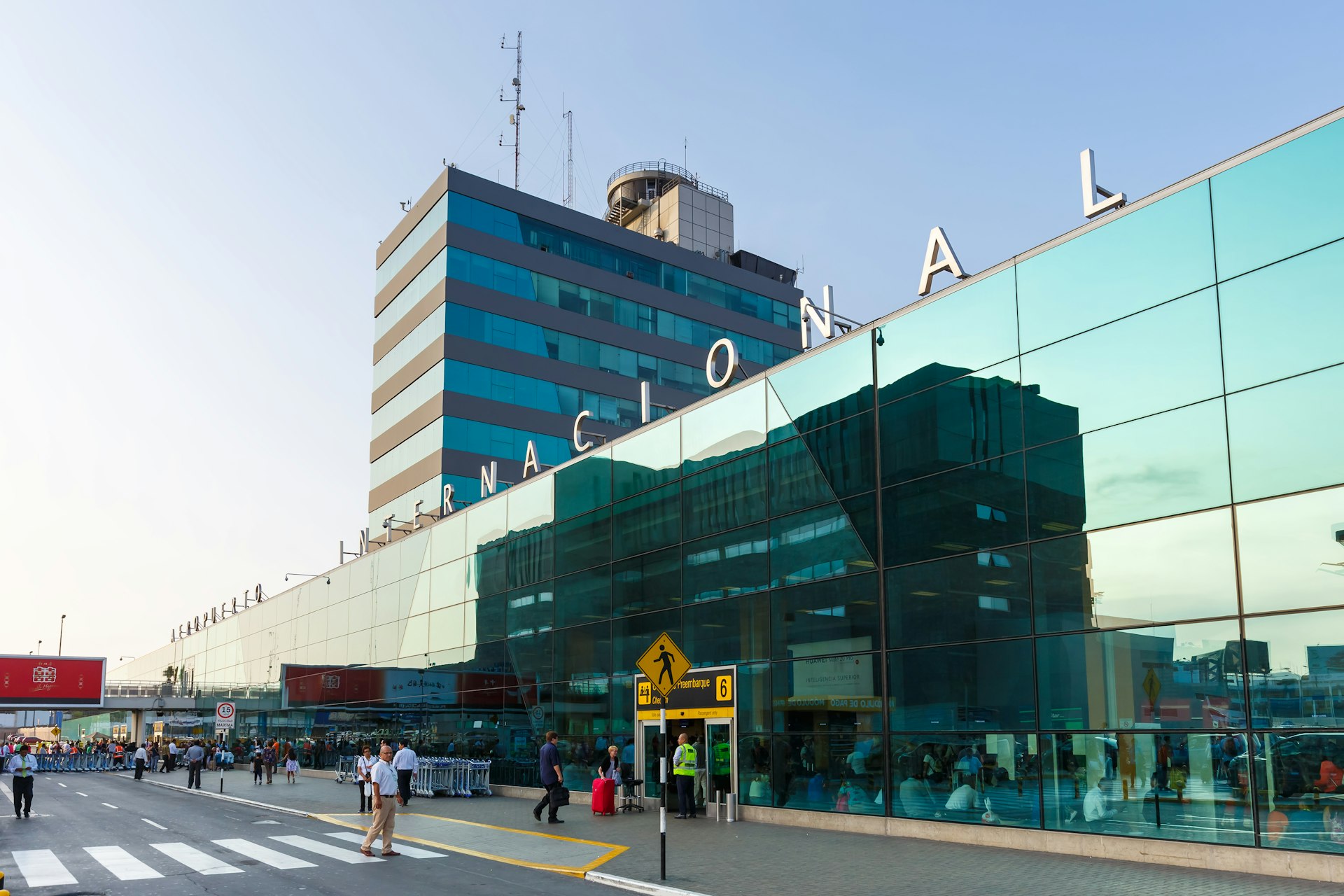
1. Peru’s only international airport is in Lima
Until the Chinchero Airport (a 45-minute drive from Cuzco ) is finished, all international air passengers to Peru will first touch land in the metropolitan area of Lima , via the Jorge Chávez International Airport.
From the airport to San Isidro, Miraflores or Barranco – neighboring districts of Lima that make up the capital’s tourist-friendly trifecta – it's usually a 40-minute taxi ride outside of rush hour.
Don’t try to pick up a taxi outside of arrivals nor from the chaotic street just beyond the airport limit; instead, choose from any of the authorized companies represented just after customs. For travelers on a budget , the safest option is the Airport Express Lima bus (with transfers to and from Miraflores only).
2. The shoulder months are the best time to visit Cuzco
The Cuzco region has two marked seasons: the rainy season (November to April) and the dry (May to October). When the rain is in full effect, areas like the idyllic Sacred Valley turn lush with native crops and tourism is comparatively low.
That said, the wet climate makes the period between January and March especially difficult (and even dangerous, in some cases) for epic hikes.
The dry months are ideal for trekking and most adventure sports – though as a direct correlation, tourism is at its highest then. The best time to visit Cuzco? Aim for the shoulder months , just before the rain (October) or at its tail end (May).

3. Book well in advance for Machu Picchu, Huayna Picchu and the Inca Trail
Is it possible to snag last-minute entry tickets to Machu Picchu ? Sure, it can happen – but as Peru’s most popular tourist attraction, it doesn't make sense to risk it.
Purchase your entry ticket at least one month in advance, especially if planning to visit the Unesco World Heritage Site between June and August (the busiest months for international visitors).
While you're at it, consider adding on the entry to Huayna Picchu, the tall peak that appears behind the citadel in classic Machu Picchu photos. Only 200 visitors a day are able to make the steep, hour-long ascent that leads to a privileged bird’s eye view of the archaeological site.
Cuzco's dry months are also the high season for one of Peru’s most epic hikes , the Inca Trail. This trek requires a permit that can only be purchased through an organized tour. Keep in mind the trail closes every February for maintenance.
4. In Peru, just one cheek kiss will do to say hello or goodbye
For some travelers, Peru’s salutation may seem too close for comfort, while others – we're looking at you, Italians – will see it as half-finished.
When meeting or greeting someone of the opposite sex or in the case of two women, Peruvians will offer an air kiss on one side of the face. Call it a lingering effect of machismo culture, but men typically greet each other with a simple handshake and hug.
Don't try to enter or leave a party without greeting everyone, be it with a hug or air kiss, as that will appear disrespectful.

5. Keep soles and centimos on hand, especially outside of major tourist zones
Credit card acceptance and even payment applications are commonplace in bustling cities, like Lima and Cuzco, though you will want to keep local currency (sol) on hand at all times.
You can’t miss a visit to open-air markets, such as those in Lima's Surquillo neighborhood and the San Pedro market in Cuzco, where vendors prefer cash. While at the market, pick up a small coin purse as public transportation and restrooms run on pocket change.
And for towns outside of the typical tourist circuit – think Tumbes in the north or Ayacucho in south-central Peru – cash on hand is a must.
6. Tipping may not be a local custom, but that doesn’t mean you shouldn’t
When it comes to dining out in Peru, there is no standard for tipping. That said, Peru’s tipping culture (or lack thereof) should be an exception to the rule of “do as the locals do.” As a visitor, go ahead and leave your waiter, barista or hostess a tip that seems appropriate to you.
7. No, your watch doesn’t need to be reset, it’s just the "hora Peruana"
La hora Peruana (Peruvian time) refers to the stereotype of Peruvians showing up late – not just 15 minutes late but upwards of an hour late.
The phrase is tossed around amongst Peruvians and expats alike, as we’ve all struggled with that landlord, friend or coworker who says they’ll be there in the morning and are a no-show until after lunch.
Of course, la hora Peruana is a generalization, but it’s best to be mentally prepared in case someone you made plans with doesn’t show up on the dot...or anywhere close to it.
8. Keep spare toilet paper in your pocket – but never flush it!
Public restrooms in Peru are infamous with international travelers. From seatless toilets to humble holes in the ground, we’ve seen it all, but those squeamish moments are nothing you can’t survive.
Follow bathroom etiquette and toss toilet paper in the wastebasket rather than flush it. Public restrooms usually aren’t stocked with toilet paper, so keep a travel-size roll in your day bag, or be prepared to pay 50 cents for a few squares upon entry.
9. Eat and drink with your gut health in mind
Let’s be honest, Peru likely became your destination of choice partly because of the reputation and recognition of its gastronomic scene .
Your senses will be tantalized by the unique kick of ají pepper in a ceviche, the sounds of sizzling suri (palm-weevil larvae) or the pink froth topping a glass of frutillada (traditional chicha , or fermented corn beer, blended with strawberries) – classic street-food items, depending on which region of Peru you’re visiting.
When it comes to street food – and especially drinks, as Peru does not have clean tap water – there’s always a risk for “travelers’ stomach.” If you have any doubt, play it safe and wait until you get to a recommended restaurant to try that dish you’ve been eyeing.

10. Take a full day (if not two) to acclimate before any high-altitude activity
No matter how much physical training you've accomplished at sea level prior to your trip, arriving at high-altitude destinations like Cuzco – 3399m (11,152ft) above sea level – can be brutal.
And what could be worse than dizziness, nausea and other symptoms of soroche (altitude sickness) keeping you from bucket-list hikes, such as Vinicunca, better known as Rainbow Mountain, 5200m (17,060ft) above sea level?
When planning your trip, include a day or two to acclimate before starting any physically demanding activity. Stay hydrated and avoid heavy food and alcohol. And whether or not you decide to take altitude pills, consider local remedies, such as muña tea and coca leaves.
Explore related stories
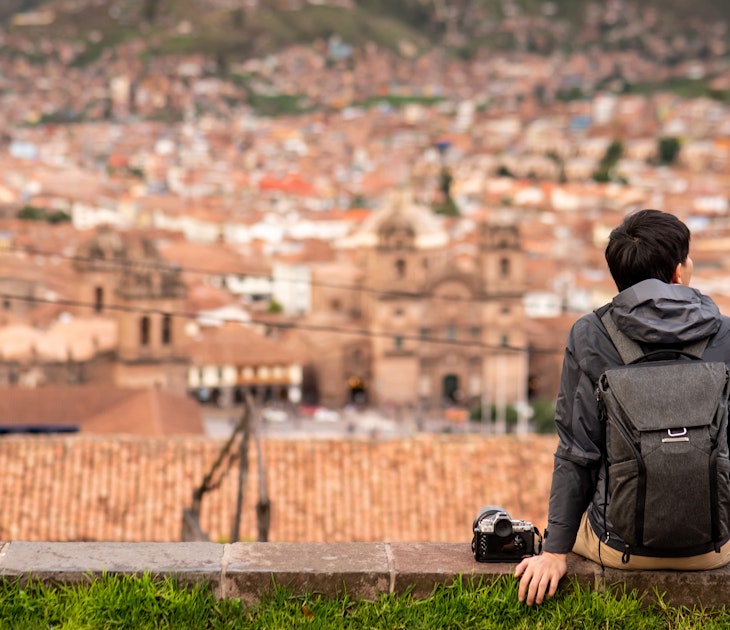
Budget Travel
Jan 10, 2024 • 6 min read
Peru has long been a destination for backpackers on a budget and now other travelers have caught on – here's how to make your money go further on the road.

Dec 27, 2023 • 8 min read

Dec 14, 2023 • 3 min read
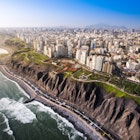
Dec 12, 2023 • 5 min read
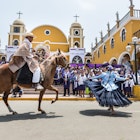
Nov 15, 2023 • 4 min read

Nov 14, 2023 • 8 min read

Nov 8, 2023 • 7 min read
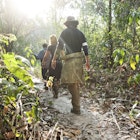
Nov 6, 2023 • 5 min read

Nov 6, 2023 • 8 min read
We’re sorry, this site is currently experiencing technical difficulties. Please try again in a few moments. Exception: request blocked
- Skip to main content
- Skip to "About this site"
Language selection
Search travel.gc.ca.
Help us to improve our website. Take our survey !
COVID-19: travel health notice for all travellers
Peru travel advice
Latest updates: The Health section was updated - travel health information (Public Health Agency of Canada)
Last updated: April 17, 2024 12:35 ET
On this page
Safety and security, entry and exit requirements, laws and culture, natural disasters and climate, peru - exercise a high degree of caution.
Exercise a high degree of caution in Peru due to high levels of crime, as well as social conflicts and strikes that may occur across the country.
Regional advisory - Avoid non-essential travel
- Huallaga and Tocache provinces in the department of San Martín
- the Upper Huallaga and Ene river valleys in the departments of Huánuco and San Martín
- Padre Abad province in the department of Ucayali
- Huacaybamba, Humalíes, Leoncio Prado and Marañón provinces in the department of Huánuco
- Concepción and Satipo provinces in the department of Junín
- Tayacaja province in the department of Huancavelica
- the districts of Abancay, Andahuaylas and Chincheros in the department of Apurímac
- Huanta and La Mar provinces, in the department of Ayacucho
- Valley of Apurimac, Ene and Mantaro rivers (VRAEM)
Border area with Colombia - Avoid non-essential travel
Avoid non-essential travel to areas within 20 km of the border with Colombia due to drug trafficking and occasional incursions by armed guerrilla forces from Colombia into Peru.
Border area with Ecuador - Avoid non-essential travel
Avoid non-essential travel to areas within 20 km of the border with Ecuador, especially in the Cordillera del Cóndor region, due to the safety threat posed by landmines.
Back to top
State of emergency in regions bordering Ecuador
On January 10, 2024, the Peruvian government declared a state of emergency in the northern regions bordering Ecuador following the Government of Ecuador’s declaration of a nationwide state of “internal armed conflict” on January 9, 2024. The state of emergency is in effect in the following regions:
If you are in these regions, you should carry identification with you at all times.
Demonstrations and strikes
Demonstrations and strikes take place regularly throughout the country. Strikes can complicate travel and disrupt public transport and services, including your ability to travel to or leave isolated tourist destinations such as Machu Picchu. They could also lead to border closures with Bolivia. Protestors may also block rivers essential for transportation in some remote regions, including the Manu region of Madre de Dios and Iquitos region. This may result in the temporary detainment of tourists.
Even peaceful demonstrations can turn violent at any time. Police have used tear gas and other methods to disperse crowds in the past. Authorities often declare a state of emergency in response to demonstrations.
Peruvian law prohibits political activities by foreigners. You may face detention or deportation if you take part in a demonstration.
- Avoid areas where demonstrations and large gatherings are taking place
- Follow the instructions of local authorities
- Consult local media to be aware of strikes and demonstrations that may affect your stay or travel plans
Mass gatherings (large-scale events)
State of Emergency
The Peruvian government periodically declares a state of emergency in certain areas to allow the military to assist police forces to respond to security incidents and natural disasters. When a state of emergency is in effect, security forces have increased rights to:
- restrict freedom of movement
- monitor correspondence
- conduct search and seizures
- detain persons of interest
Border area with Colombia
Criminal activity related to narcotics trafficking and occasional incursions by armed guerrilla forces from Colombia at Cordillera del Cóndor, Peru, pose a threat to personal security.
Border area with Ecuador
Cross the Peru–Ecuador border at official crossing points only due to the presence of landmines along the border.
Basic services in the Tumbes district have become increasingly difficult to access due to an increased number of migrants entering Peru from the North land border with Ecuador. The increased population has limited the provision of these services.
Valle de los Ríos Apurímac, Ene y Mantaro (VRAEM)
Drug trafficking.
Cocaine production and trafficking occurs inVRAEM. Travel is particularly dangerous in areas where there is coca cultivation and processing.
Domestic terrorism
Incidents of domestic terrorism have occurred in VRAEM, particularly the region where the Apurímac, Ayacucho, Cuzco and Junín departments meet.
Crime rates are high throughout the country.
- Maintain a high level of vigilance and personal security awareness, especially at night
- Avoid walking in deserted or under-populated areas
- Travel in groups whenever possible
Petty crime
Petty crime, such as pickpocketing and purse snatching, occurs, particularly in Lima, in other cities and even in crowded, public areas. Theft occurs frequently in hotels, restaurants, bus stations and airports, on intercity buses and microbuses and while hailing taxis.
- Avoid wearing expensive watches and jewellery, or showing signs of affluence
- Ensure that your belongings, including your passport and other travel documents, are secure at all times
- Never leave bags unattended
Pickpockets and bag snatchers may work in pairs or groups and employ a variety of ruses to divert their victim’s attention. A common scam involves spraying a substance on victims and then robbing them while pretending to help clean the stain, or distracting the victim by asking questions while another person perpetrates the theft. In some cases, thieves on motorcycles will snatch purses, backpacks or cellular phones.
Violent crime
Violent crime occurs. Incidents have included:
- kidnappings
Armed robbery
Armed robberies are on the rise. While most victims are not physically injured, criminals will not hesitate to use force when opposed.
- If you are robbed, hand over your cash, electronic devices and valuables without resistance
- Be particularly vigilant after visiting a bank, an ATM or a change bureau, as thieves may follow and rob victims.
- Use ATMs inside banks and during regular hours of service, when guards are on duty
Assaults have occurred along the Inca Trail and in the Huaraz region of the Cordillera Blanca mountains. Hiking in these regions should be done in groups.
Express kidnappings involving tourists have occurred. Victims are usually abducted for a few hours and forced to withdraw money from ATMs for their release. Most express kidnappings take place at night, but incidents also occur during daylight hours. Incidents often involve criminals posing as taxi drivers, or taxi drivers working for organized gangs. Virtual kidnappings occur throughout the country. Criminals use stolen cellphones to contact family members claiming to have kidnapped the owner of the phone and then ask for ransom money.
- Be suspicious of strangers approaching you on the street
- Never leave your cellphone unattended
- Be cautious when using cellphones and smart devices in public as they are often targeted by thieves, especially while people are using them
- Ensure your phone is password protected
Organized crime
Organized crime is reportedly increasing in parts of Lima Province and in some districts of the Department of Piura. In some parts of the country, military and security forces have been deployed to assist police in combatting organized crime.
Incidents of domestic terrorism occur, particularly in remote jungle areas such as:
- parts of the Huancavelica and Ucayali departments
- the Upper Huallaga river valley in the Huánuco and San Martín departments.
Incidents have included:
- temporary ambushes of small villages
- bombings or threats of violence against local security forces or community figures
Overland travel in these regions is unsafe.
Counterfeit currency
Counterfeit currency in both sol and U.S. dollars is a growing and serious problem. Counterfeit bills are widely distributed, including by banks, casinos and local stores.
Avoid moneychangers on the street, as they may carry counterfeit currency or work with pickpockets.
Credit card fraud
Credit card and ATM fraud occurs. Be cautious when using debit or credit cards:
- pay careful attention when your cards are being handled by others
- use ATMs located in well-lit public areas or inside a bank or business
- avoid using card readers with an irregular or unusual feature
- cover the keypad with one hand when entering your PIN
- check for any unauthorized transactions on your account statements
Criminals posing as taxi drivers often rob tourists along the route to and from Lima’s Jorge Chávez International Airport.
- Use a secure taxi service when arriving at and leaving the airport
- Exercise caution en route to and from your hotel
Thieves also pose as police officers to gain the confidence and cooperation of their potential victims.
- If you are stopped by local authorities, ask to see official identification and record the officer’s name, badge number and district.
- For traffic violations, request that the officer issue you a fine in writing, which is payable at a later date.
- You should also note the location of the arrest.
Legitimate police officers have also extorted money in exchange for dismissing minor offences or traffic violations. They have also stolen money and valuables during searches.
- If you are searched, even at the airport, ensure you have all your belongings before leaving
- If you are planning to participate in volunteer activities in Peru, ensure that the company organizing your trip is legitimate
- Make sure your accommodations and return arrangements are secure before travelling
Useful links
- Lima Airport Partners
- Overseas fraud
- Volunteering abroad
Spiked food and drinks
Snacks, beverages, gum and cigarettes may contain drugs that could put you at risk of sexual assault and robbery.
- Be wary of accepting these items from new acquaintances
- Never leave food or drinks unattended or in the care of strangers
Women’s safety
Women travelling alone may be subject to some forms of harassment and verbal abuse. Incidents of sexual assault, including rape, occur throughout the country, particularly in tourist destinations. In some cases, tour guides have been implicated.
- Do not travel alone, especially after dark.
- Remain particularly vigilant at bus terminals and in taxis.
- Be careful when dealing with strangers or recent acquaintances, especially regarding the acceptance of rides or other invitations.
Women reporting sexual assault should contact police immediately. Medical examinations at identified clinics are part of the investigation process. Women who have delayed reporting may experience more scrutiny by local authorities.
Advice for women travellers
Adventure tourism
Each year, several hikers and climbers are victims of serious, sometimes fatal, accidents in the Andes, including at the Huayna Picchu peak near Machu Picchu and the Cordillera Blanca region in Huaraz, where Peru’s highest peaks are located.
The Inca Trail is usually closed each year in February for maintenance. Other trails, such as those found in Ollantaytambo, may be poorly marked. Hikers have become lost. Be aware that steep or slippery areas are neither fenced nor marked.
In November 2023, the Cusipata District in Quispicanchi Province closed two access routes to Vinicunca, the “Rainbow Mountain.” The closure follows violent disputes between the municipalities surrounding the access routes. Access to Vinicunca from Quispicanchi Province will be closed indefinitely, but access remains open via the Pitumarca District in Canchis Province.
Remote areas of Peru, where popular jungle excursions operate, may not have cellphone coverage or internet access.
If you intend to hike, trek or climb:
- never do so alone, and always hire an experienced guide from a reputable company
- only use licensed companies recommended by the Ministry of Tourism for adventure tours and sports
- exercise extreme caution while climbing, as local authorities have limited rescue capabilities
- buy travel insurance that includes helicopter rescue and medical evacuation
- ensure that your physical condition is good enough to meet the challenges of your activity
- make sure that you’re properly equipped and well-informed about weather and other conditions that may pose a hazard
- inform a family member or friend of your itinerary, including when you expect to be back to camp
- know the symptoms of acute altitude sickness, which can be fatal
- obtain detailed information on trekking routes or ski slopes before setting out and do not venture off marked trails or slopes
- always leave the contact information of the tour operator with your family and friends
- always hire an experienced guide from a reputable company if you travel in remote areas
- iPerú - Peruvian government’s Tourist Information and Assistance
- APOTUR - The Peruvian Association of Incoming and Domestic Tour Operators (in Spanish)
- APAVIT - Peruvian Association of Travel and Tourist Agencies (in Spanish)
- APTAE - Peruvian association of adventure, eco, and specialized tourism (in Spanish)
- Qualified Tourism Service Companies - Ministry of foreign trade and tourism (in Spanish)
Water activities
There have been several recent white-water rafting accidents and drownings involving tourists, particularly on the Urubamba River near Cuzco. Companies offering white-water rafting, their guides and their equipment may not be held to the same standards as similar companies in Canada. Rescue services may not be consistent with international standards.
Coastal waters can be dangerous. Strong currents exist in the Pacific Ocean and in rivers. Life guards are not always present or properly trained at beaches.
Swimming in jungle lakes and rivers can be dangerous due to the presence of parasites and wildlife.
Seek advice and consult residents and local authorities about conditions before swimming, surfing or participating in other aquatic activities.
Water safety abroad
Ayahuasca ceremonies
Spiritual cleansing and ayahuasca ceremonies, offered by shamans and other individuals, involve consuming substances that can cause medical complications and severely impair cognitive and physical abilities. Exposure to these substances has led to serious illness, injury, assault and even the death of several tourists.
Ceremonies often take place in remote areas with no access to medical or mental health facilities or resources and limited communication with local authorities. Most of the time, the facilities lack basic first aid or emergency plans for those suffering from physical or psychological illness from these ceremonies. Ayahuasca ceremonies are not regulated and there is no way to assess the safety of any of the services, the operators or the shamans.
Road safety
Road conditions and road safety are poor throughout the country. Drivers are extremely aggressive, and they do not respect traffic laws. Mountainous roads can be particularly dangerous, especially at night. Poor signage also poses a hazard. Accidents causing fatalities are common.
Regular police spot checks can cause traffic delays.
When renting a vehicle, always purchase insurance. Most drivers in Peru have only the minimum required car insurance, which may not adequately cover accidents.
Vehicles are a target for robbery. Criminals have thrown objects in front of oncoming traffic in the hope that cars will stop. If this occurs and you need to stop, do so only in a safe location, such as a gas station.
- While travelling by car, keep your doors locked and windows shut at all times
- Keep your personal belongings in the trunk of the vehicle, as criminals have been known to shatter windows to “smash and grab” and to attempt entry when they see travel bags or merchandise
- Avoid travelling by road outside of major cities after dark, when there is a higher risk of robbery
State of the roads in Peru in real time – Government of Peru (in Spanish)
Thefts on boats by river pirates occur along rivers in the Amazon jungle.
Mariners should take appropriate precautions.
Live piracy report - International Maritime Bureau
Public transportation
Buses and minibuses operate between most major cities. Demonstrations and strikes can lead to disruptions to traffic and public transportation.
Many of the buses and combis in Lima are old, poorly maintained and overcrowded. Drivers of these vehicles tend to dominate the roads and disregard other drivers or pedestrians.
Intercity bus travel can be dangerous due to the risk of bus accidents, which are usually caused by excessive speed, poor vehicle maintenance and driver fatigue. Armed gangs have been known to stop buses to rob travellers, especially at night. Incidents of assaults on buses have also been reported.
The Government of Peru publishes a list of the bus companies with the highest rates of involvement in fatal or serious injury traffic accidents.
- Only use reputable transportation companies
- Contact your travel agency for a list of recommended intercity bus companies
Ministry of Transportation - Government of Peru (in Spanish)
Trains operate between Arequipa-Cusco-Puno and between Cusco-Ollantaytambo-Machu Picchu . Demonstrations, strikes and derailments can disrupt travel by train, including trains to or from Machu Picchu.
- Train services – Peru rail
- Train to Machu Picchu - Inca rail
Licensed taxis are not metered. Taxi drivers sometimes do not provide change or will continue to drive until they can obtain change.
- Do not hail taxis on the street
- Reserve a taxi by calling a reputable taxi company or use taxi services associated with major hotels
- Agree to a fare prior to departure and do not pay until you have reached your destination
- Try to carry the exact fare
We do not make assessments on the compliance of foreign domestic airlines with international safety standards.
Information about foreign domestic airlines
entry_restrictions_at_land_and_river_borders_with_ecuador
Entry restrictions at land and river borders with Ecuador
On January 11, 2024, the Government of Ecuador announced new entry restrictions in response to the ongoing state of internal armed conflict.
All foreigners entering Ecuador at crossing points with the land or river borders will need to present a criminal records check from their country of origin or residence. Both the original criminal record check and the Spanish translation must be apostilled, and cover the past five years. Minors travelling with their family members will generally be exempt.
The Apostille Convention took effect in Canada on January 11, 2024. An apostille is a standard certificate allowing documents to be accepted in all countries where the convention is in effect.
- Migration information – Ecuador Immigration Agency (in Spanish)
- Changes to authentication services in Canada
- Apostilles for documents
Every country or territory decides who can enter or exit through its borders. The Government of Canada cannot intervene on your behalf if you do not meet your destination’s entry or exit requirements.
We have obtained the information on this page from the Peruvian authorities. It can, however, change at any time.
Verify this information with the Foreign Representatives in Canada .
Entry requirements vary depending on the type of passport you use for travel.
Before you travel, check with your transportation company about passport requirements. Its rules on passport validity may be more stringent than the country’s entry rules.
Regular Canadian passport
Your passport must be valid for at least 6 months beyond the date you expect to leave Peru.
Passport for official travel
Different entry rules may apply.
Official travel
Passport with “X” gender identifier
While the Government of Canada issues passports with an “X” gender identifier, it cannot guarantee your entry or transit through other countries. You might face entry restrictions in countries that do not recognize the “X” gender identifier. Before you leave, check with the closest foreign representative for your destination.
Other travel documents
Different entry rules may apply when travelling with a temporary passport or an emergency travel document. Before you leave, check with the closest foreign representative for your destination.
- Foreign Representatives in Canada
- Canadian passports
Tourist visa: not required for a stay of less than 90 days per 365 day period Business visa: required Student visa: required
If you entered Peru with a business visa, you must obtain a certificate from the Peruvian Ministry of the Economy to prove that all Peruvian taxes on income earned during the trip have been paid prior to leaving the country. The certification is required even if no money was paid or earned and must be presented to the central Peruvian immigration office in Lima before departure.
Entering the country
You must register your entry into Peru at the port of entry or checkpoint.
- Only cross the border at official checkpoints
- Ensure the immigration office at your port of entry is open at the time you intend to cross the border
Other entry requirements
Customs officials may ask you to show them:
- a return or onward ticket
- proof that you have a place to stay
- proof that you have sufficient funds for the duration of your stay
Length of stay
As a Canadian tourist, you may stay in Peru for up to 90 days in a 365-day period.
Overstaying is a criminal offence. There is a fine for each day of overstay. This fee must be paid upon exiting the country.
Dual citizenship
Peruvian–Canadians entering Peru using their Canadian passport are subject to visit restrictions, including length of stay and associated fines. Dual nationals must use the same nationality to enter and exit the country.
Children and travel
Travellers under 18 exiting Peru after a stay of 183 days are automatically protected by Peru’s law on minors and will require the authorization of both parents/guardians to exit the country.
Children who have resident status in Peru must have written permission from the non-accompanying parents to leave the country.
Children born of Canadian parents in Peru require a Peruvian passport to leave the country for the first time. Contact Peruvian immigration officials for more information.
- Travelling with children
Yellow fever
Learn about potential entry requirements related to yellow fever (vaccines section).
Relevant Travel Health Notices
- Global Measles Notice - 13 March, 2024
- Zika virus: Advice for travellers - 31 August, 2023
- COVID-19 and International Travel - 13 March, 2024
- Dengue: Advice for travellers - 8 April, 2024
This section contains information on possible health risks and restrictions regularly found or ongoing in the destination. Follow this advice to lower your risk of becoming ill while travelling. Not all risks are listed below.
Consult a health care professional or visit a travel health clinic preferably 6 weeks before you travel to get personalized health advice and recommendations.
Routine vaccines
Be sure that your routine vaccinations , as per your province or territory , are up-to-date before travelling, regardless of your destination.
Some of these vaccinations include measles-mumps-rubella (MMR), diphtheria, tetanus, pertussis, polio, varicella (chickenpox), influenza and others.
Pre-travel vaccines and medications
You may be at risk for preventable diseases while travelling in this destination. Talk to a travel health professional about which medications or vaccines may be right for you, based on your destination and itinerary.
Yellow fever is a disease caused by a flavivirus from the bite of an infected mosquito.
Travellers get vaccinated either because it is required to enter a country or because it is recommended for their protection.
- There is a risk of yellow fever in this country.
Country Entry Requirement*
- Proof of vaccination is not required to enter this country.
Recommendation
- Vaccination is recommended depending on your itinerary.
- Contact a designated Yellow Fever Vaccination Centre well in advance of your trip to arrange for vaccination.
- Discuss travel plans, activities, and destinations with a health care professional.
- Protect yourself from mosquito bites.
About Yellow Fever Yellow Fever Vaccination Centres in Canada * It is important to note that country entry requirements may not reflect your risk of yellow fever at your destination. It is recommended that you contact the nearest diplomatic or consular office of the destination(s) you will be visiting to verify any additional entry requirements.
There is a risk of hepatitis A in this destination. It is a disease of the liver. People can get hepatitis A if they ingest contaminated food or water, eat foods prepared by an infectious person, or if they have close physical contact (such as oral-anal sex) with an infectious person, although casual contact among people does not spread the virus.
Practise safe food and water precautions and wash your hands often. Vaccination is recommended for all travellers to areas where hepatitis A is present.
Measles is a highly contagious viral disease. It can spread quickly from person to person by direct contact and through droplets in the air.
Anyone who is not protected against measles is at risk of being infected with it when travelling internationally.
Regardless of where you are going, talk to a health care professional before travelling to make sure you are fully protected against measles.
Hepatitis B is a risk in every destination. It is a viral liver disease that is easily transmitted from one person to another through exposure to blood and body fluids containing the hepatitis B virus. Travellers who may be exposed to blood or other bodily fluids (e.g., through sexual contact, medical treatment, sharing needles, tattooing, acupuncture or occupational exposure) are at higher risk of getting hepatitis B.
Hepatitis B vaccination is recommended for all travellers. Prevent hepatitis B infection by practicing safe sex, only using new and sterile drug equipment, and only getting tattoos and piercings in settings that follow public health regulations and standards.
Coronavirus disease (COVID-19) is an infectious viral disease. It can spread from person to person by direct contact and through droplets in the air.
It is recommended that all eligible travellers complete a COVID-19 vaccine series along with any additional recommended doses in Canada before travelling. Evidence shows that vaccines are very effective at preventing severe illness, hospitalization and death from COVID-19. While vaccination provides better protection against serious illness, you may still be at risk of infection from the virus that causes COVID-19. Anyone who has not completed a vaccine series is at increased risk of being infected with the virus that causes COVID-19 and is at greater risk for severe disease when travelling internationally.
Before travelling, verify your destination’s COVID-19 vaccination entry/exit requirements. Regardless of where you are going, talk to a health care professional before travelling to make sure you are adequately protected against COVID-19.
The best way to protect yourself from seasonal influenza (flu) is to get vaccinated every year. Get the flu shot at least 2 weeks before travelling.
The flu occurs worldwide.
- In the Northern Hemisphere, the flu season usually runs from November to April.
- In the Southern Hemisphere, the flu season usually runs between April and October.
- In the tropics, there is flu activity year round.
The flu vaccine available in one hemisphere may only offer partial protection against the flu in the other hemisphere.
The flu virus spreads from person to person when they cough or sneeze or by touching objects and surfaces that have been contaminated with the virus. Clean your hands often and wear a mask if you have a fever or respiratory symptoms.
Malaria is a serious and sometimes fatal disease that is caused by parasites spread through the bites of mosquitoes. There is a risk of malaria in certain areas and/or during a certain time of year in this destination.
Antimalarial medication may be recommended depending on your itinerary and the time of year you are travelling. Consult a health care professional or visit a travel health clinic before travelling to discuss your options. It is recommended to do this 6 weeks before travel, however, it is still a good idea any time before leaving. Protect yourself from mosquito bites at all times: • Cover your skin and use an approved insect repellent on uncovered skin. • Exclude mosquitoes from your living area with screening and/or closed, well-sealed doors and windows. • Use insecticide-treated bed nets if mosquitoes cannot be excluded from your living area. • Wear permethrin-treated clothing. If you develop symptoms similar to malaria when you are travelling or up to a year after you return home, see a health care professional immediately. Tell them where you have been travelling or living.
In this destination, rabies is carried by dogs and some wildlife, including bats. Rabies is a deadly disease that spreads to humans primarily through bites or scratches from an infected animal. While travelling, take precautions , including keeping your distance from animals (including free-roaming dogs), and closely supervising children.
If you are bitten or scratched by an animal while travelling, immediately wash the wound with soap and clean water and see a health care professional. Rabies treatment is often available in this destination.
Before travel, discuss rabies vaccination with a health care professional. It may be recommended for travellers who are at high risk of exposure (e.g., occupational risk such as veterinarians and wildlife workers, children, adventure travellers and spelunkers, and others in close contact with animals).
Safe food and water precautions
Many illnesses can be caused by eating food or drinking beverages contaminated by bacteria, parasites, toxins, or viruses, or by swimming or bathing in contaminated water.
- Learn more about food and water precautions to take to avoid getting sick by visiting our eat and drink safely abroad page. Remember: Boil it, cook it, peel it, or leave it!
- Avoid getting water into your eyes, mouth or nose when swimming or participating in activities in freshwater (streams, canals, lakes), particularly after flooding or heavy rain. Water may look clean but could still be polluted or contaminated.
- Avoid inhaling or swallowing water while bathing, showering, or swimming in pools or hot tubs.
Travellers' diarrhea is the most common illness affecting travellers. It is spread from eating or drinking contaminated food or water.
Risk of developing travellers' diarrhea increases when travelling in regions with poor standards of hygiene and sanitation. Practise safe food and water precautions.
The most important treatment for travellers' diarrhea is rehydration (drinking lots of fluids). Carry oral rehydration salts when travelling.
Typhoid is a bacterial infection spread by contaminated food or water. Risk is higher among children, travellers going to rural areas, travellers visiting friends and relatives or those travelling for a long period of time.
Travellers visiting regions with a risk of typhoid, especially those exposed to places with poor sanitation, should speak to a health care professional about vaccination.
Insect bite prevention
Many diseases are spread by the bites of infected insects such as mosquitoes, ticks, fleas or flies. When travelling to areas where infected insects may be present:
- Use insect repellent (bug spray) on exposed skin
- Cover up with light-coloured, loose clothes made of tightly woven materials such as nylon or polyester
- Minimize exposure to insects
- Use mosquito netting when sleeping outdoors or in buildings that are not fully enclosed
To learn more about how you can reduce your risk of infection and disease caused by bites, both at home and abroad, visit our insect bite prevention page.
Find out what types of insects are present where you’re travelling, when they’re most active, and the symptoms of the diseases they spread.
There is a risk of chikungunya in this country. The risk may vary between regions of a country. Chikungunya is a virus spread through the bite of an infected mosquito. Chikungunya can cause a viral disease that typically causes fever and pain in the joints. In some cases, the joint pain can be severe and last for months or years.
Protect yourself from mosquito bites at all times. There is no vaccine available for chikungunya.
Cutaneous and mucosal leishmaniasis causes skin sores and ulcers. It is caused by a parasite spread through the bite of a female sandfly.
Risk is generally low for most travellers. Protect yourself from sandfly bites, which typically occur after sunset in rural and forested areas and in some urban centres. There is no vaccine or medication to protect against leishmaniasis.
- In this country, dengue is a risk to travellers. It is a viral disease spread to humans by mosquito bites.
- Dengue can cause flu-like symptoms. In some cases, it can lead to severe dengue, which can be fatal.
- The level of risk of dengue changes seasonally, and varies from year to year. The level of risk also varies between regions in a country and can depend on the elevation in the region.
- Mosquitoes carrying dengue typically bite during the daytime, particularly around sunrise and sunset.
- Protect yourself from mosquito bites . There is no vaccine or medication that protects against dengue.
Zika virus is a risk in this country.
Zika virus is primarily spread through the bite of an infected mosquito. It can also be sexually transmitted. Zika virus can cause serious birth defects.
During your trip:
- Prevent mosquito bites at all times.
- Use condoms correctly or avoid sexual contact, particularly if you are pregnant.
If you are pregnant or planning a pregnancy, you should discuss the potential risks of travelling to this destination with your health care provider. You may choose to avoid or postpone travel.
For more information, see Zika virus: Pregnant or planning a pregnancy.
American trypanosomiasis (Chagas disease) is a risk in this country. It is caused by a parasite spread by infected triatomine bugs. The infection can be inactive for decades, but humans can eventually develop complications causing disability and even death.
Risk is generally low for most travellers. Protect yourself from triatomine bugs, which are active at night, by using mosquito nets if staying in poorly-constructed housing. There is no vaccine available for Chagas disease.
Animal precautions
Some infections, such as rabies and influenza, can be shared between humans and animals. Certain types of activities may increase your chance of contact with animals, such as travelling in rural or forested areas, camping, hiking, and visiting wet markets (places where live animals are slaughtered and sold) or caves.
Travellers are cautioned to avoid contact with animals, including dogs, livestock (pigs, cows), monkeys, snakes, rodents, birds, and bats, and to avoid eating undercooked wild game.
Closely supervise children, as they are more likely to come in contact with animals.
There is a risk of plague in this country. Plague is a bacterial disease that can cause serious illness, and if left untreated, death.
The occurrence of cases in areas where the plague bacteria are known to circulate can be influenced by weather and environmental conditions. In some countries, this results in seasonal outbreaks. Travellers to areas where plague routinely occurs may be at risk if they are camping, hunting, or in contact with rodents.
Plague is spread by:
- bites from fleas infected with the plague
- direct contact with body fluids or tissues from an animal or person who is sick with or has died from plague
Overall risk to travellers is low. Protect yourself by reducing contact with fleas and potentially infected rodents and other wildlife.
Person-to-person infections
Stay home if you’re sick and practise proper cough and sneeze etiquette , which includes coughing or sneezing into a tissue or the bend of your arm, not your hand. Reduce your risk of colds, the flu and other illnesses by:
- washing your hands often
- avoiding or limiting the amount of time spent in closed spaces, crowded places, or at large-scale events (concerts, sporting events, rallies)
- avoiding close physical contact with people who may be showing symptoms of illness
Sexually transmitted infections (STIs) , HIV , and mpox are spread through blood and bodily fluids; use condoms, practise safe sex, and limit your number of sexual partners. Check with your local public health authority pre-travel to determine your eligibility for mpox vaccine.
Tuberculosis is an infection caused by bacteria and usually affects the lungs.
For most travellers the risk of tuberculosis is low.
Travellers who may be at high risk while travelling in regions with risk of tuberculosis should discuss pre- and post-travel options with a health care professional.
High-risk travellers include those visiting or working in prisons, refugee camps, homeless shelters, or hospitals, or travellers visiting friends and relatives.
Medical services and facilities
Quality of care varies throughout the country.
Private hospitals and clinics in urban centres are well-staffed and -equipped to handle any emergency or medical issue. Public hospitals and rural facilities, even in some tourist destinations and major cities, may not meet Canadian standards or may be inadequate to treat serious conditions.
Cases of serious injury or illness in remote areas may require evacuation to the nearest adequate medical facility in the country. Clinic, hospital and evacuation expenses can be costly and the service provider often expects immediate cash payment or confirmation of payment from an insurance company.
Make sure you get travel insurance that includes coverage for medical evacuation and hospital stays.
Travel health and safety
Keep in Mind...
The decision to travel is the sole responsibility of the traveller. The traveller is also responsible for his or her own personal safety.
Be prepared. Do not expect medical services to be the same as in Canada. Pack a travel health kit , especially if you will be travelling away from major city centres.
You must abide by local laws.
Learn about what you should do and how we can help if you are arrested or detained abroad .
Penalties for possession, use or trafficking of illegal drugs are severe. Convicted offenders can expect lengthy jail sentences, regardless of the amount of narcotics seized at arrest.
If you are arrested in Peru, you should expect lengthy delays to resolve your case, pre-trial detention in harsh conditions and significant related expenses.
- Pack your own luggage and monitor it closely at all times
- Never transport other people’s packages, bags or suitcases
Drugs, alcohol and travel
Identification
You must carry photo identification at all times. Keep a photocopy of your passport in a safe place, in case it's lost or confiscated. Failure to show identification could result in detention.
Peruvian authorities may impose fines and other penalties for any action considered to be disrespectful at historical and archaeological sites such as Machu Picchu, Ollantaytambo and Saqsayhuaman. Visitors to Machu Picchu must adhere to strict regulations regarding entry restrictions and behaviour within the site. Check with your travel guide or agent for the latest information.
Peruvian law strictly prohibits the export of antiques and artefacts (huacos) from pre-colonial civilizations. Purchase reproductions of colonial or pre-colonial art from reputable dealers only and insist on obtaining documentation from Peru's National Institute of Culture to prove that the object is a reproduction and may be exported.
The export of coca tea bags and products is prohibited.
It is illegal to remove certain fauna and flora items from Peru. Items made from or displaying animals, insects or plants may be seized. If you are convicted of possession of such items, you could face heavy fines or jail sentences.
National Forest and Wildlife Service (SERFOR) - Ministry of Agriculture and Irrigation of Peru (in Spanish)
Photography
It is forbidden to photograph military installations.
2SLGBTQI+ travellers
Peruvian law does not prohibit sexual acts between individuals of the same sex. However, homosexuality is not widely accepted in Peruvian society.
Travel and your sexual orientation, gender identity, gender expression and sex characteristics
Dual citizenship is legally recognized in Peru.
If you are a Canadian citizen, but also a citizen of Peru, our ability to offer you consular services may be limited while you're there. You may also be subject to different entry/exit requirements .
Travellers with dual citizenship
International Child Abduction
The Hague Convention on the Civil Aspects of International Child Abduction is an international treaty. It can help parents with the return of children who have been removed to or retained in certain countries in violation of custody rights. The convention applies between Canada and Peru.
If your child was wrongfully taken to, or is being held in Peru, and if the applicable conditions are met, you may apply for the return of your child to the Peruvian court.
If you are in this situation:
- act as quickly as you can
- contact the Central Authority for your province or territory of residence for information on starting an application under The Hague Convention
- consult a lawyer in Canada and in Peru to explore all the legal options for the return of your child
- report the situation to the nearest Canadian government office abroad or to the Vulnerable Children’s Consular Unit at Global Affairs Canada by calling the Emergency Watch and Response Centre
If your child was removed from a country other than Canada, consult a lawyer to determine if The Hague Convention applies.
Be aware that Canadian consular officials cannot interfere in private legal matters or in another country’s judicial affairs.
- List of Canadian Central Authorities for the Hague Convention
- International Child Abduction: A Guidebook for Left-Behind Parents
- The Hague Convention - Hague Conference on Private International Law
- Canadian embassies and consulates by destination
- Emergency Watch and Response Centre
You must carry an international driving permit. A foreign driver's licence can be used only in Lima and only for 30 days after arrival.
Carry identification and vehicle registration at all times.
International Driving Permit
The currency is the Peruvian sol (PEN). The U.S. dollar is widely accepted.
Credit cards are not commonly accepted outside major cities. Many establishments will request to see a passport to confirm the identity of the person using the credit card.
ATMs are not easily accessible in small towns. They often have limits to the amount and number of daily withdrawals.
El Niño
The complex weather phenomenon called El Niño happens at irregular intervals of 2 to 7 years. El Niño generally generates heavy rainfalls, occurring at the same time as the rainy season, from November to May.
- Keep informed of regional weather forecasts before and during your travels, and plan accordingly.
- Ensure you have adequate insurance to cover the consequences of such events, including the disruption of travel plans.
Seismic activity
Earthquakes.
Peru is in an active seismic zone and is prone to earthquakes.
Dangerous landslides can also occur, even after minor earthquakes.
Latest earthquakes - Government of Peru (in Spanish)
Tsunamis can occur following seismic activity. Tsunami evacuation routes are posted along the Costa Verde in Lima and several locations on the coast.
Directorate of Hydrography and Navigation (in Spanish)
There are active and potentially active volcanoes in southern Peru. Debris from erupting volcanoes may clog rivers and cause them to overflow, resulting in potential flash floods and mudslides. Transportation and services may be affected. Ash clouds may cause disruptions to domestic and international flights. If you live or are travelling near active volcanoes:
- monitor levels of volcanic activity through the local media
- pay careful attention to all warnings issued and follow the advice of local authorities
- Be prepared to modify your travel arrangements or even evacuate the area on short notice
Geophysical Institute of Peru (in Spanish)
Higher tides are experienced several times throughout the year and may cause flooding and damage along the coast.
Rainy season
The rainy season extends from November to May in the Peruvian Andes.
Seasonal flooding, mudslides and landslides can hamper overland travel and reduce the provision of essential services such as utilities, emergency and medical care, food, fuel and water supplies. Roads may become impassable and bridges damaged.
Keep informed of regional weather forecasts and plan accordingly.
- Emergency monitoring – National Institute of Civil Defence (in Spanish)
- Nationwide weather warnings – National Meteorology and Hydrology Service of Peru (in Spanish)
- Tornadoes, cyclones, hurricanes, typhoons and monsoons
Local services
- Police: 105
- Tourist police: +51 980 122 335 (Whatsapp number)
- Medical assistance: 116
- Firefighters: 116
Consular assistance
For emergency consular assistance, call the embassy of Canada to Peru, in Lima, and follow the instructions. At any time, you may also contact the Emergency Watch and Response Centre in Ottawa.
The decision to travel is your choice and you are responsible for your personal safety abroad. We take the safety and security of Canadians abroad very seriously and provide credible and timely information in our Travel Advice to enable you to make well-informed decisions regarding your travel abroad.
The content on this page is provided for information only. While we make every effort to give you correct information, it is provided on an "as is" basis without warranty of any kind, expressed or implied. The Government of Canada does not assume responsibility and will not be liable for any damages in connection to the information provided.
If you need consular assistance while abroad, we will make every effort to help you. However, there may be constraints that will limit the ability of the Government of Canada to provide services.
Learn more about consular services .
Risk Levels
take normal security precautions.
Take similar precautions to those you would take in Canada.
Exercise a high degree of caution
There are certain safety and security concerns or the situation could change quickly. Be very cautious at all times, monitor local media and follow the instructions of local authorities.
IMPORTANT: The two levels below are official Government of Canada Travel Advisories and are issued when the safety and security of Canadians travelling or living in the country or region may be at risk.
Avoid non-essential travel
Your safety and security could be at risk. You should think about your need to travel to this country, territory or region based on family or business requirements, knowledge of or familiarity with the region, and other factors. If you are already there, think about whether you really need to be there. If you do not need to be there, you should think about leaving.
Avoid all travel
You should not travel to this country, territory or region. Your personal safety and security are at great risk. If you are already there, you should think about leaving if it is safe to do so.
Top 3 Peru Travel Visa Options
Peru, with its diverse landscapes, rich cultural heritage, and warm hospitality, has become an increasingly popular destination for remote workers and expats looking for a blend of adventure, affordability, and spectacular scenery. Good news is that there is a variety of options for Peru travel visas.
Whether you want to explore the mountains, enjoy tasty food, or experience different cultures, Peru has it all.
In this guide, we’ll talk about the different visas you can get to live and work in Peru, so you can make your ideal lifestyle work for you.
Understanding Visa Options in Peru
What are the digital nomad visa options, why consider the peru tourist visa exemption, who are eligible for the peru tourist visa exemption, requirements, how to apply, processing time, why apply for a peru tourist visa, who can apply, why get it, who can apply for the rentista visa, requirements to apply for the rentista visa, how to apply for the rentista visa, processing time for rentista visa, costs of applying for the rentista visa, why remote workers and expats choose peru , drawbacks of living in peru, cities to live in peru as a digital nomad, wrapping up.
When it comes to staying in Peru for an extended period, there are various visa options available to choose from, each catering to different needs and circumstances. These visas are designed to make your stay in this vibrant country as smooth as possible. Here are some of the key visa options:
- Visa exemption While not really a visa option, this exemption allows certain nationalities to forgo the need to apply for any visa when visiting Peru
- Tourist Visa The tourist visa is a popular choice for those looking to explore Peru for a shorter duration. It allows you to stay in the country for up to 183 days within a 365-day period. Whether you’re an avid traveler or a digital nomad who prefers short stays, the tourist visa is a flexible option.
- Rentista Visa If you’re a retiree seeking a peaceful life in Peru, the Rentista Visa might be the ideal choice. To qualify for this visa, applicants must demonstrate a steady source of income, such as a pension or investments, providing financial stability during their stay.
- Business Visa Business professionals and entrepreneurs can opt for a Business Visa, which permits them to engage in commercial activities within Peru. This visa often requires proof of your business intentions in the country.
- Work Visa For those planning to take up employment in Peru, the Work Visa is essential. You’ll need a valid job offer from a Peruvian employer to qualify for this visa.
- Student Visa Students looking to pursue education in Peru can apply for a Student Visa. It’s crucial to secure admission to a recognized educational institution to obtain this visa.
- Investor Visa If you plan to invest in the Peruvian economy, the Investor Visa is the route to take. This visa requires a significant financial investment in the country.
- Family Reunion Visa Designed for those with family members who are Peruvian residents or citizens, the Family Reunion Visa allows you to join your loved ones in Peru.
- Andean Community Visa Citizens of Andean Community countries, including Colombia, Bolivia, and Ecuador, can take advantage of this special visa program, simplifying their stay in Peru.
- Migrant Visa The Migrant Visa caters to individuals with foreign or Peruvian national spouses, promoting family reunification.
- Diplomatic and Official Visa These visas are for government officials, diplomats, and employees of international organizations representing their respective governments in Peru.
It’s important to note that visa application processes and requirements may vary, and it’s advisable to consult with a legal expert or immigration consultant who can guide you through the application process and provide accurate details on associated costs.
Who Doesn’t Love Cheap Flights?

Skyscanner is your trusted service for buying cheap flight tickets, with no extra fees or markups! Their flight search will not only find the best option for your specific dates, but it will also offer another period when the cost may be even lower.
Among the visa options available in Peru, the most popular for digital nomads or remote workers are:
- Visa exemption
- Tourist visa
- Rentista visa
We’ll look at each visa option in the next section.
Tourist Visa Exemption Scheme
Peru offers a Tourist Visa Exemption Scheme that allows citizens of various countries to visit without the need for a tourist visa.
No formal application process is required for this visa exemption. Eligible travelers need only arrive in Peru to enjoy their visit.
The duration of stay granted under this exemption typically allows for a 90-day visit. However, some countries enjoy extended stays:
- Brazil and Chile offer a 180-day stay within a year.
- Citizens of the Dominican Republic are granted a 60-day stay.
- Mexicans can stay for up to 183 days.
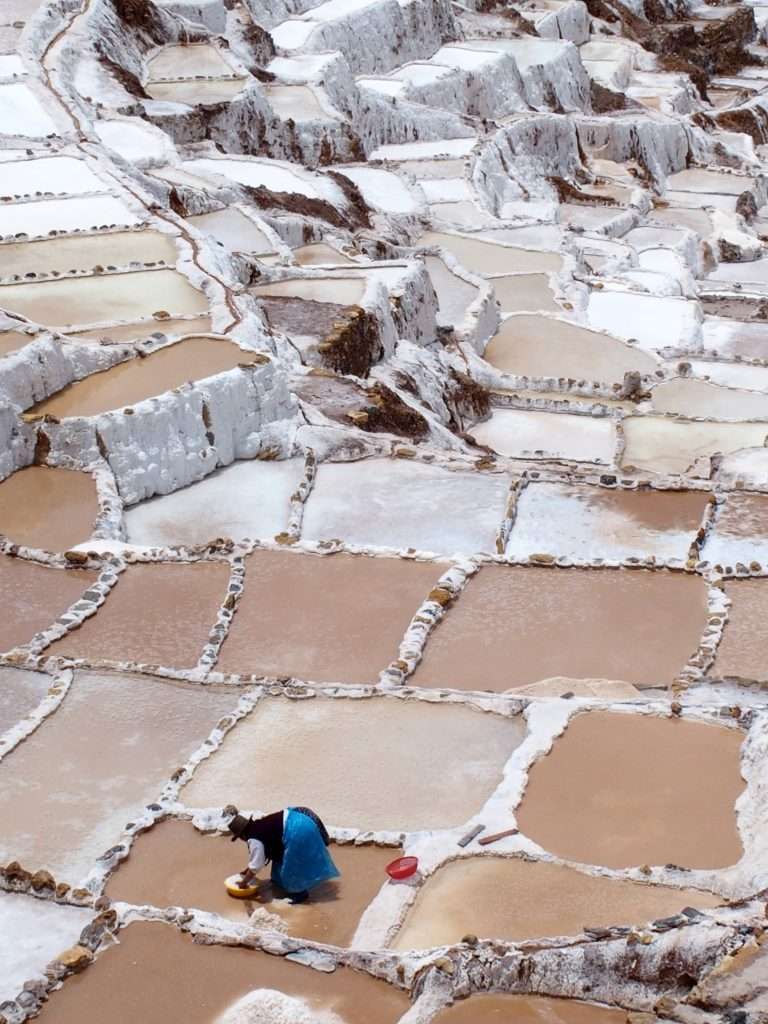
Travelers from the following nations can enjoy this privilege: Antigua and Barbuda, Argentina, Barbados, Belize, Bolivia (Plurinational State of), Brazil, Canada, Chile, Colombia, Commonwealth of Dominica, Costa Rica, Ecuador, Grenada, Guyana, Honduras, Jamaica, Mexico, Panama, Paraguay, Peru, Saint Kitts and Nevis, Saint Lucia, Saint Vincent and the Grenadines, Suriname, Trinidad and Tobago, the United States of America, the United States of Mexico, and Uruguay.
There are no specific requirements to fulfill for the Tourist Visa Exemption Scheme. It offers a hassle-free way for eligible travelers to explore Peru.
As this is an exemption scheme, there is no need for travelers to complete an application. The process simply involves arriving in Peru for the allowed duration.
The Tourist Visa Exemption Scheme has no formal processing time, as it is applied automatically upon entry to the country.
This visa exemption comes at no cost, making it an attractive option for tourists wanting to explore the wonders of Peru.
T ourist Visa
For those entering Peru for tourism or who come from visa-exempt countries, a tourist visa provides an opportunity to extend their stay beyond the initial visa-free period. Because of its generous stay duration, this is the closest you can get to a Peru digital nomad visa.
Tourists entering under visa-free agreements can enjoy a maximum stay of 183 days, except for nationals of the Schengen Area member states and associated countries who are permitted to stay up to 90 days within 180 days without a visa. Costa Rican and Panamanian citizens can stay for a maximum of 90 days per visit.
However, individuals from countries that are not visa-exempt must apply for a tourist visa to explore Peru further.
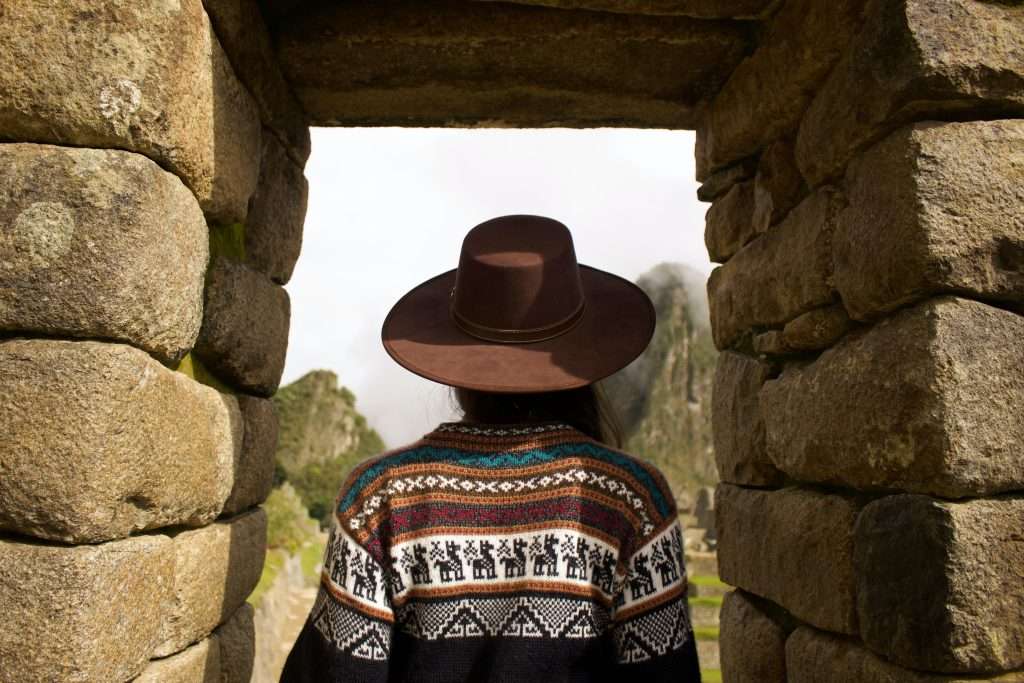
Requirements for tourist visas may vary depending on your country of origin. In the case of Canada, applicants should complete the following steps:
- Download and fill out the Form DGC005 .
- Present your current passport or Canadian Permanent Resident Card if you are from Canada.
- Provide a reservation or round trip ticket.
- Include either a hotel reservation, a reservation for a tourist package, or a letter of invitation.
- Submit two (2) photographs of 35 x 45 mm, taken within the last six months. The photos should feature a plain white background with your face and shoulders centered and squared to the camera. Your eyes should be open, clearly visible, and looking straight at the camera, with a closed mouth (no smiling or frowning). Avoid wearing glasses, hats, or head coverings, except those worn daily for religious beliefs.
- Present sufficient financial documents to demonstrate economic solvency.
- Pay the required consular fees.
The application process varies depending on your country of residence. Here are some general guidelines:
- In Canada , you can either book an in-person appointment or send your application by mail.
- In Australia , the entire process can be completed digitally by sending scanned documents to the Peruvian consulate’s email.
- In the US , it is preferable to schedule an appointment due to the requirement for a personal interview.
The processing time for tourist visa applications generally ranges from 15 days to 3 weeks, depending on your country of origin.
The cost of applying for a tourist visa is 45 CAD (Canadian dollars) or 32 USD (United States dollars).
Rentista Visa
The “Rentista Visa” is one of the most popular residence visas in Peru, particularly among retirees and even remote workers with passive income. It is designed for individuals who can demonstrate a source of income or financial means to support themselves without engaging in work within the host country. The term “rentista” is derived from the Spanish word for “pensioner” or someone who receives regular income, such as a pension or retirement funds.
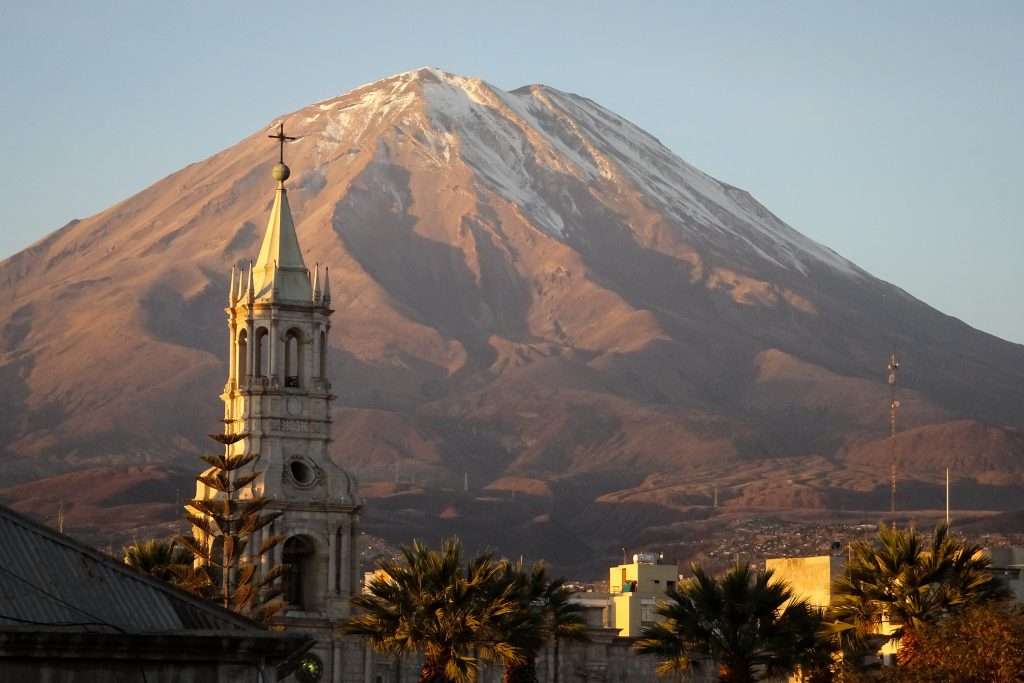
The Rentista visa in Peru offers the possibility of citizenship eligibility after residing in the country for two years, provided a minimum of 183 days are spent in Peru each year and proficiency in Spanish is demonstrated.
Alternatively, applicants not pursuing citizenship can opt for permanent residency after three years, allowing indefinite living in Peru; however, work is not permitted.
The application process is quick, with no investment or donation requirements.
To retain the visa, spending at least six months in Peru annually is necessary. Holders are granted a Carné de Extranjería, facilitating local banking, mobile phone purchase, and internet access.
To qualify for a Peru Retirement Visa, applicants must demonstrate a source of passive income amounting to at least $1,000 per month ($12,000 per year) or its equivalent in another currency. This monthly income must originate from outside of Peru and enter the country through a bank. Employment income or salary is not considered as passive income; it must be a consistent and permanent income source.
Additional eligibility criteria include:
- Residing outside of Peru to acquire immigration status.
- A clean police, criminal, and judicial record in both your country of origin and any other place where you previously held residence.
- If you intend to include your spouse and dependents, their age must be under 25 years. However, please note that the minimum required income increases by US$500 per dependent.
The necessary documents and steps to apply for a Rentista visa are as follows:
- Complete and sign the immigration quality application form .
- Provide a simple copy of your valid passport, which should remain valid for at least another 12 months when beginning the application process.
- Obtain a document from the competent authority that certifies the absence of a judicial, criminal, and police record in your country of origin, as well as any place where you resided for the five years preceding your entry into Peru.
- If you plan to include family members on the Rentista visa, you must furnish apostilled marriage certificates or birth certificates for your children.
- This may include providing a simple power of attorney, registering the power of attorney in Public Registries with a validity of the last 30 calendar days, or presenting a consular power of attorney apostilled or legalized by the Ministry of Foreign Affairs.
- Present a current identity document (ID) if you are Peruvian or a temporary immigration card or immigration card if you are a foreigner. In the latter case, you must also attach a simple copy of the document.
- If you are a foreigner with migratory status in Peru, you should possess a valid stay or residence permit.
For income from national sources, you must also provide:
- A simple copy of the document verifying the receipt of the monthly permanent income by the applicant.
For income from foreign sources, you must also submit:
- A simple copy of the document from the country where the income originates, demonstrating that the applicant receives a minimum permanent net income of US$1,000 monthly.
- An affidavit indicating that the money enters Peru through a banking or financial entity supervised by the Superintendency of Banking, Insurance, and AFP (SBS).
To apply for the Digital Nomad Visa in Peru, follow these steps:
- Payment : You’ll need to pay a fee of 105.60 soles, using code 07567, at any agency of the Banco de la Nación branch. Keep the receipt as you’ll need the information for your application. Attach the required documents in a single PDF file.
- Translations and Police Clearance (If Applying in Peru) : If applying within Peru, get your documents translated to Spanish. Consider obtaining an Apostille and using government-approved translators from the Peruvian government website. Also, obtain a “Ficha de Canje Internacional” or police clearance from Interpol in Peru.
There are two application methods:
- Overseas Apply for “Solicitud de calidad migratoria rentista” on Agencia Digital if you’re outside Peru and can’t enter visa-free. You’d need to pick up your visa at a Peruvian consulate, but this process may lack detail.
- Within Peru While the initial steps can be done online, you’ll need to be in Peru for the later stages. Apply online through the Agencia Digital . Remember that this platform is in Spanish, and using translation programs is not recommended.
Once you have it open, select Extranjero

Complete the process, including a detailed questionnaire and document uploads. You’ll eventually reach the “Pago por derecho de tramite” page, where you must enter bank receipt information, including the receipt number, verification code, and date of the transaction.
After completing these steps, you will get to the “Registro de Solicitud de Cambio de Calidad Migratoria” which confirms your successful application. Be sure to download and/or print the form and keep it safe.
Your application will have a unique file number, sometimes referred to as “Numero de expediente” or “Numero de tramite,” which consists of two letters (typically an abbreviation for the Migraciones office where you applied, such as LM for Lima) and nine numbers.
Additionally, the application date and a verification code will be displayed on the first page, underneath the signature/fingerprint field. Afterward, you’ll receive confirmation and your file details.
You can check the status of your application on Agencia Digital or access your Buzon Electronico . Once approved, arrange to get your biometric data taken and you will receive a notification about your visa status. If approved, you’ll be asked to collect your Carné de Extranjería.
For a more comprehensive guide, you can refer to this step-by-step instruction .
The processing time for a Digital Nomad Visa application is approximately 30 business days. However, in reality, it often takes 2-3 months to receive an official notification of visa approval.
To apply for the Digital Nomad Visa, you’ll need to remit a fee of 105.60 soles to Banco de la Nacion, a Peruvian bank.
Remote workers and expats are increasingly drawn to Peru for a multitude of reasons, including:
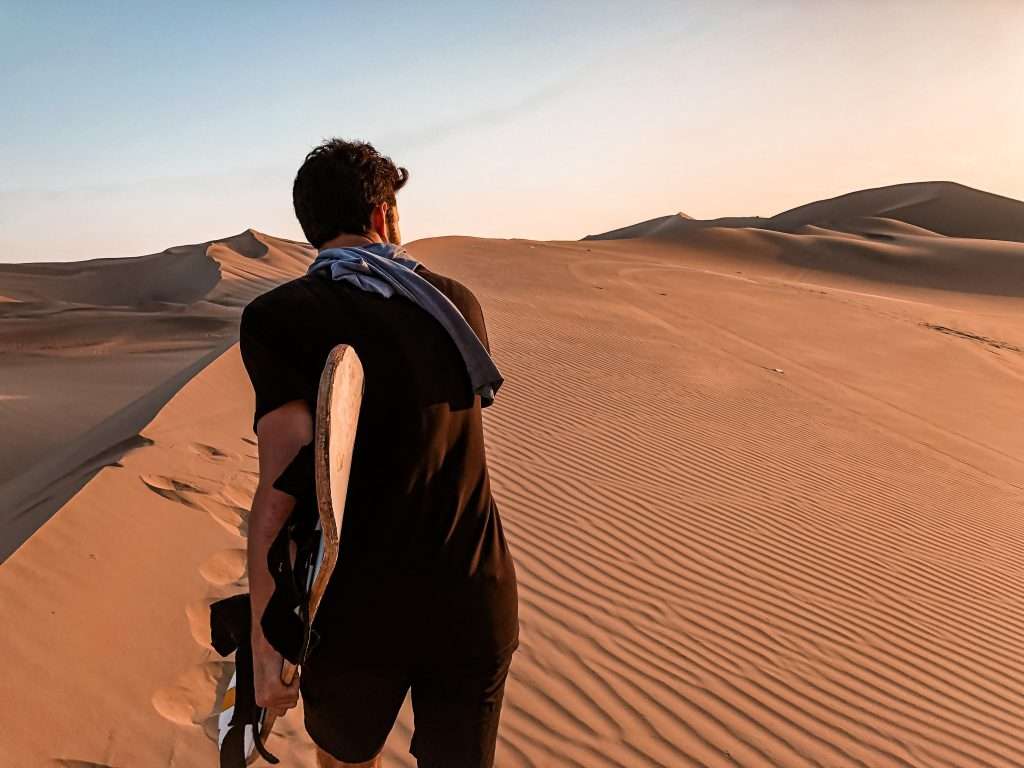
- Adventure and Exploration Peru is an adventure playground. You can explore the famous Inca Trail , go surfing by the coast, and do lots of outdoor activities in your free time.
- Affordable Living Living in Peru doesn’t cost a lot. It’s one of the cheapest places in South America , where you get a good life without spending too much.
- Great Food Peru is celebrated as the world’s culinary capital. Its food scene is a delightful fusion of indigenous ingredients and diverse culinary traditions. The famous ceviche, a zesty seafood dish, is just one example of the mouthwatering offerings that await your taste buds.
- Diverse Climates Peru’s climate spans from the arid deserts of the coast to the subtropical rainforests of the Amazon basin. This climatic diversity means you can experience everything from warm, sun-soaked summers to snowy winters, providing a little something for everyone.
- Rich Culture Peru’s cultural richness is a result of its intricate blend of Hispanic and indigenous influences. Music and dancing are a big part of life, and each region has its own style.
- Beautiful Nature Peru has stunning natural places. You can see deserts, rainforests, mountains, and volcanoes. If you love the outdoors, Peru is perfect.
- Warm Hospitality Peruvians are renowned for their warmth and openness to newcomers. The welcoming atmosphere and friendly nature of the people add immeasurably to the overall appeal of life in Peru. Whether you’re in bustling cities or remote villages, you’ll find the same open-hearted spirit.
- Good Healthcare Peru has good and affordable healthcare, which is important for retirees and expats looking for quality medical services.
All these things make Peru a fantastic choice for remote workers and expats who want an affordable, tasty, diverse, and friendly place to live.
Need to Always Stay Connected?

We recommend using the Airalo eSIM while traveling as a digital nomad. Airalo is the world’s first eSIM store that solves the pain of high roaming bills by giving travelers access to eSIMs in over 200+ countries.
Peru is a great place to be in but be aware of potential drawbacks as well:
- Language Barrier While Spanish is the official language, not everyone in Peru speaks English fluently. If you’re not proficient in Spanish, communication can be a challenge, especially in smaller towns.
- Bureaucracy Dealing with government agencies and paperwork can be slow and cumbersome. It’s essential to have patience when navigating bureaucratic processes, such as visa applications.
- Traffic and Transportation In larger cities like Lima, traffic congestion can be a significant issue. Public transportation can be crowded, and road conditions in some areas may not be ideal.
- Safety Concerns Petty crime, such as pickpocketing, is common in crowded areas and tourist destinations. While violent crime rates are relatively low, it’s crucial to stay vigilant and take necessary precautions.
- Healthcare in Rural Areas While urban areas offer excellent healthcare facilities, rural regions may have limited access to quality medical care. Expats with specific healthcare needs should consider proximity to medical facilities.
- Altitude Sickness If you plan to live in high-altitude areas like Cusco or Arequipa, you may experience altitude sickness. It’s advisable to acclimatize slowly to avoid health issues.
- Income Disparities Peru faces economic disparities, and poverty can be visible, particularly in rural areas. The cost of living might be low for expats, but many locals struggle with economic challenges.
- Environmental Concerns Pollution can be an issue in some urban areas, affecting air quality. It’s essential to consider environmental factors when choosing your place of residence.
- Cultural Adjustment Adapting to a new culture and its customs can be challenging. While Peruvians are generally welcoming, cultural differences may take time to get used to.
- Natural Disasters Peru is prone to natural disasters like earthquakes and flooding. Being prepared and informed is vital, especially if you live in areas susceptible to such events.
Despite these drawbacks, many expats have found a fulfilling life in Peru by taking these factors into account and making the necessary adjustments.
Peru offers several cities and regions that are ideal for remote workers and expats due to their unique combination of affordability, lifestyle, and amenities:

- Lima The capital city, Lima, is the country’s economic and cultural hub. It provides a bustling urban environment with a wide range of housing options, international cuisine, and excellent healthcare facilities. Neighborhoods like Miraflores and Barranco offer a vibrant expat community, making it a convenient choice for remote workers.
- Arequipa Known as the “White City,” Arequipa combines a rich cultural heritage with a more relaxed pace of life. The city boasts beautiful colonial architecture, a pleasant climate, and a lower cost of living compared to Lima. It’s particularly appealing to those who prefer a smaller, less hectic city.
- Cusco If you’re looking for a unique and historically rich setting, Cusco is an excellent choice. The former capital of the Inca Empire offers stunning mountain views and access to cultural sites like Machu Picchu . While it’s a bit more touristy, it’s a great base for digital nomads who love history and nature.
- Cusco Sacred Valley Located near Cusco, the Sacred Valley is an attractive option for those who want to immerse themselves in the Peruvian Andes. This peaceful area offers a serene environment, excellent hiking opportunities, and a tranquil lifestyle.
- Trujillo This coastal city provides a quieter atmosphere and a lower cost of living. With beautiful beaches nearby and a strong historical presence, Trujillo is an emerging destination for remote workers.
- Huanchaco Just north of Trujillo, Huanchaco is a beach town that combines surf culture with a laid-back lifestyle. It’s ideal for those who want to work by the sea and enjoy a close-knit expat community.
- A jungle city (e.g., Iquitos) For those who prefer a more adventurous setting, a city in the Amazon jungle can offer a unique experience. Iquitos, for instance, is the largest city in the world inaccessible by road. It provides a different way of life close to the Amazon rainforest.
When choosing a place to live as a remote worker in Peru, consider factors like climate, cost of living, and proximity to essential amenities. Each location has its charm and unique offerings, so it ultimately depends on your lifestyle preferences and work requirements. Be sure to visit these places to get a feel for what suits you best before making a decision.
Peru provides various visa options for remote workers and expats looking to reside in it. The tourist visa suits those seeking short stays, while the Rentista visa offers a path to long-term living. The possibility of acquiring citizenship after two years of continuous residence is an appealing prospect for those aiming to make Peru their permanent home.
Whether you’re attracted by Peru’s affordability, diverse climates, delectable cuisine, or the, breathtaking landscapes, there’s a visa choice that aligns with your needs. If anything, the tourist visa alone is already generous with its 183 day stay limit.
Ultimately, the choice of visa depends on your specific circumstances, and it’s essential to carefully consider the requirements, benefits, and limitations of each option.
Can I have multiple visas?
The Peruvian visa recognizes dual citizenship, so yes you can
Should I apply for a tourist visa or rentista visa?
It depends, if 183 days is enough for you in a year, a tourist visa will do just fine but if you intend to stay longer than that then a rentista visa is a good option. Although it is important to note tha you will lose your rentista visa if you do not meet the residency requirements.
Does Peru have a digital nomad visa?
Peru does not have digital nomad visa, but their tourist visa offers a maximum of 183 day stay, which is generous. The other option is their rentista visa whose requirements are not as strict as most countries’ digital nomad visas or alternative visas.
How much money do they expect to be in your bank account?
For the tourist visa, the government is mostly concerned whether you have enough funds to meet the minimum cost of living in the country. For the rentista visa, they do not generally check for the amount on your bank account but they need proof that you are a recipient to a monthly stipend or have a passive source of income of at least USD 1,000 per month
How long can I stay in Peru for each type of visa?
With the visa exemption, you can generally stay for up to 90 days. With the tourist visa, the maximum for any nationality is 183 days. However, if you get the rentista visa, you can stay indefinitely
Do digital nomads with rentista visa pay taxes in Peru?
If you’re granted a retirement visa in Peru, you are not liable to pay taxes in Peru. The amount of your permanent and monthly income originating from one of the sources mentioned above doesn’t matter. However, you may have to pay taxes in your country of origin.
Is it possible to extend your stay if you’re holding a visa-exempt passport?
Yes, you can extend your stay by applying for a tourist visa, however, the most you can stay in a calendar year is 183 days
How long does it take to complete the visa application process?
The tourist visa application is fairly straightforward and you can complete it within an hour.
However, the rentista visa requires more time and it requires at least two hours (appointments not included). You can get legal help but immigration lawyers, legal consultants or tramitadores charge anything between US$500 up to US$1400 for a simple visa application
Can you apply for the Peru visa while abroad?
You can apply for the tourist visa while overseas, and the same goes for the rentista visa. However, it is recommended to be in Peru when applying for the rentista visa.
Is it possible to bring a partner or children with the approved rentista visa?
Yes you can, although you’ll need to have an show that you have a higher minimum required income for each dependent
Related Posts

Ecuador is becoming a popular choice for digital nomads with tourist arrivals doubling in 2022 compared to the previous year. For those fortunate enough, a visa exemption might suffice. However, those…
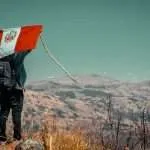
Are you wondering, "Is Peru Safe?" while planning your next adventure in this captivating South American destination? Peru, the enchanting third-largest country in South America, beckons with its iconic attractions,…

Peru is a country with diverse geography and climates, but this does not mean that it has great weather all year round. As a rule of a thumb, the best…
Leave a Comment Cancel reply
Save my name, email, and website in this browser for the next time I comment.
Destinations
Remote work.
© Half Digital Nomad
Ministerio de Relaciones Exteriores del Perú
- Formularios
- Asistencia Legal y Humanitaria
Barra de vínculos superior
- Registros Civiles
- Trámites Notariales
- Visa Requirements for Foreign Nationals
- Asistencia Consular
- Redes de Científicos Peruanos
- Solicitud Acceso a la Información Pública
Inicio rápido
- About Us / Sobre el Consulado
- Community Activities / Actividades de la Comunidad
- Attention on Saturdays / Atención los Sábados
- Honorary Consulates / Consulados Peruanos a cargo de Cónsules Honorarios
- Consulados Itinerantes
- Closed on Holidays / Días no Laborables
- Links of Interest /Enlaces de Interés para los peruanos en el Exterior
- Peruvian Gastronomy/Gastronomía Peruana
- Job opportunities / Oportunidades Laborales
- Frequent Questions / Preguntas Frecuentes
- Contact Us / Contáctenos
Issuance of Tourist Visa
- Passport with a minimum validity of six months after expected date of arrival to Peru.
- Personal interview which can be scheduled after presenting the rest of the documentation at the Embassy premises.
- Copy of Aadhar Card.
- Photocopy of the front and back sides of passport.
- Two ( DGC 005 ) forms duly typed or handwritten, in block letters. In addition, the applicant MUST submit a valid email ID and phone number registered in their name. Submission of a phone number that does not belong to the applicant is not allowed, except for children.
- Three recent coloured, passport-size photographs (4.3 X 3.5 cm) with white background. The face size should cover between 70% - 80% of the photograph.
- Cover letter duly signed by the applicant.
- If employed, the applicant must present a non-objection certificate furnished by the employer, indicating the date they joined the organization, as well as the purpose and the time of their stay in Peru.
- Round-trip flight itinerary to Peru.
- Day-by-day detailed activities while in Peru.
- Hotel reservation(s) in Peru.
- Proof of financial solvency, e.g. bank statements, fixed deposits. These are required even if the trip is sponsored.
- Personal Income Tax Return (ITR) of Form 16 (1 year), if applicable.
- Sponsor in Peru or India should present a guarantee letter attesting that he or she will be responsible to bear some or all costs of boarding and lodging of the applicant, or repatriation, if needed.
- Valid identification document of the sponsor, e.g. Peruvian DNI, Aadhar card, Passport or any other valid national identification document.
- Proof of financial solvency of the sponsor, e.g. bank statements, fixed deposit.
- In addition to the abovementioned documents, nationals of Bangladesh, Nepal and Sri Lanka are required to furnish a police clearance certificate.
- Visa applications may ONLY be submitted and processed at the Embassy of Peru in New Delhi. The Embassy accepts submissions of documents at its premises by the applicants themselves, except in the case of minors. Any exemptions to this may only be evaluated on a per case basis. The Embassy does not charge any additional fees beyond the official visa cost.
- Applicants may approach the Embassy premises between 10:00-12:00 hrs from Monday to Friday, except Government Holidays, as communicated by the Department of Personnel and Training ( https://dopt.gov.in / ).
- Submission of a complete visa file will be acknowledged by an email, containing a link to schedule an interview. Standalone documents sent by email or courier do not initiate the processing of a visa. Only a complete file submitted to the Embassy, acknowledged by email can be considered for the start of the visa processing time.
- The updated estimated time of tourist and business visa processing for Indian is of 7-10 working days, which are counted after the personal interview. Non-Indian nationals' applications may take around 10 additional working days to be processed.
- Once an application is submitted, the Consular Section of the Embassy of Peru reserves its right to request additional documents.
- The submission of a complete visa application and supporting documents does not guarantee automatic issuance of a visa. Each application is assessed individually by the Consular Section.
- Visas issued by the Peruvian government must be used within the first six months of being issued, otherwise they automatically expire. In this case you will be required to reapply for a visa.
- All tourist and business visas have a validity of 183 days and grant multiple entries to Peru.
- Queries related to issuance of visas are dealt through email. Please contact [email protected] in case of any queries.
- I have a valid US, Canada, United Kingdom, Australia or Schengen visa. ¿Do I require a visa to travel to Peru? No, as long as your other visa has a validity of at least six months, even if you have not used it yet. The rules do not specify the visa category that enables this exemption (e.g. tourist, business, transit, etc.).
- ¿Do I require a transit visa to travel to Peru? No. Peru does not issue transit visas. An Indian national may transit through Peru en route to a third country so as long he or she does not leave the international area of the airport.
- I am an Indian national. ¿Can I obtain a visa on arrival to Peru? Peru does not issue visas on arrival. Instead, there is a visa exemption for Indian citizens who hold valid US, Canada, United Kingdom, Australia or Schengen visas. When exempted from a Peruvian visa in this way, there is no “visa on arrival” payment to be done at the airport, upon arrival to Peru.
- I have to submit a visa application in another Embassy. ¿Can I present my application file without my passport? No. Withdrawing part or the totality of your documents while no decision has been made regarding your visa application will render the whole process void. You will need to resubmit your complete files at a later date.
- ¿Does Peru require Indians to present a yellow fever certificate to enter its territory? Peru does not require travellers to hold a valid yellow fever certificate.
- ¿What are the sanitary restrictions that Peru has enacted to curb the spread of COVID-19? A foreigner that wants to travel to Peru needs to show proof of having completed its full cycle of vaccinations abroad, as per the guidelines of his or her country of residence. For people (of any nationality) legally residing of India, this implies showing a CoWin certificate of full vaccination (2 doses). Peru recognizes all vaccines of the Indian vaccination drive. However, legal residents of Peru, whether Peruvian or foreigner, are required to have been inoculated with three doses of a COVID vaccine, whether in Peru or abroad. If you are not vaccinated, you may still travel to Peru by showing a negative PCR test result obtained less than 48 hours before your flight. Minors younger than 12 years old only need to be asymptomatic to board a flight to Peru. IMPORTANT: All travellers to Peru must complete this Health Affidavit before boarding the flight to Peru https://djsaludviajero.minsa.gob.pe/dj-salud/
- I not an Indian citizen but I reside in India. ¿Can I apply for a visa? Yes. However, the time to process your visa may be longer than usual due to additional verifications and permissions required to assess your application.
- I had a Peruvian visa but I was not allowed to enter Peru when arriving to the airport.¿ How is this possible? While a visa allows a person to travel to Peru, it is ultimately the decision of the Migratory authority at the airport whether to allow any one person to enter the country. The Embassy may not interfere with the decision taken by said authority.
- I want to work in Peru, ¿Can I apply for a visa? The Embassy requires special authorizations to process any visa type beyond tourism and business. Work visa applications are processed by the Superintendency of Migrations in Lima.
- ¿How much minimum balance do I need to have in my bank account to apply for a visa? There is no minimum balance requirement but you have to keep in mind that the issuing officer needs to be satisfied that your visit to Peru complies with the visa category description.
- ¿Can I get a visa for Peru from the Honorary Consulates in Mumbai, Kolkata, Bangalore or Chennai? No. you may only apply for a visa at the Embassy of Peru in New Delhi.
- ¿Which is the best route to go to Peru? The Consular Section is not in the capacity to recommend any one particular route to travel to Peru. You may explore options for travel using different engines online or by visiting a travel company.
- ¿What is the current weather in Peru? Peru has something for everyone in every season and every weather! You may explore different destinations by visiting https://www.peru.travel/en .

- Experiences
- Destinations
- The Company
- Photo Gallery
- How to Get to Peru from the Philippines: Full Guide

Peru is one of the most sought after options to travel in South America. The so-called Country of the Incas is recognized for its prevailing cultural expression, natural wonders, and historical attractions which fills it with countless adventures and mysteries for all ages and tastes. From the lush Peruvian jungle to the towering Andean mountains and the spellbinding coastal side, the Peruvian lands are a whole new world. For those looking to indulge their desire for meeting new places and disconnect from routine, Peru is the best destination. We are proud to say that our country offers different experiences for all types of travelers. Whether you’re looking to unwind your mind, look for spiritual guidance, exploring mountainous trails, or uncover the mysteries of Peru’s ancient civilizations, here you’ll find a new adventure in every corner. Therefore, we came up with this section to teach you the basics for planning your trip to Peru from the Philippines. We’ve answered the most frequently asked questions about travel planning to our country and added useful information regarding safety, transport, entry requirements, and more!
Is Peru safe for Filipino tourists?
Regardless of your nationality, Peru has developed a great tourism infrastructure. The famous Andean country receives over 4,4 million visitors per year , making it the 4th most visited country in South America. Likewise, crime in Peru has potentially decreased over the years though it is worth noting that as in every country, one must remain cautious and aware at all times. Petty crimes are a widespread problem in Peru, which is why we recommend to keep vigilant of your belongings and to stay in the cities’ touristy areas where the affluence of travelers is larger and national security is more compliant. Pick-pocketing and robberies are very common, be aware among crowds since thieves might create distractions to target you. However, we don’t mean to scare you off by pointing this out, but to show you the reality ahead when traveling abroad. That doesn’t mean that it could happen to you or that you’re traveling to a highly unsafe country, on the contrary, these are just precautions. In case of any inconvenience, there are government agencies specialized in tourism willing to assist you with any eventuality, such as the Tourist Police. The Tourist Police or Policía de Turismo in Spanish, is another wing of national security which provides assistance to foreign travelers, though it’s more likely to find them in larger cities rather than the most rural and remote areas of the country. However, the Embassy of Philippines in Lima also offers assistance and guidance for crime victims. Remember to fill your report with local police and then contact your embassy if necessary. Local authorities are responsible for investigating and prosecuting crime.
Best Way to Fly to Peru from the Philippines
The easiest way to get to Peru from the Philippines is by international flight, fares can range from 600 USD to 1,200 USD. Unfortunately, nonstop flights are not possible from the Philippines to Peru. However, most flights have connections in Europe, Asia and America. The travel hours from the Philippines to Peru could take up to 30 hours depending on the flight route and stops. There are many airlines that fly to Peru, among the most popular are: Turkish Airlines, KLM, and ANA. They all have connections with the Jorge Chávez International Airport in Lima and most flights to Peru depart from Manila Ninoy Aquino Intl. It is worth noting that there are 4 more international airports in Peru, though they have limited flight departures per week and for certain cities within South America. Therefore, Lima remains as the starting point for most travelers that wish to come to our country. According to national airports, there are 26 cities that offer domestic flights services including the aforementioned international airports. The most popular are in Cusco, Arequipa, Juliaca, Iquitos, Jaén, Huaraz, and Piura.
Peru Entry Requirements for Filipino Citizens
Throughout all our years of service, we’ve come across the same question: Do I need a visa to visit Peru from the Philippines? The answer is no, a tourist visa is not among the entry requirements for citizens of the Philippines. However, what the immigration office does require is having at least a 6 month validity remaining in your Philippine passport along with two empty pages for the entry/exit stamp. According to the Philippine Government, evidence of return or onward travel is required upon entry. Keep in mind that the length of your stay in Peru will be determined by the immigration officer upon entry and they may give you permission to stay up to 183 days. However, if you’re planning to stay longer than your stipulated time, you must request an extension through the Peruvian immigration office. If you overstay, some penalties will be applied. Important Note: Due to the Coronavirus outbreak many countries have been forced to implement new safety protocols and requirements to ensure public health within their territories. For more information about the current conditions to enter Peru, please read this blog .
Traveling to Peru with kids? Here’s what you should know...
- Children traveling with both parents are only required to have a valid passport. - Procedures are more complex when a child is traveling with one parent. However, no extra documentation is required if entering Peru as a tourist for less than 183 days. - For children planning to stay longer than 183 days a Permiso Notarial de Viaje will be requested upon exit.
Local Currency in Peru
The local currency in Peru is called “Nuevo Soles.” Banknotes come in denominations of 200, 100, 50, 20, and 10. Whilst coins come in 5, 2, 1, 0.50, 0.20, and 0.10 units. It is worth mentioning that counterfeit money is a current problem in Peru, which is why we highly recommend to double-check the change you receive at all times. Likewise, the 200 and 100 bills are hardly accepted. Therefore, it is preferable to carry small denomination bills during your trip. Unlike Philippine Peso, US Dollars are widely accepted in large establishments as shopping malls, hotels, restaurants, and others. However, don’t expect to pay with US dollars in small shops. We highly recommend exchanging your PHP to USD before your trip since this currency is difficult to exchange in Peru. You can also withdraw money from the ATMs though some fees may apply and the exchange rates may vary. For more information about the currency in Peru, make sure to read this informative guide .
Transport Options in Peru
If you’re wondering how to get around through South America’s 3rd-largest country, don’t worry, we got you covered! According to your needs, time, and the destinations you’d like to visit, there are different transport options.
1. Bus Travel For those looking for a unique experience through Peruvian lands, we highly recommend taking bus trips to the different attractions within your itinerary. However, it is worth mentioning that travel time and distance may be really long due to the extension of the country. Therefore, if you’re not willing to commit to +10 hour bus rides then this is not the option for you. We’d like to highlight that bus travel is the cheapest alternative to get around Peru, even if you’re traveling with the most luxurious services. Also, traveling by bus is considered a more enriching travel experience for many travelers that visit our authentic country. According to time-wise efficiency, bus rides through the coastal highway are faster than through the most mountainous routes. Bus conditions may vary according to the popularity of the destination, where the most battered buses are used on rural local routes. 2. Flights in Peru If you’re on a tight schedule, then we recommend you take a domestic flight to the main destination within your itinerary. That way, you’ll have more time to enjoy the attractions you’d like to visit. It is worth mentioning that plane tickets are significantly more expensive than any other transport option in Peru, especially during the high tourist season. However, if we talk about time efficiency, a flight from Lima to Cusco will take about 1.5 hours, whilst a direct bus ride could take up to 22 hours. There are different airlines that offer internal flights in Peru, among the most popular are: LATAM, VivaAir, Avianca, and Star Peru. 3. Train Travel For those who didn’t know, train travel is possible in Peru. However, the rail routes are limited to the main attractions of the Peruvian Andes, where the famous Belmond Andean Explorer connects Arequipa, Puno, and Cusco. This transport option is considered one of the most luxurious alternatives to travel around the country, though speed-wise it is significantly slower than train rides in Europe. But, the whole point is to explore and appreciate the beautiful scenery of the Andean highlands.
We know how important it is to know about the transport options when planning a trip abroad, therefore, we’ve come up with an entire section dedicated to the best way to travel through Peru .
When is the best time to visit Peru?
Ok, here’s the tricky part, the climate condition in Peru is totally different to the one in the Philippines since we experience a cold dry season between May and October in our country, whilst this Asian gem has a rainy season during these months. However, the weather in our country varies according to its regions since Peru’s geographical features influence the climate conditions of the coast, mountains, and jungle. For example, the Andean region is marked by two stationary seasons, a dry winter and a rainy summer. On the other hand, the coast has predominant arid weather, being Lima the exception though rain chances are nearly nill in this region. However, the jungle is characterized for having rainy tropical weather, being the rainiest months between January and April. Yes, we are aware that planning a trip through Peru according to its weather conditions is quite confusing but one thing is certain, no matter during what time of the year you decide to come, Peru will always provide a great experience. Most tourists prefer to travel during the “Dry Season,” which takes place between May and October. Some others prefer the Rainy Season since places aren’t overcrowded and fares are significantly lower. To help you make the right choice, we have prepared a whole blog about the weather in Peru .
Tips for Travelers
Now that you know the basics about planning a trip to Peru from the Philippines, here are some recommendations that you should keep in mind before venturing abroad. 1. Dealing with Altitude Sickness Most of Peru’s main attractions are located over 2,500 meters above sea level, which is why some tourists (to not say all of them) tend to experience dizziness, tiredness, headaches, and shortness of breath, these are the effects of Altitude Sickness. This condition can cause mild to severe reactions and could be highly dangerous if left untreated. Even if you’ve lived above 3,000 meters or at sea level throughout your whole life, altitude sickness can affect you anytime. However, we don’t mean to scare you off but to make things clear and easy for you:
- Keep yourself hydrated. - Avoid alcohol and smoking. - Don’t commit to physically demanding activities in the first 2-3 days. - Eat a light but high-calorie diet. - Drink Coca tea or chew Coca leaves.
Likewise, there are some medicines that help with altitude sickness like Diamox or Soroche Pills, which you can find in almost any drugstore in Peru. But, we do encourage you to find professional medical advice before taking any of these. 2. Learn a few Spanish words and phrases We want to clarify that it is not necessary to know Spanish to visit Peru. Foreign tourism is our country’s main economic asset, which means that you won’t have any trouble finding someone who can speak or understand English. However, it doesn’t mean that all Peruvians are English speakers. Therefore, we recommend you to know a few Spanish words and phrases that will surely help you get by when ordering food, asking for directions, or even getting a taxi ride. 3. Get a travel insurance Most travelers think that travel insurance only covers medical issues abroad, but this is wrong. We highly recommend getting travel insurance for the following reasons: Coverage of trip cancellations, stolen documents or credit cards, baggage delay or loss, medical repatriation, and more according to your needs. 4. Reasons to hire a Peruvian travel agency Planning a trip through Peru could be quite overwhelming without having the right information. Besides, taking care of the logistics involved in hotel reservations, tours, transport, and other services may get quite tedious. However, you don’t need to go through this alone since a local travel agency can assist you throughout the process. Unlike international travel agencies that have profited and exploited the same tourist attractions over the years, a Peruvian tourism company knows even more of what’s advertised on the internet. Therefore, if one of your goals is to travel off the beaten path then this is the way to start. Here in Viagens Machu Picchu, we care to provide an excellent experience through Peru, whilst still offering comfortable and exclusive options to our passengers. If you wish to learn more about our different travel experiences, make sure to check our Peru travel packages section.
Recommendations and Information
- All About Peru: Updated Information
- Tips for Hiking the Inca Trail to Machu Picchu
- Travel to Peru From USA: A Complete Guide
- Travel to Peru From Canada: A Complete Guide
- Travel to Peru From South Africa: A Complete Guide
- Travel to Peru From India: A Complete Guide
- Travel to Peru From Australia: A Complete Guide
- Travel From New Zealand to Peru: A Complete Guide
- Travel From the UK to Peru: A Complete Guide
- Travel From Ireland to Peru: A Complete Guide
- Travel From Japan to Peru: A Complete Guide
- Travel From Hong Kong to Peru: A Complete Guide
- Travel From Malaysia to Peru: A Complete Guide
- How to Go to Peru From Singapore: Full Guide
- Travel From Germany to Peru: A Complete Guide
- Travel From China to Peru: A Complete Guide
- Travel to Peru From the Netherlands: A Complete Guide
- Travel to Peru From Italy: A Complete Guide
- Travel to Peru From France: A Complete Guide
- Travel to Peru From Switzerland: A Complete Guide
- Travel to Peru From Belgium: A Complete Guide
- Travel to Peru From South Korea: A Complete Guide
- Travel to Peru From Sweden: A Complete Guide
- Travel to Peru From Qatar: A Complete Guide
- Travel to Peru From the UAE: A Complete Guide
- Travel to Peru From Russia: A Complete Guide
- Travel to Peru From Denmark: A Complete Guide
- Travel to Peru From Poland: A Complete Guide
- Travel to Peru From Israel: A Complete Guide
- Travel to Peru From Taiwan: A Complete Guide
- Travel to Peru From Greece: A Complete Guide
- Travel to Peru From Austria: A Complete Guide
- Travel to Peru From Ukraine: A Complete Guide
- Travel to Peru From Belarus: A Complete Guide
- Travel to Peru From Bulgaria: A Complete Guide
- Travel to Peru From Croatia: A Complete Guide
- Travel to Peru From Czech Republic: A Complete Guide
- Travel to Peru From Estonia: A Complete Guide
- Travel to Peru From Finland: A Complete Guide
- Travel to Peru From Hungary: A Complete Guide
- Viagens Machu Picchu | FAQs
- First Time Travel to Peru | FAQs
- Everything about Machu Picchu | FAQs
General information
We've detected unusual activity from your computer network
To continue, please click the box below to let us know you're not a robot.
Why did this happen?
Please make sure your browser supports JavaScript and cookies and that you are not blocking them from loading. For more information you can review our Terms of Service and Cookie Policy .
For inquiries related to this message please contact our support team and provide the reference ID below.
Peru changes its mind over tit-for-tat visa requirement for Mexico visitors
- Medium Text
The Reuters Daily Briefing newsletter provides all the news you need to start your day. Sign up here.
Reporting by Marco Aquino Editing by Marguerita Choy
Our Standards: The Thomson Reuters Trust Principles. New Tab , opens new tab
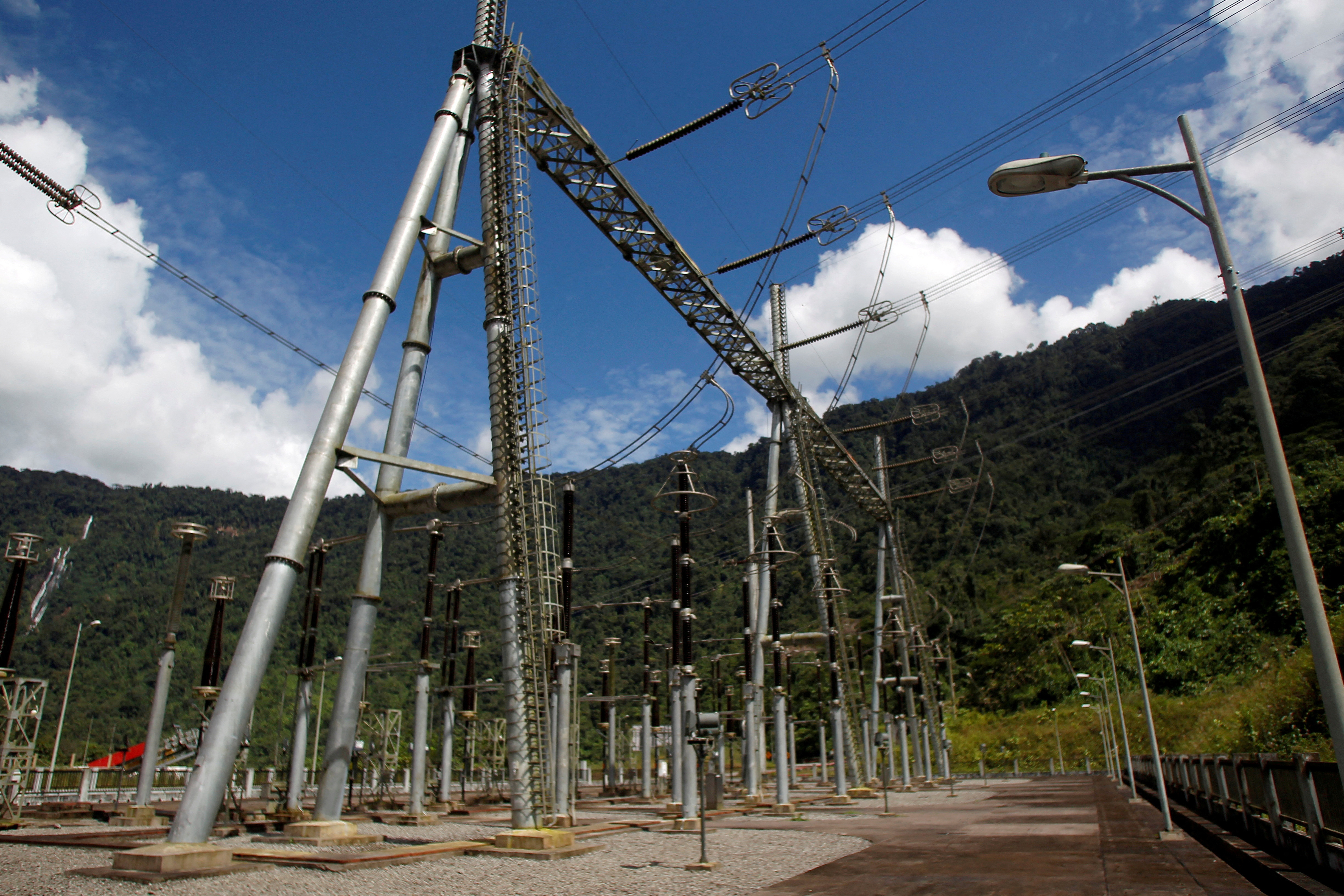
Venezuela's major opposition coalition will back Edmundo Gonzalez for president in July's election, its leadership said on Friday, after intense internal negotiations to determine who could take on President Nicolas Maduro.
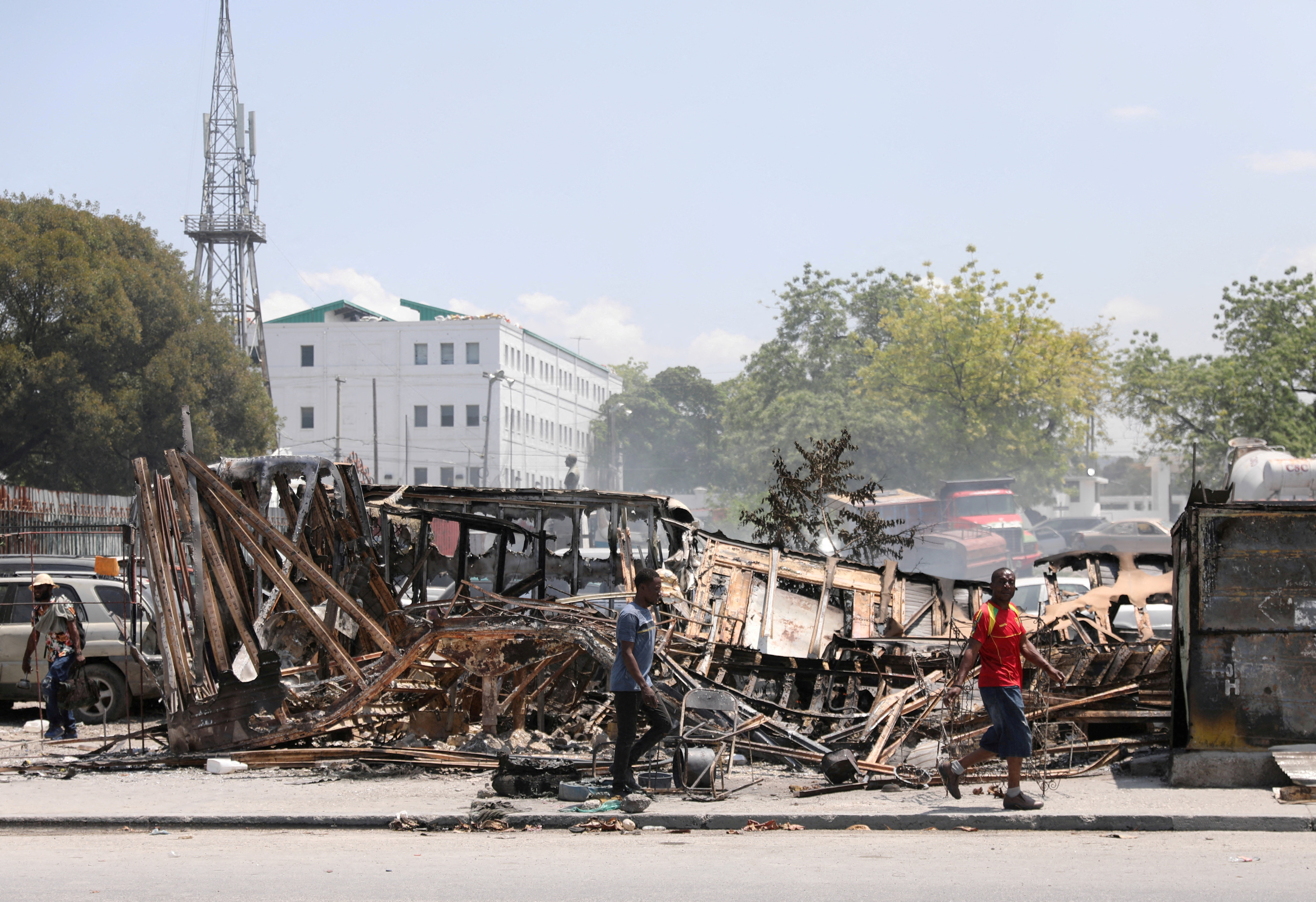
World Chevron
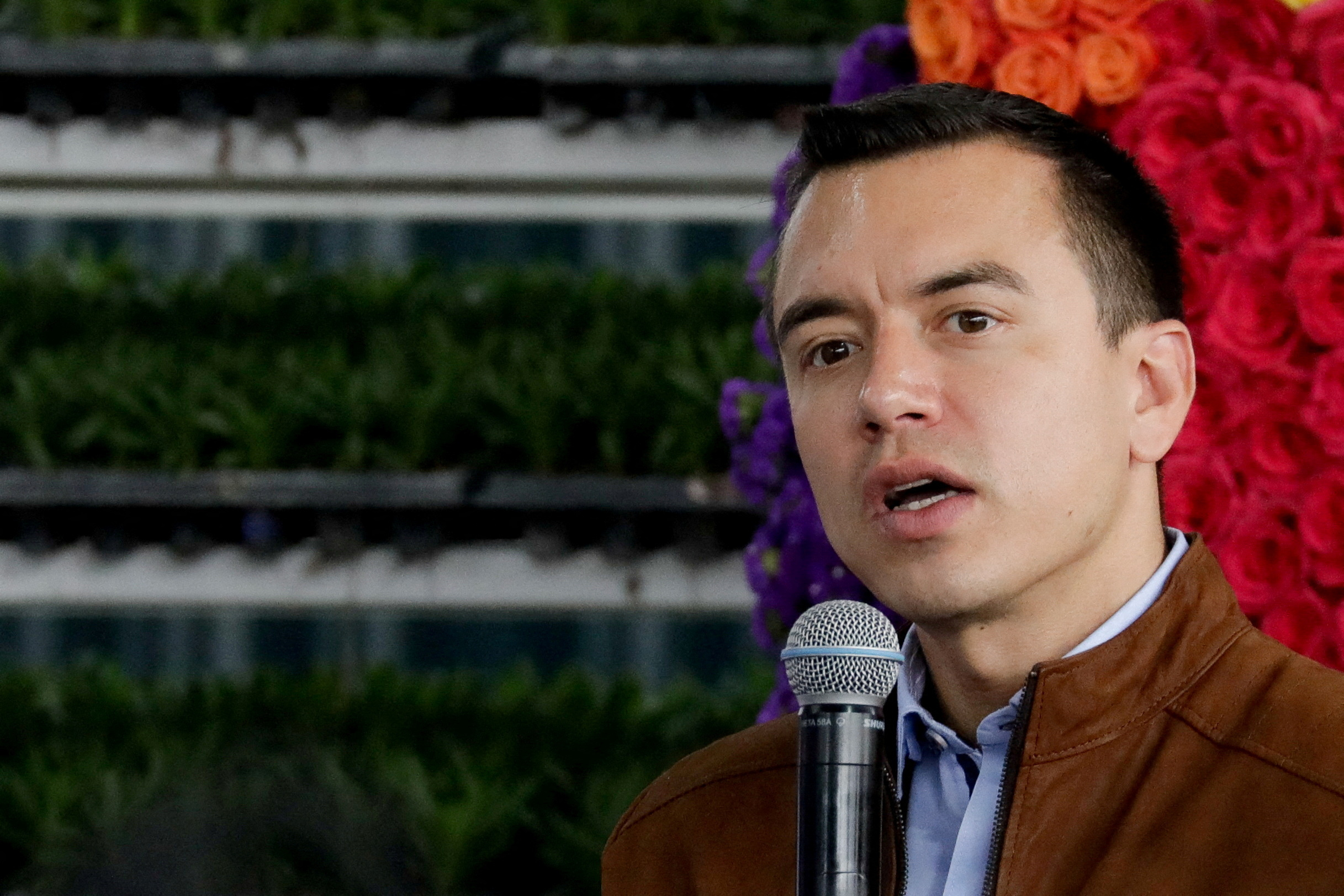
Ecuadorean President Noboa seeking approval for security measures in Sunday vote
Ecuadorean President Daniel Noboa is seeking voter support on Sunday for a raft of security measures in a national referendum, as he grapples with spiking violence that has made international headlines.
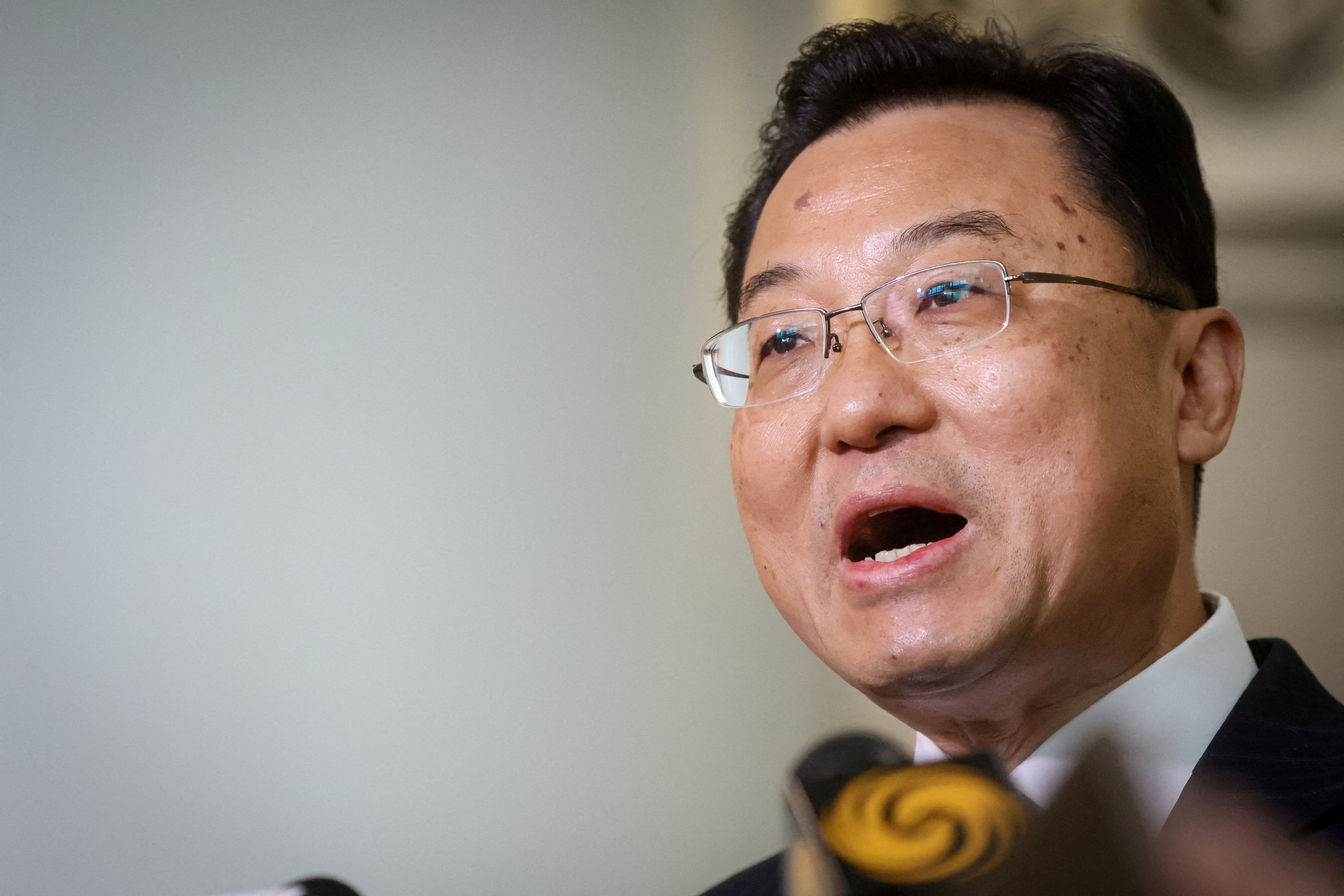
Turkish authorities have detained 36 people over suspected ties to Islamic State, in operations carried out across four provinces, Interior Minister Ali Yerlikaya said on Sunday.


IMAGES
COMMENTS
Call (+511) 200 1000. Visas and entry procedure. If you wish to stay longer for other reasons, such as business, studying or working, you need to request the relevant visa at a Peruvian consulate or embassy in your own country. Consulates and embassies. Directory of Peruvian.
Call us in Washington, D.C. at 1-888-407-4747 (toll-free in the United States and Canada) or 1-202-501-4444 (from all other countries) from 8:00 a.m. to 8:00 p.m., Eastern Standard Time, Monday through Friday (except U.S. federal holidays). See the State Department's travel website for the Worldwide Caution and Travel Advisories.
If you are a foreign person who wants to visit Peru for recreational or similar purposes and, due to your country of origin, you require a visa to enter the country, you must apply for a tourist visa at the Peruvian consular offices of the country where you are. Citizens of some Latin American and European countries do not need this type of visa.
Only tourist visas under 183 days will be considered. How can I get a visa to visit Peru? If you require a visa to visit Peru, you can apply for a Tourist Visa or a Business Visa. To apply, visit a Peruvian consulate or embassy in your country well in advance of your planned trip. Locate the nearest office here. Both visa types cost about S/112.
If you are a U.S. Citizen in Peru with an emergency, you can call our hotline at [011] (51-1) 618-2000. If you would like to contact the Cusco Consular Agency, you can call [011] (51-84) 231-474 or send an email to [email protected]. For complete contact information and hours, please click here.
Peru Visa Types. Depending on the reason behind your trip to Peru and the intended period of stay there are two types of visas for Peru: Temporary visas - mainly for those wishing to enter the country under tourism, business and other short-term purposes. The maximum stay under these visas is 183 days per year.
A Guide to Peruvian Visas. Peru is a very welcoming country and allows citizens of many countries to visit for touristic and recreational purposes visa-free. But as soon as you are planning to do business in Peru, stay longer, study, work, settle, or retire in the country, Peruvian law stipulates that you have the appropriate visa for it. Peru ...
Between 2008 and 2017, border hopping was an easy and popular way to "renew" your tourist visa. Back then, the Peruvian foreigner law stated that visitors can enter Peru for touristic, recreational, or health purposes for 183 days. It however didn't mention if the 183 days were per year or per visit.
If you overstay your visa you will be required to pay a fine of $1.50 per day, for every day you overstay. This must be paid in cash on exit. Ensure that you have the correct money as you leave, or you could find yourself having problems. There is a limit of $30,000 USD for entry and exit. Anything higher that $10,000 USD must be declared.
The entry procedure. When travelling to Peru (visa or no visa), you'll be given an embarkation card to fill in. This card - also called a TAM (for Tarjeta Andina de Migraçion) - will be given to you on your flight, or at the border crossing. While it's usually not checked, in principle you must have a return or onward ticket booked when ...
Foreign nationals, including those from the United Kingdom, United States, New Zealand and Canada , do not require a visa to enter Peru for tourism purposes. Eligible foreign nationals will be issued a free visitor permit in the form of a passport stamp upon arrival. The duration of a Peru visitor permit ranges between 30 to 183 days and is ...
Telephone: +1 (202) 833 9860. Office Hours: Monday - Friday, 9:00 AM - 5:00 PM. Website: https://www.embassyofperu.org. Consulate of Peru in Seattle, United States. 3717 NE, 157th Street Suite 100. Seattle, Washington 98155. Contact: Mr. Miguel Angela. Email: [email protected]. Learn all about Peru's Visa & Passport Requirements, as ...
Peru offers a variety of visas to cater to different travel purposes. Whether you're planning a vacation, a business trip, or looking to work remotely in Peru, there's a visa designed to meet your needs. There are many different types of Peru visas, each with its own set of requirements. The type of visa you need will depend on your purpose of ...
Visa requirements You do not need a visa to travel to Peru for tourism or short visits. If you are travelling for any other reason, check requirements with the Peruvian Consulate General in the UK .
Business Visa Application Requirements for a Peru Visa. You must provide your actual signed passport, including one copy of the personal information page of your passport. Your passport must: If your passport does not meet these requirements, please contact CIBTvisas at 800-929-2428 for further details.
There are two ways to extend Peru visa stay for tourism if you entered Peru with just a Peru TAM/ entry stamp, and without a sticker visa. Peru tourist stay can be extended for up to 90 days and up to the maximum allowed 183 days within a 365 days period. 1. Extend Peru visa online.
Here are some of the top things to know before traveling to Peru . 1. Peru's only international airport is in Lima. Until the Chinchero Airport (a 45-minute drive from Cuzco) is finished, all international air passengers to Peru will first touch land in the metropolitan area of Lima, via the Jorge Chávez International Airport.
Important Notice: Nonimmigrant Visa Processing Fee Increases. Effective June 17, 2023, the application fee for visitor visas for business or tourism (B-1/B-2) and other non-petition-based nonimmigrant visas, such as student and exchange visitor visas, increased from $160 to $185. The application fee for certain petition-based nonimmigrant visas for temporary workers (H, L, O, P, Q, and R ...
Visas. Tourist visa: not required for a stay of less than 90 days per 365 day period ... Student visa: required. If you entered Peru with a business visa, you must obtain a certificate from the Peruvian Ministry of the Economy to prove that all Peruvian taxes on income earned during the trip have been paid prior to leaving the country. The ...
The tourist visa is a popular choice for those looking to explore Peru for a shorter duration. It allows you to stay in the country for up to 183 days within a 365-day period. Whether you're an avid traveler or a digital nomad who prefers short stays, the tourist visa is a flexible option. Rentista Visa.
Visas issued by the Peruvian government are valid for six (06) months, counted from the date they were issued. Once this term expires, if a visa has not been used by its holder, it automatically expires. Upon the first entry of the visa holder to Peru, visas will have the same validity as the period of permanence shown in the endorsement.
The updated estimated time of tourist and business visa processing for Indian is of 7-10 working days, which are counted after the personal interview. Non-Indian nationals' applications may take around 10 additional working days to be processed. Once an application is submitted, the Consular Section of the Embassy of Peru reserves its right to ...
The easiest way to get to Peru from the Philippines is by international flight, fares can range from 600 USD to 1,200 USD. Unfortunately, nonstop flights are not possible from the Philippines to Peru. However, most flights have connections in Europe, Asia and America. The travel hours from the Philippines to Peru could take up to 30 hours ...
1:02. Peru will no longer require tourist visas for Mexican tourists, putting an end to a short-lived diplomatic move meant to reciprocate on similar restrictions imposed on Peruvian tourists ...
Peru will not require Mexican visitors to secure a visa to visit the South American nation, officials said on Wednesday, in a reversal after insisting last week it would match Mexico's newly ...